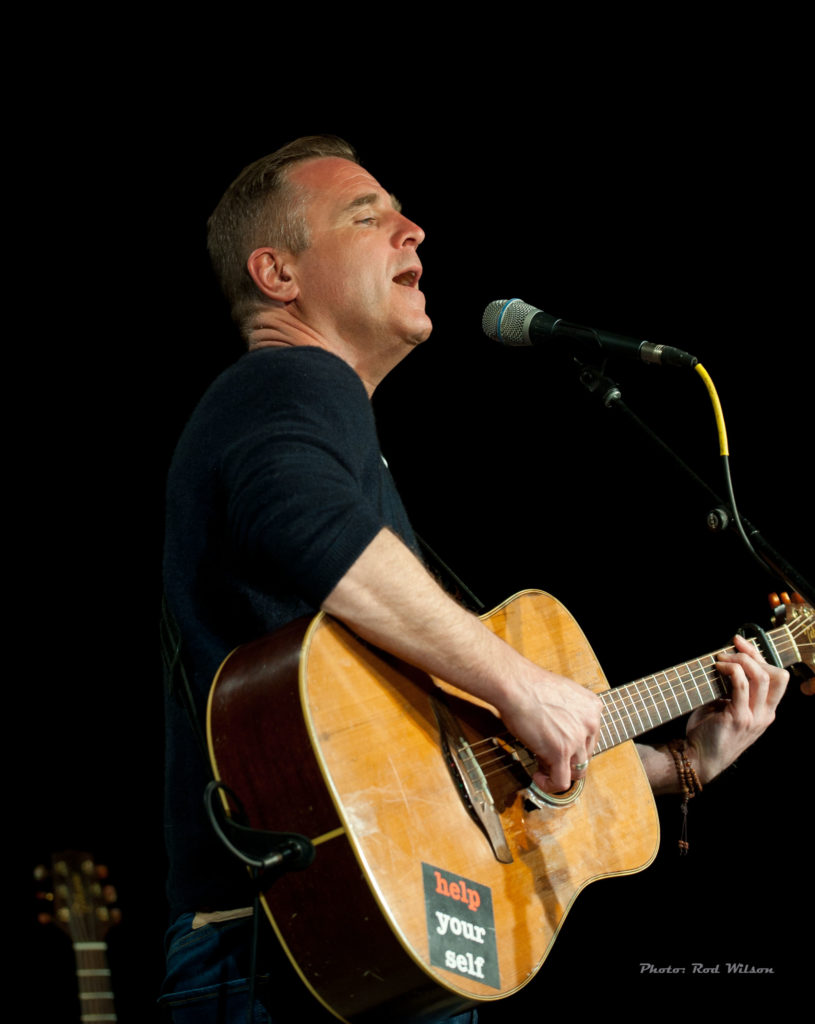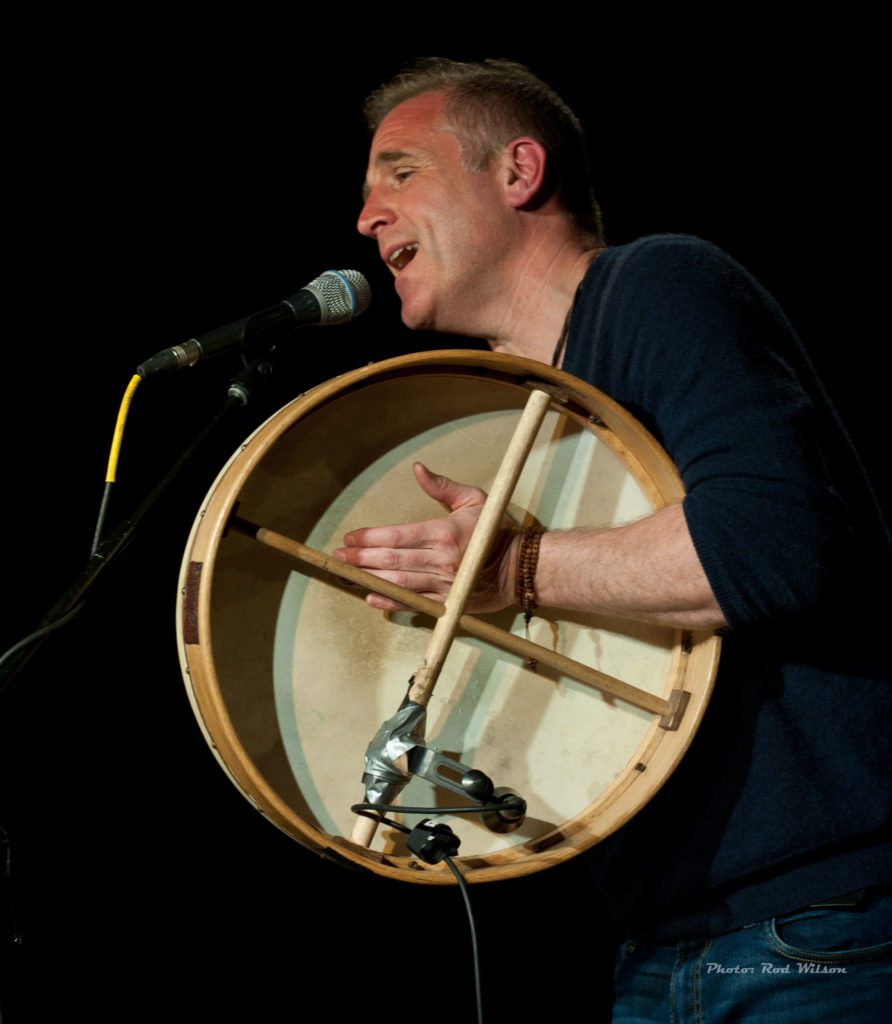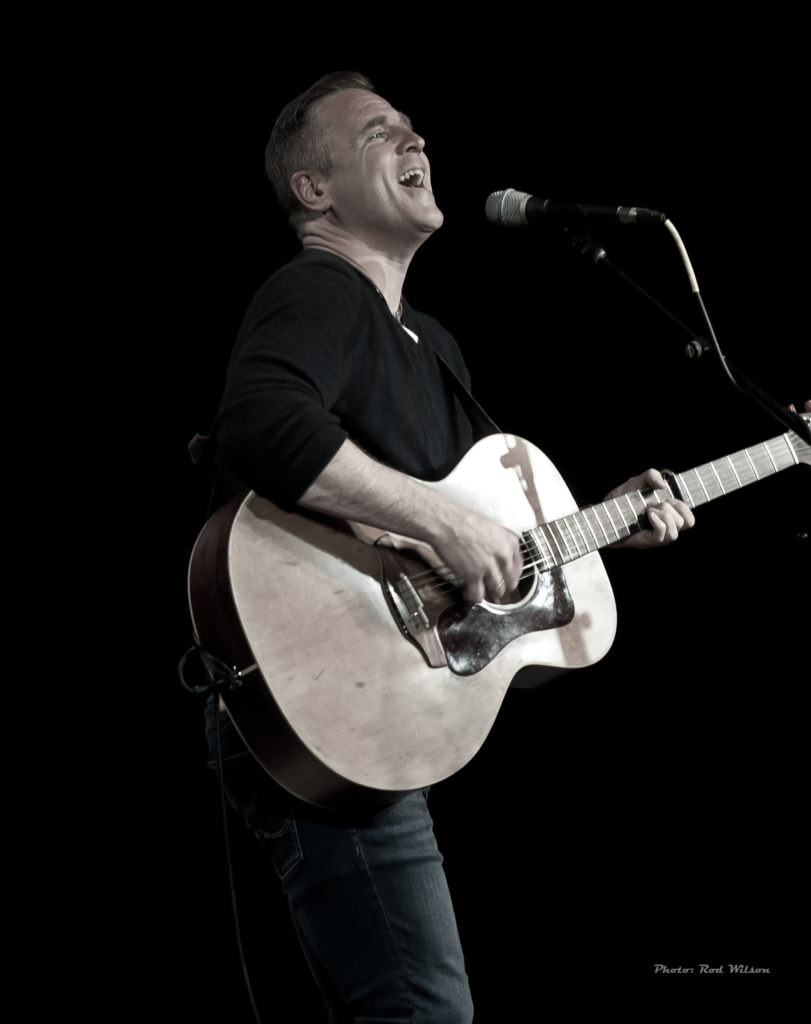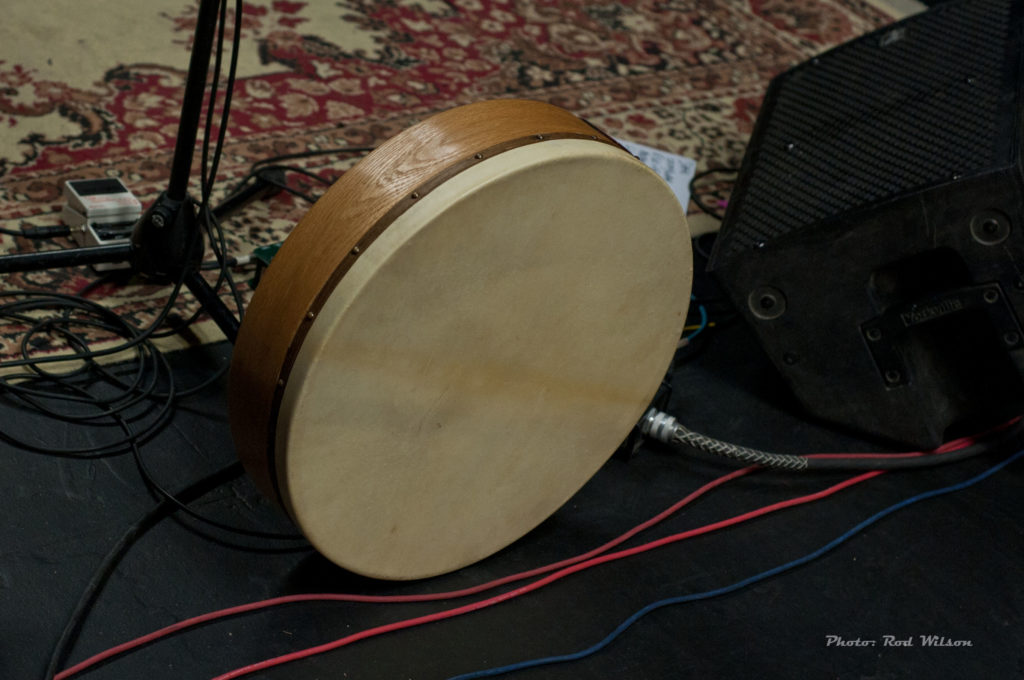Some years ago I made the big mistake of declaring that Liona Boyd was a musical light weight “who played like a girl”. It was to a group of women so you can imagine how that went over. In 1970 it was another era and in a sense it was also the end of an era. It was a time when women were beginning to step outside their subservient role and choosing to stand on their merits. 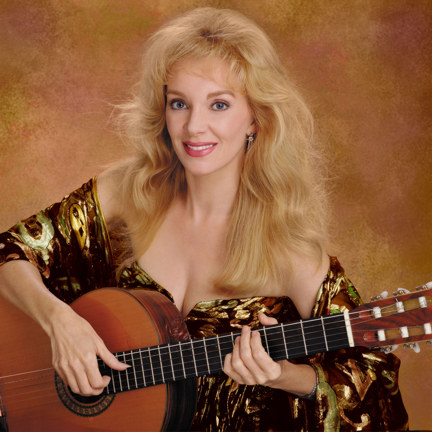 At the time Classical guitar performance was a masculine domain. Andre Segovia had established the Classical Guitar as a legitimate solo instrument and by the time Liona arrived on the scene he had passed on and the genre was dominated by the likes of Julian Bream, John Williams and Alirio Diaz. It was still very much a man’s world. There were female performers who came before Liona. Most notably there was the brilliant French guitarist Ida Presti who, with her musical companion and life partner Alexander Lagoya , has left us with a
At the time Classical guitar performance was a masculine domain. Andre Segovia had established the Classical Guitar as a legitimate solo instrument and by the time Liona arrived on the scene he had passed on and the genre was dominated by the likes of Julian Bream, John Williams and Alirio Diaz. It was still very much a man’s world. There were female performers who came before Liona. Most notably there was the brilliant French guitarist Ida Presti who, with her musical companion and life partner Alexander Lagoya , has left us with a 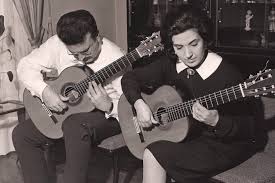 legacy of some of the best classical duo performances ever recorded. In no way did Ida “play like a girl”. For Liona it was an era in which female musicians were still expected to be overtly feminine, wear frothy dresses, high heel shoes and appear on stage with a somewhat submissive demure. Liona was a perfect fit for those expectations and although she had impressive technique her repertoire, in my opinion, was not adventurious. But, to be fair the repertoire of most classical guitarists of the day lacked a sense of adventure. New composers and compositions were just emerging and these would change the accepted notion of the standard repertoire.
legacy of some of the best classical duo performances ever recorded. In no way did Ida “play like a girl”. For Liona it was an era in which female musicians were still expected to be overtly feminine, wear frothy dresses, high heel shoes and appear on stage with a somewhat submissive demure. Liona was a perfect fit for those expectations and although she had impressive technique her repertoire, in my opinion, was not adventurious. But, to be fair the repertoire of most classical guitarists of the day lacked a sense of adventure. New composers and compositions were just emerging and these would change the accepted notion of the standard repertoire.
That all changed when Sharon Isbin arrived on the scene. In her own way Sharon was also a stunning looking woman but she did not conform to the “frothy” role expected of a female Classical Guitarist.
She wore practical, but fashionable attire, pant suits and the 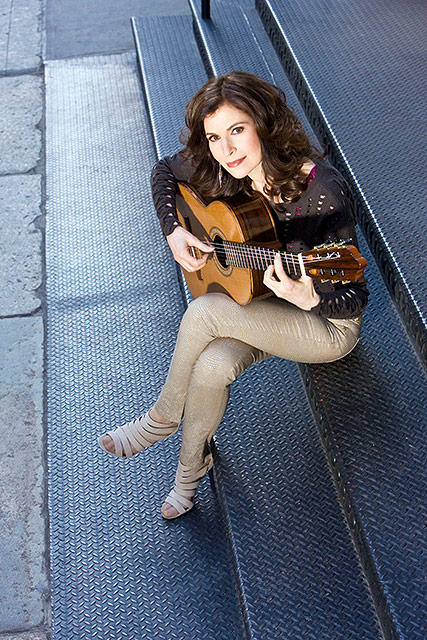 like, and she played with a drive and a passion that left most male Classical Guitarists in the dust. One of her first recorded efforts was a collection of the Bach Lute Suites that set the Classical Guitar world on its ear. The Classical Guitar world has never been the same since and the number of high caliber female performers that have followed in he footsteps is astounding. So much so that it is unfair to single out a performer for comment when there are so many young Classical Guitarists, male and female, out there. Having said that this performance of John Dowling’s Fantasia Number 7 by the very young Australian guitarist Alberta Khoury is of note.This young lady has studied with Sharon Isbin and it may account for her aggressive technical and musical approach. She has been criticized for playing at too fast a tempo but her dynamic and tonal control is above reproach. I believe at the time of this recording she was 16 years old.
like, and she played with a drive and a passion that left most male Classical Guitarists in the dust. One of her first recorded efforts was a collection of the Bach Lute Suites that set the Classical Guitar world on its ear. The Classical Guitar world has never been the same since and the number of high caliber female performers that have followed in he footsteps is astounding. So much so that it is unfair to single out a performer for comment when there are so many young Classical Guitarists, male and female, out there. Having said that this performance of John Dowling’s Fantasia Number 7 by the very young Australian guitarist Alberta Khoury is of note.This young lady has studied with Sharon Isbin and it may account for her aggressive technical and musical approach. She has been criticized for playing at too fast a tempo but her dynamic and tonal control is above reproach. I believe at the time of this recording she was 16 years old.
For guitarists who may be interested in such things she obviously tunes the G string down to F# and uses a capo on the third fret to emulate the register and sound of the Lute. Also note the guitar rest on the right knee. It is a device that seems to be gaining popularity with classical guitarists.
Just for comparison here is another version of the same piece by a fellow Australian guitarist Andrey Lebedev.
Just in case you may have thought that Alberta’s performance of the John Dowland Fantasia was a fluke here is her performance of the Prelude from Bach’s Lute Suite No.4.
So for all you wanna be rock and roll guitar gods out there here is a woman who doesn’t “play like a girl”.
@@@@@@@@@@@@@@@

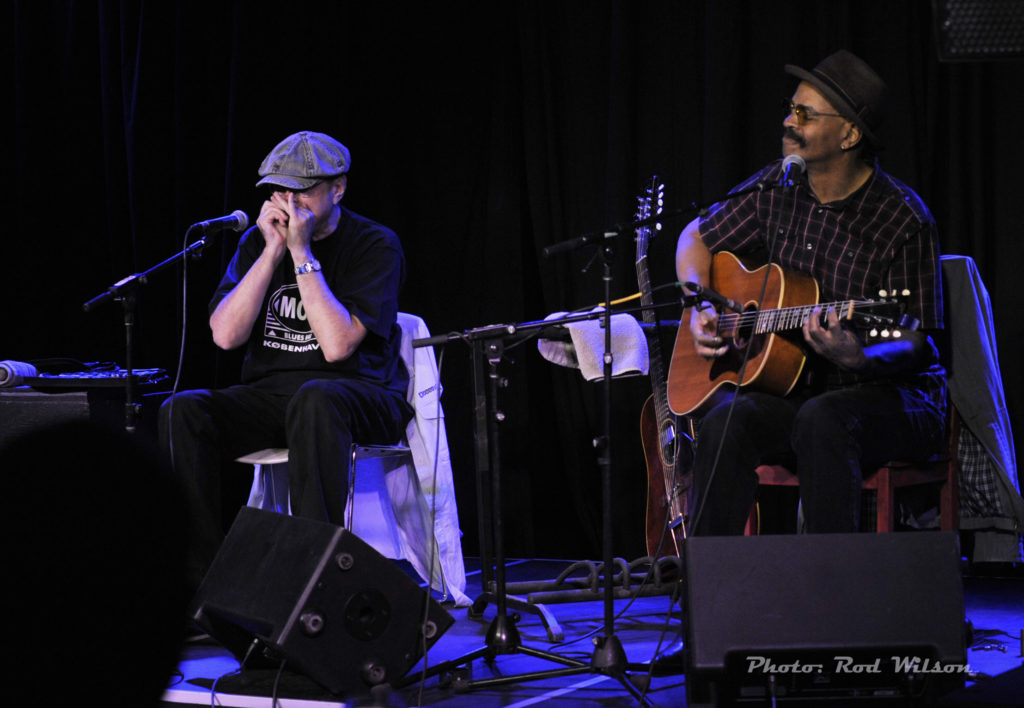
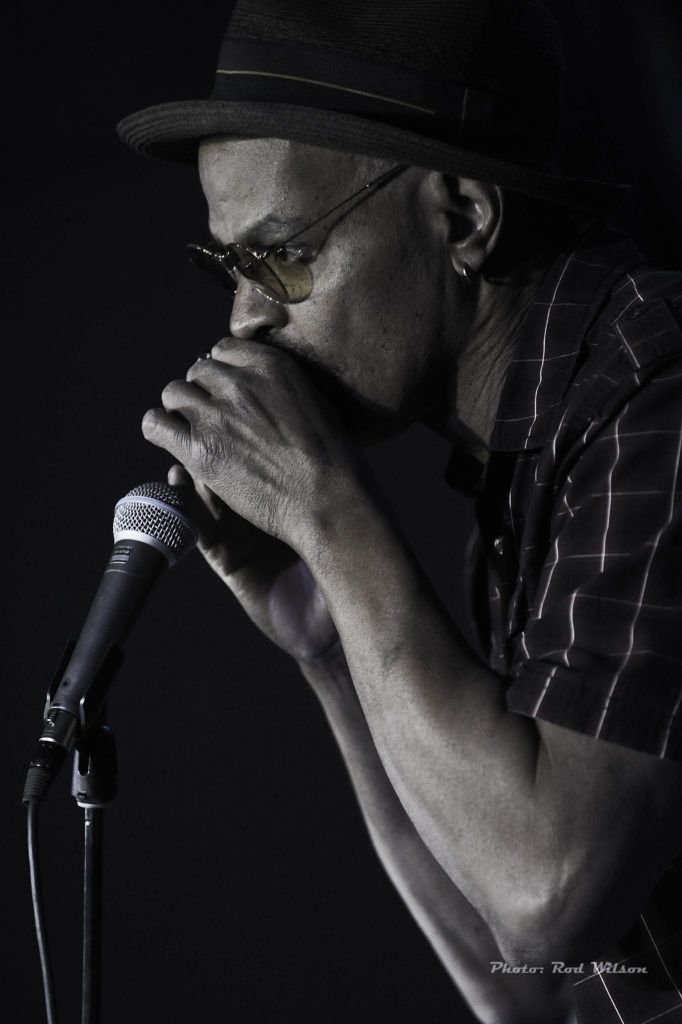 His sidekick for the project is an Italian and how an Italian could submerge himself so completely in a foreign American tradition is beyond me. I am sure that in his personal blues journey there lies a tale worth hearing.
His sidekick for the project is an Italian and how an Italian could submerge himself so completely in a foreign American tradition is beyond me. I am sure that in his personal blues journey there lies a tale worth hearing. 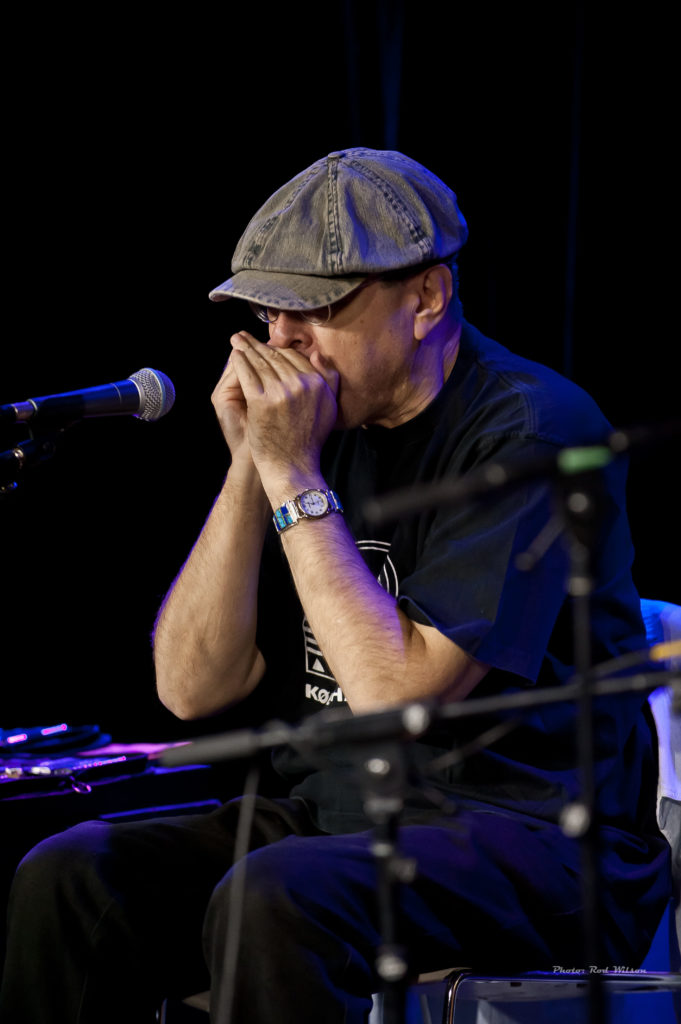
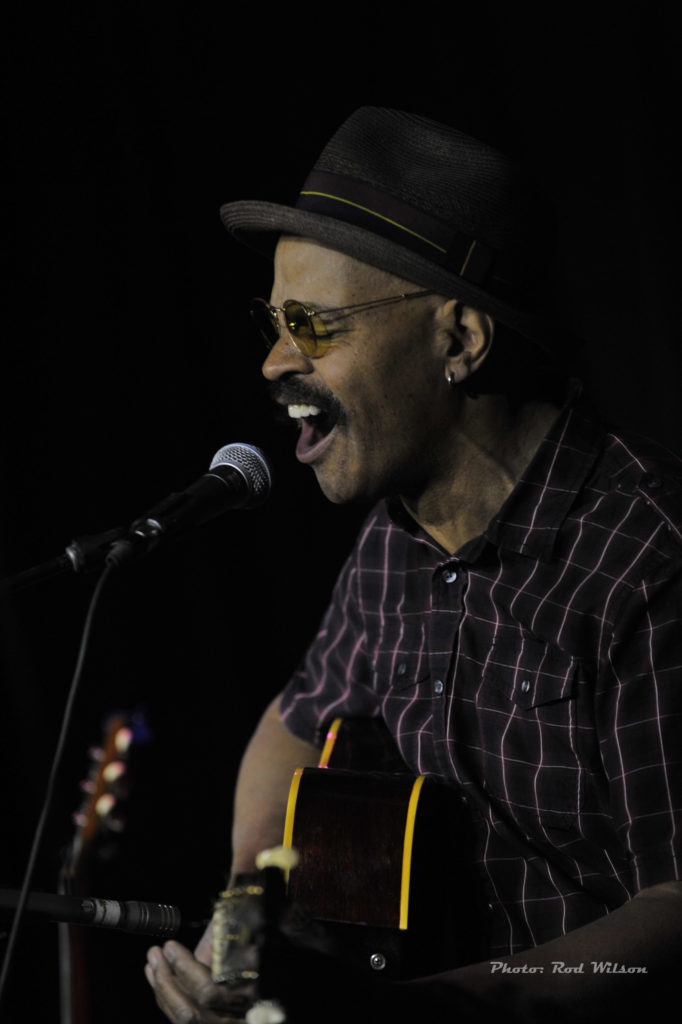
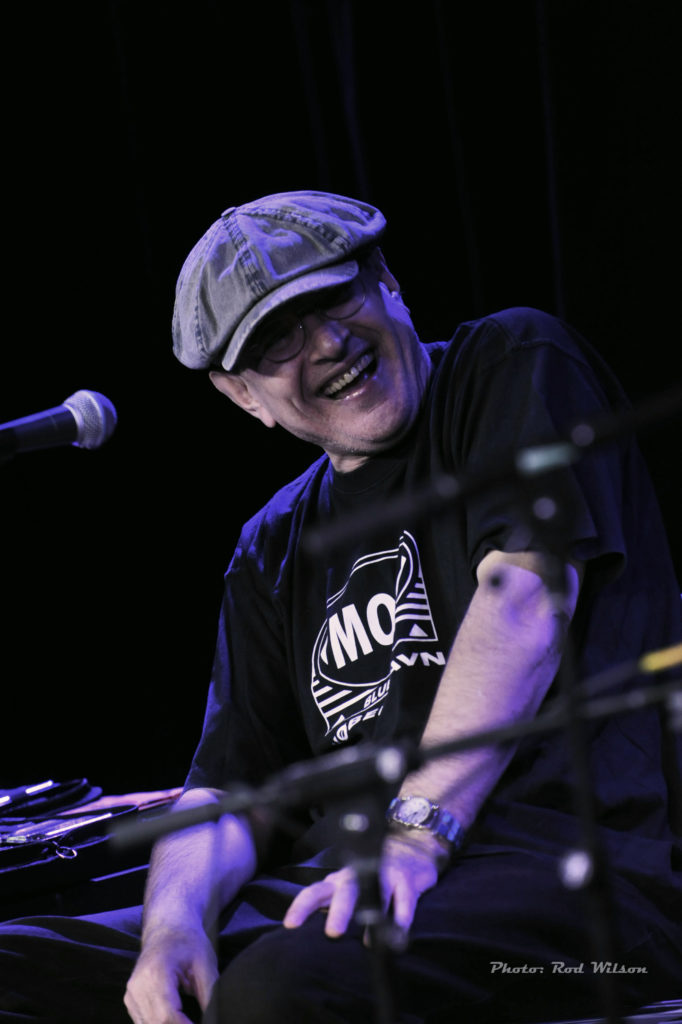
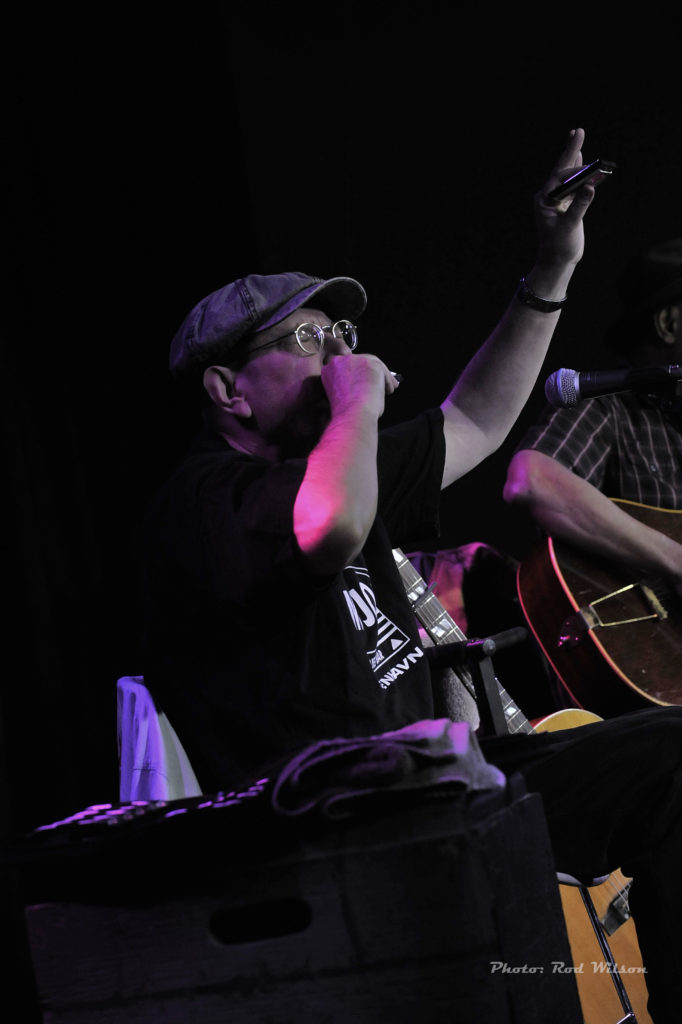
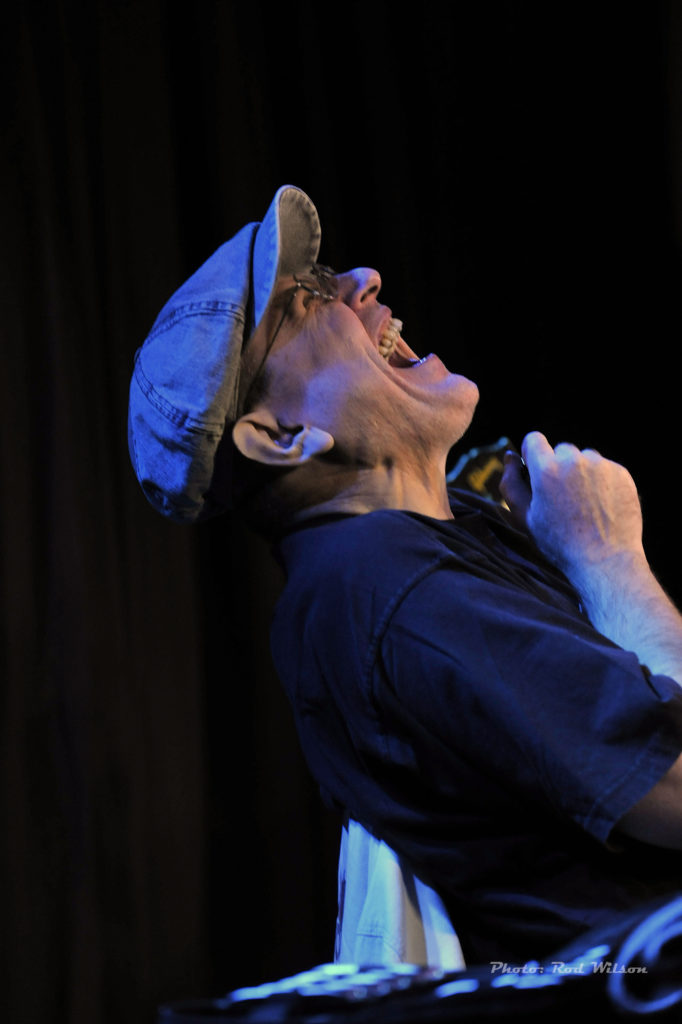
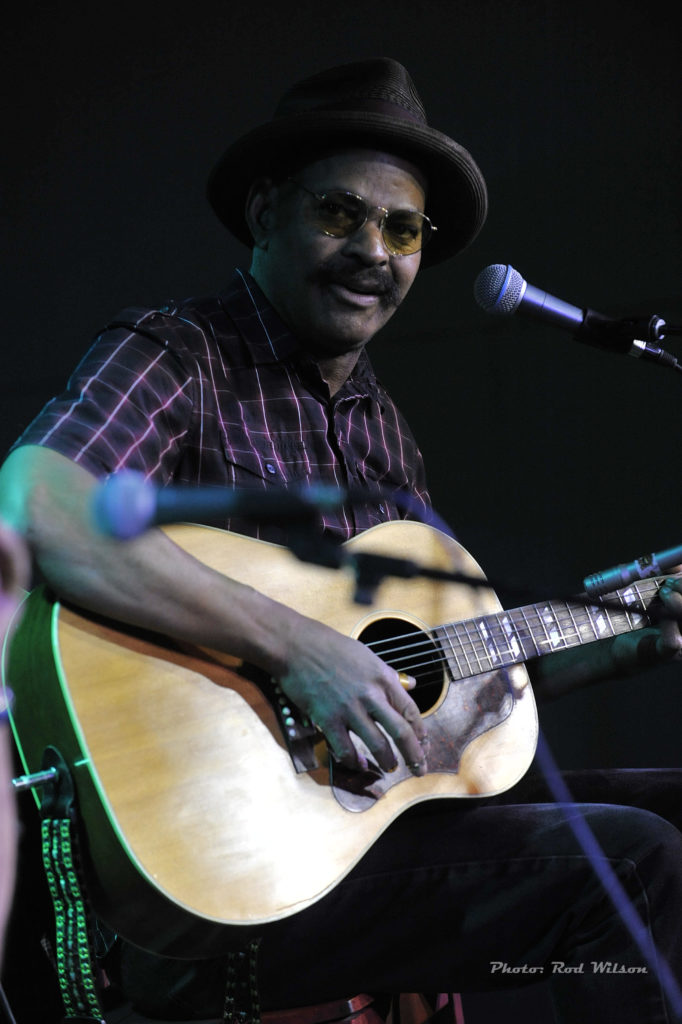 This is Guy’s third trip to the area. He performed at the Studio / Stage Door in Cranbrook many years ago and more recently, April April 11, 2015 at Centre 64 as part of a concert series. Guy lives in New York so to come to Kootenays at least once is a big deal. To come three times is almost heroic. I have been to all three concerts and if he should walk though the door again over the next couple of weeks for another concert I would be beating down the door to attend.
This is Guy’s third trip to the area. He performed at the Studio / Stage Door in Cranbrook many years ago and more recently, April April 11, 2015 at Centre 64 as part of a concert series. Guy lives in New York so to come to Kootenays at least once is a big deal. To come three times is almost heroic. I have been to all three concerts and if he should walk though the door again over the next couple of weeks for another concert I would be beating down the door to attend.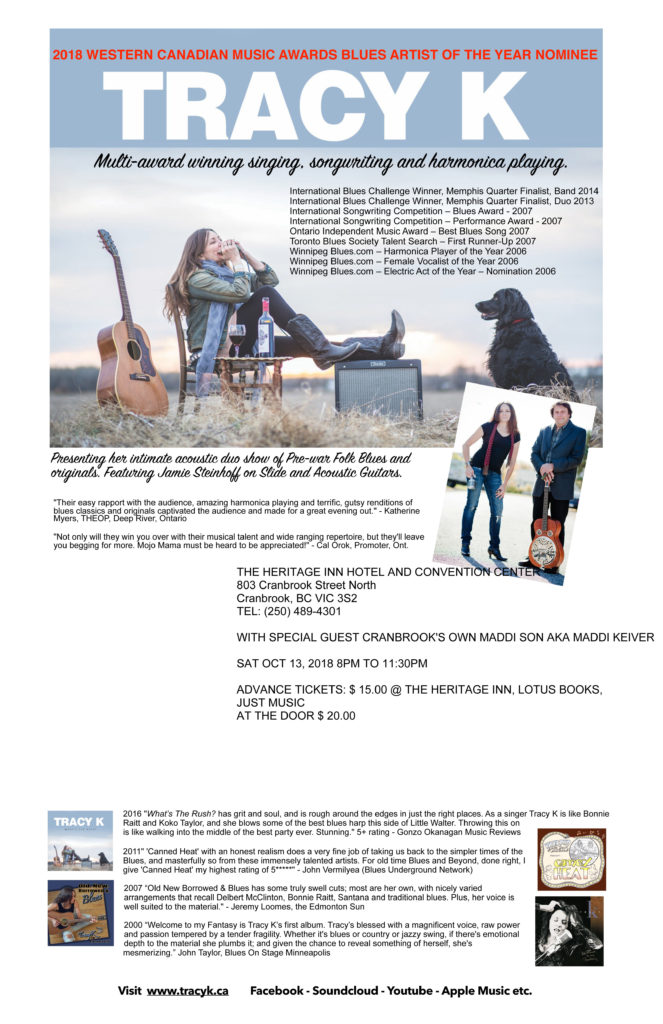
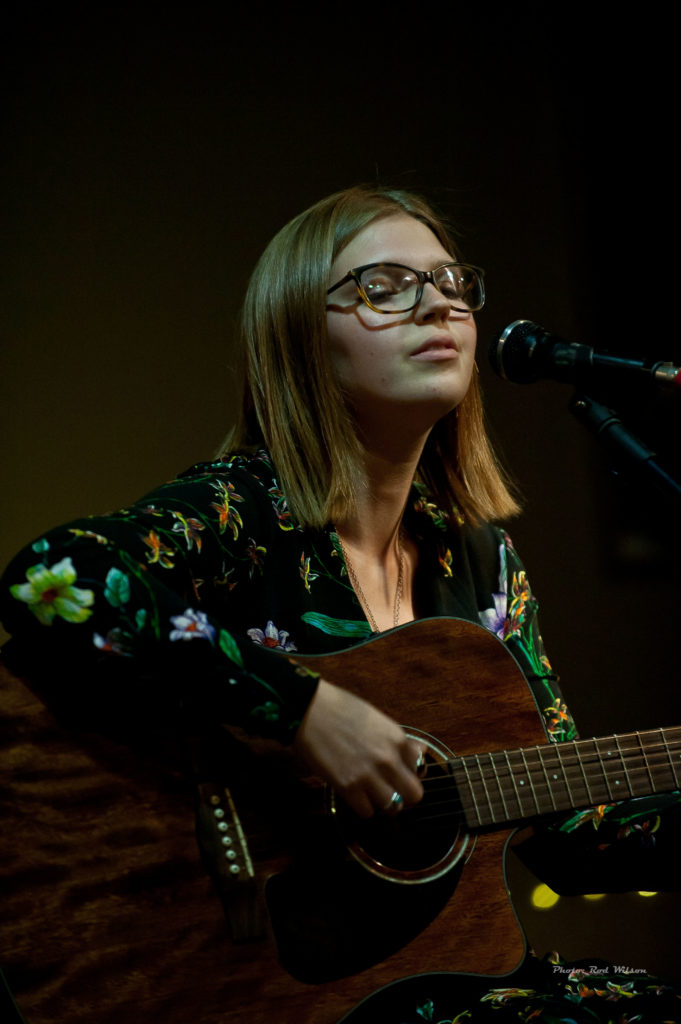

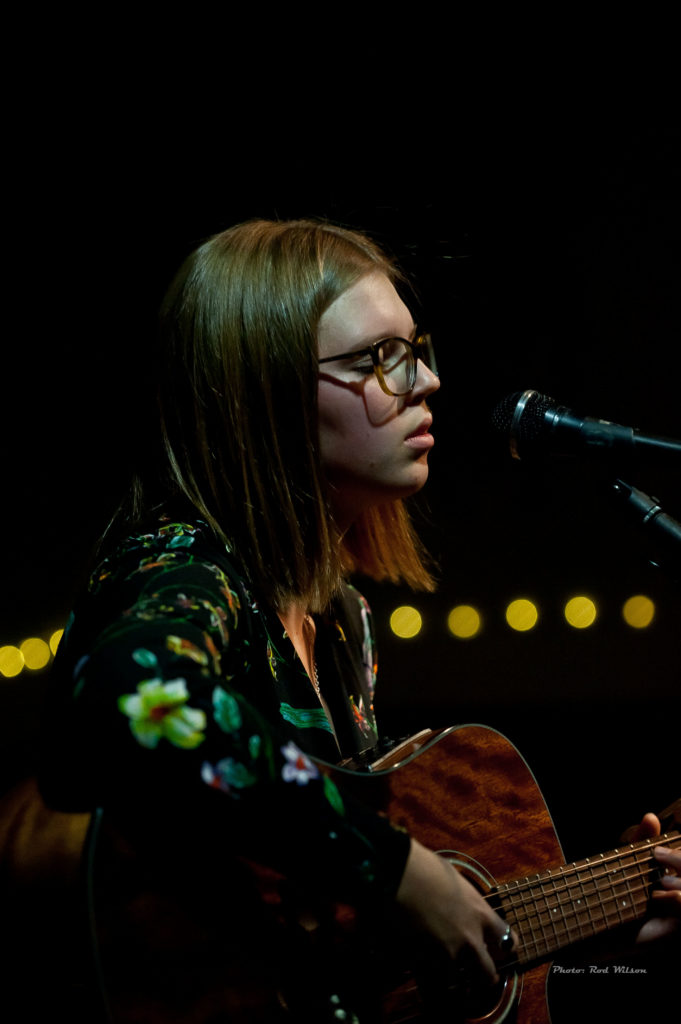
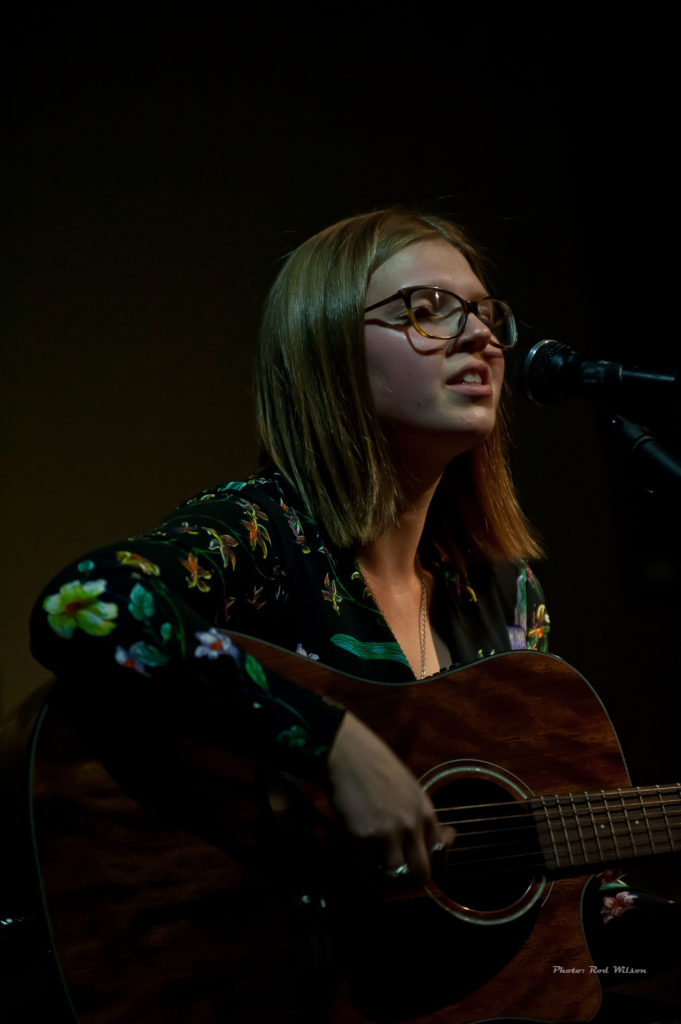 Once again the Winnipeg / Thunder Bay musical axis strikes another blow. Every once in a while the musicians from that neck of the woods venture out into the wider world and refresh our memories of how central that axis is to the Canadian musical landscape. This time around it was the blues duo of Tracy K (vocals, guitar and blues harp) and her musical side kick Jamie Steinhoff (vocals, guitar and resonator slide guitar). Musically the duo has been around the block for a number of years; traveling back and forth across Canada and down “blues highway 61” into the American south to savor the heartbeat of the blues. Tracy was raised on sixties radio and her brother’s hippie records and began her professional career at twenty five while living in Toronto. She moved back to Beausejour in the 1990s, started a family and, eventually, began her solo career. She is inspired by local blues greats Big Dave Maclean and Brent Parkin, and contemporaries Rita Chiarelli, Sue Foley and Suzie Vinnick. She is currently Nominee for Blues Artist of the Year at the Western Canadian Music Awards in October 2018. On the other hand (so to speak) Jamie Steinhoff started his musical life as a Blue Grass banjo player. He still has a great love for the style but over the years he has slipped into a role as a blues performer. As a duo Tracy and Jamie have traveled a lot in 2018 for folk festivals and a Home Routes Tour.
Once again the Winnipeg / Thunder Bay musical axis strikes another blow. Every once in a while the musicians from that neck of the woods venture out into the wider world and refresh our memories of how central that axis is to the Canadian musical landscape. This time around it was the blues duo of Tracy K (vocals, guitar and blues harp) and her musical side kick Jamie Steinhoff (vocals, guitar and resonator slide guitar). Musically the duo has been around the block for a number of years; traveling back and forth across Canada and down “blues highway 61” into the American south to savor the heartbeat of the blues. Tracy was raised on sixties radio and her brother’s hippie records and began her professional career at twenty five while living in Toronto. She moved back to Beausejour in the 1990s, started a family and, eventually, began her solo career. She is inspired by local blues greats Big Dave Maclean and Brent Parkin, and contemporaries Rita Chiarelli, Sue Foley and Suzie Vinnick. She is currently Nominee for Blues Artist of the Year at the Western Canadian Music Awards in October 2018. On the other hand (so to speak) Jamie Steinhoff started his musical life as a Blue Grass banjo player. He still has a great love for the style but over the years he has slipped into a role as a blues performer. As a duo Tracy and Jamie have traveled a lot in 2018 for folk festivals and a Home Routes Tour.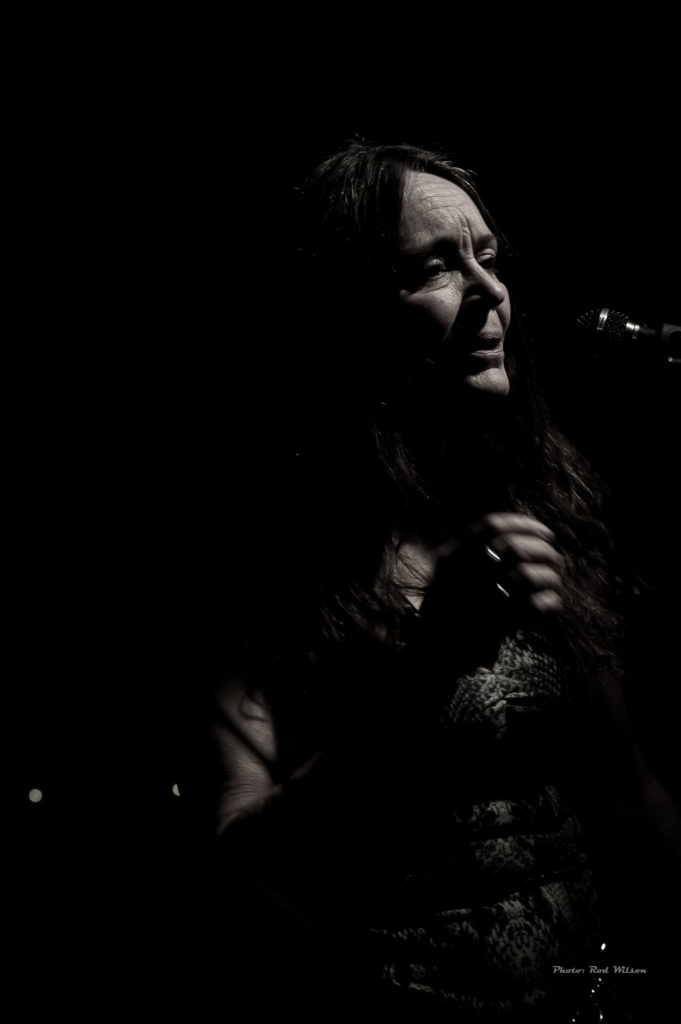
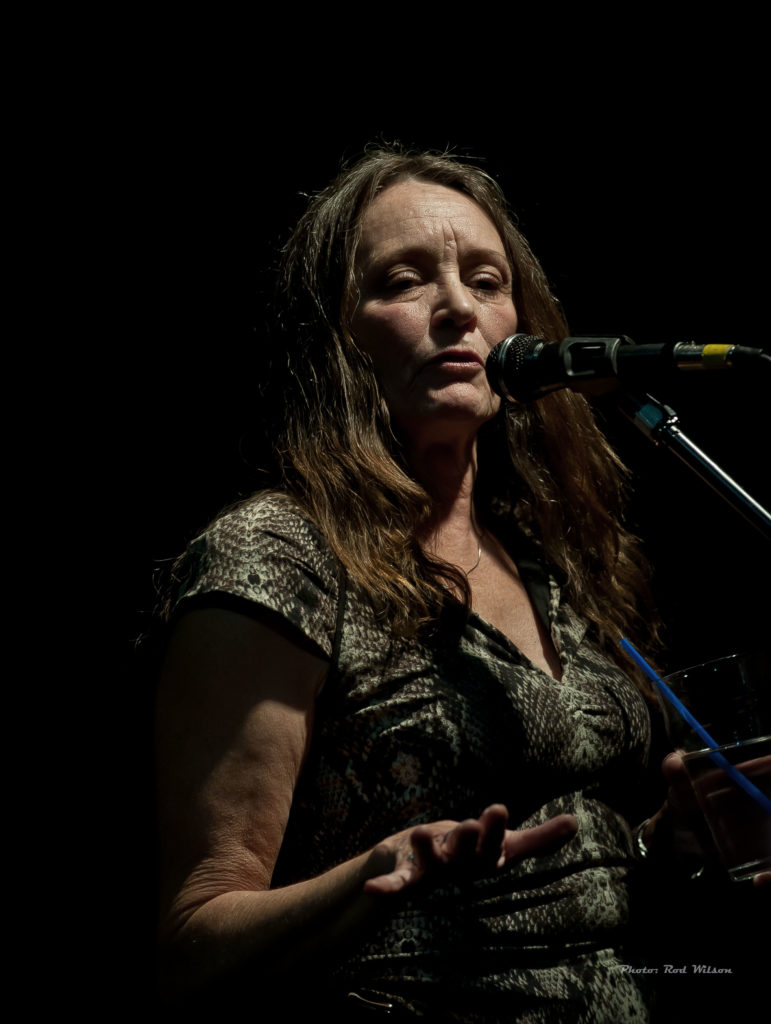
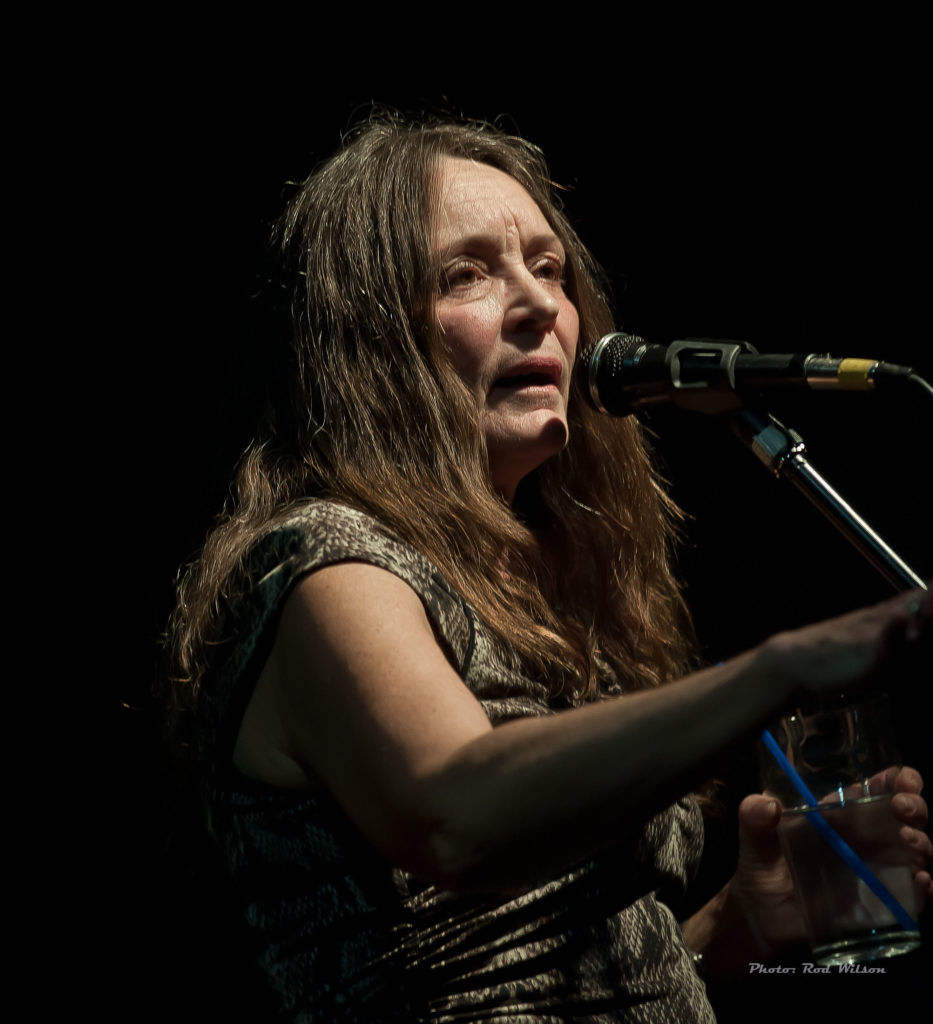
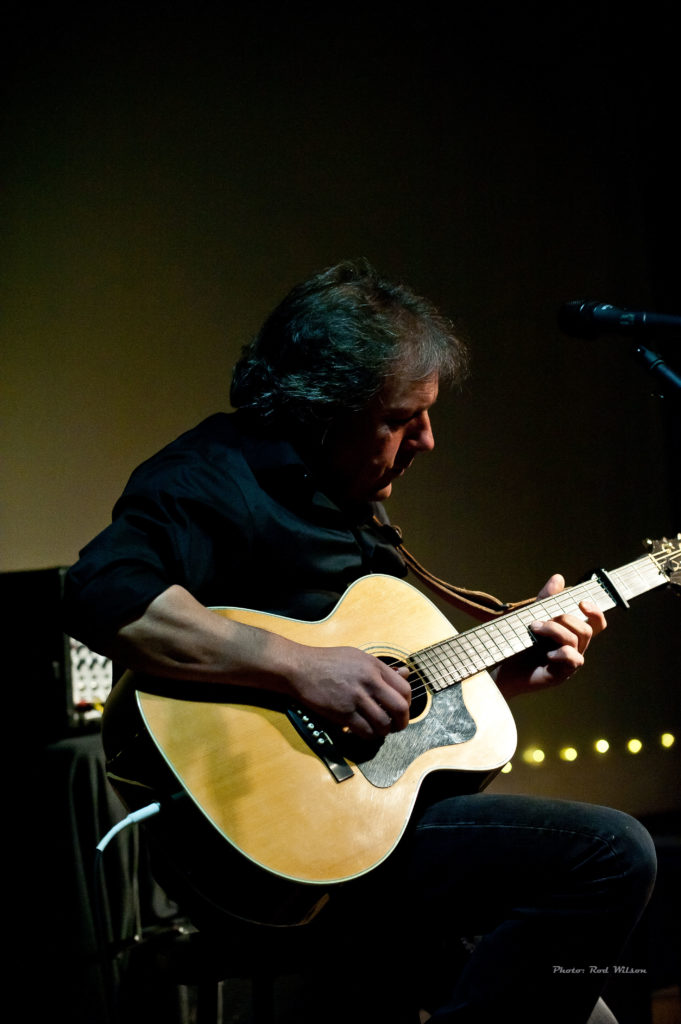
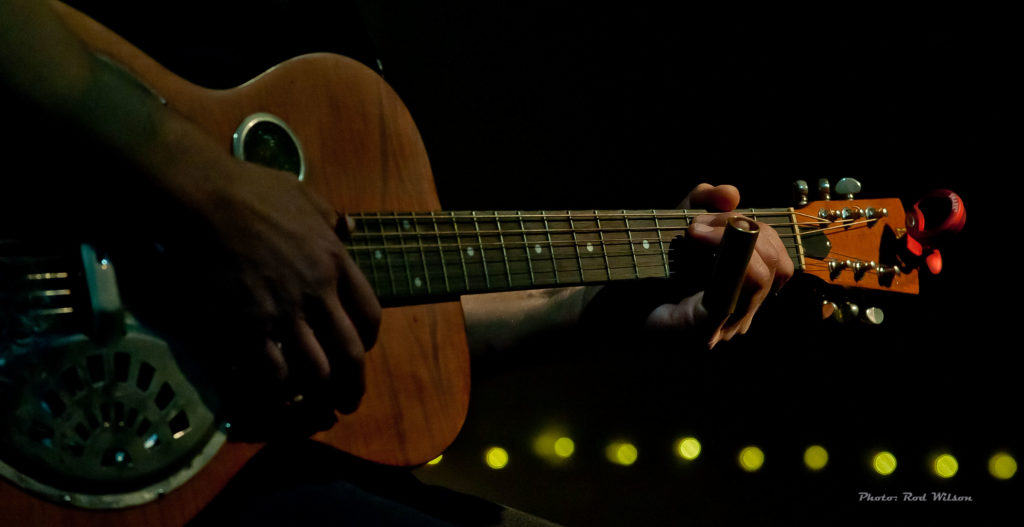
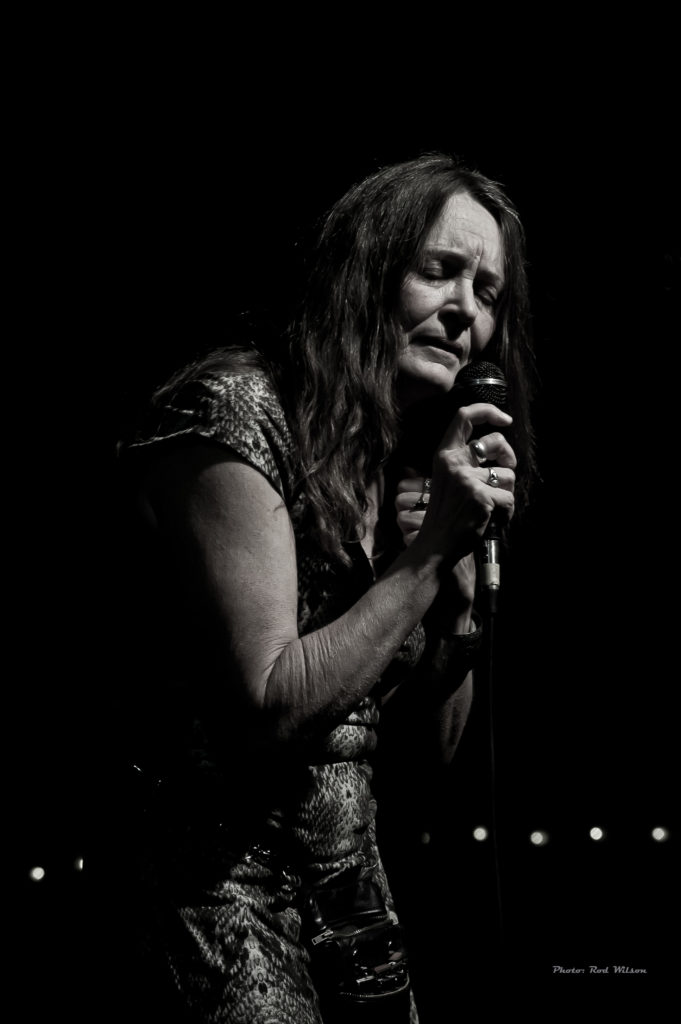
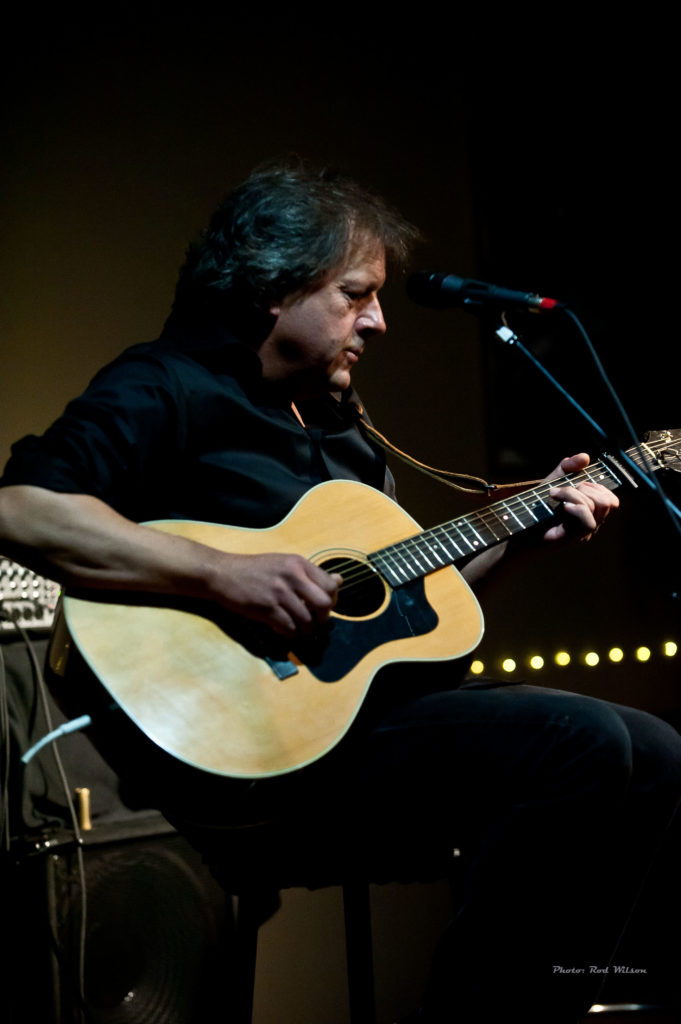
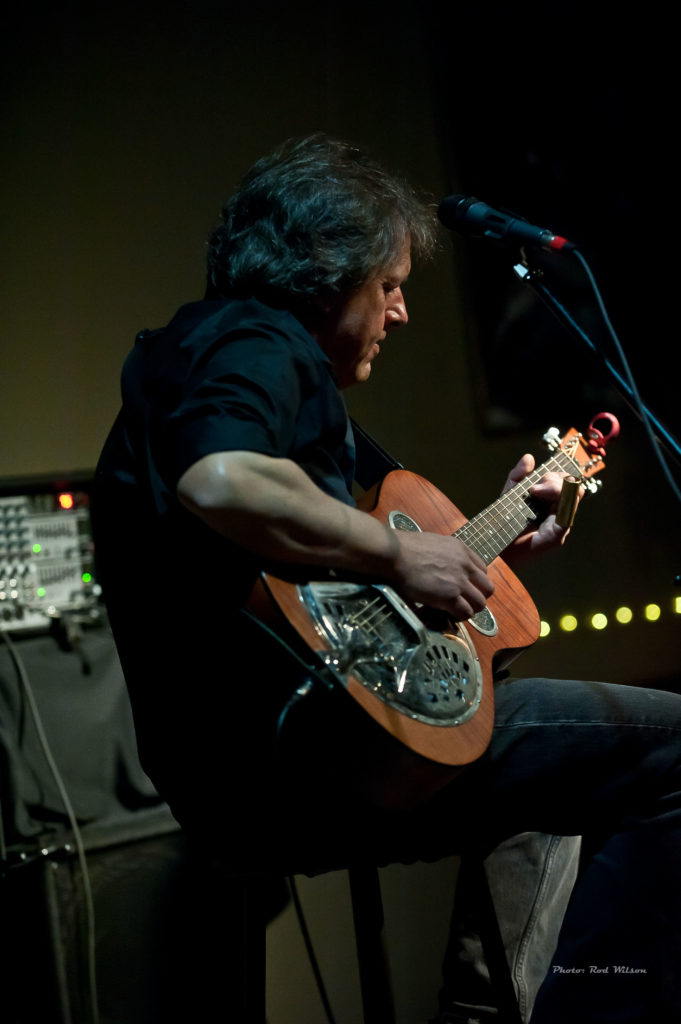
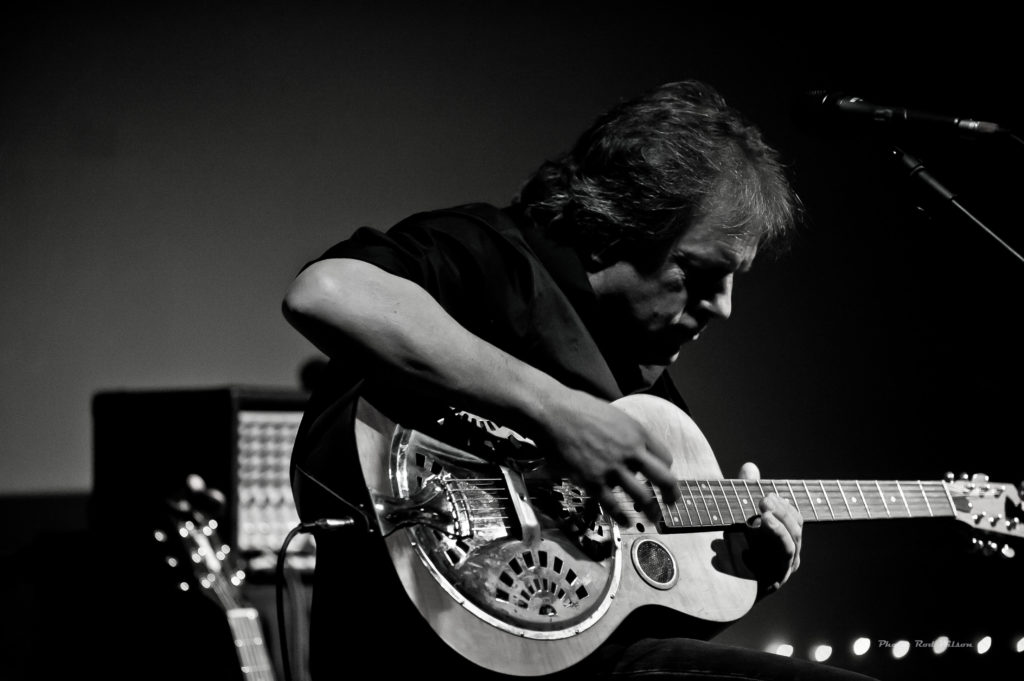
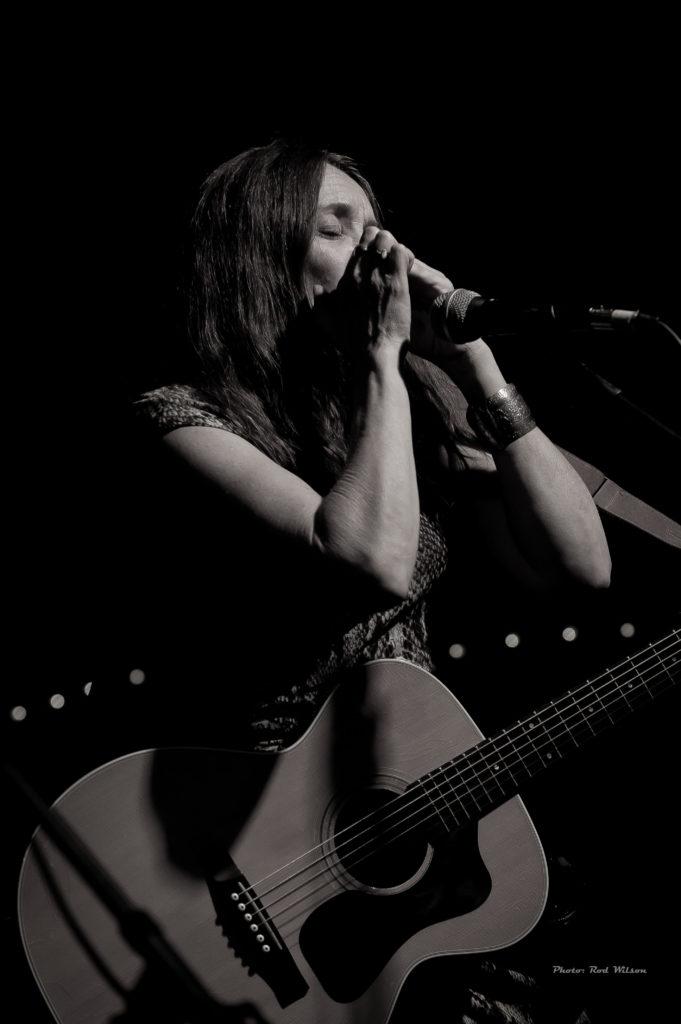
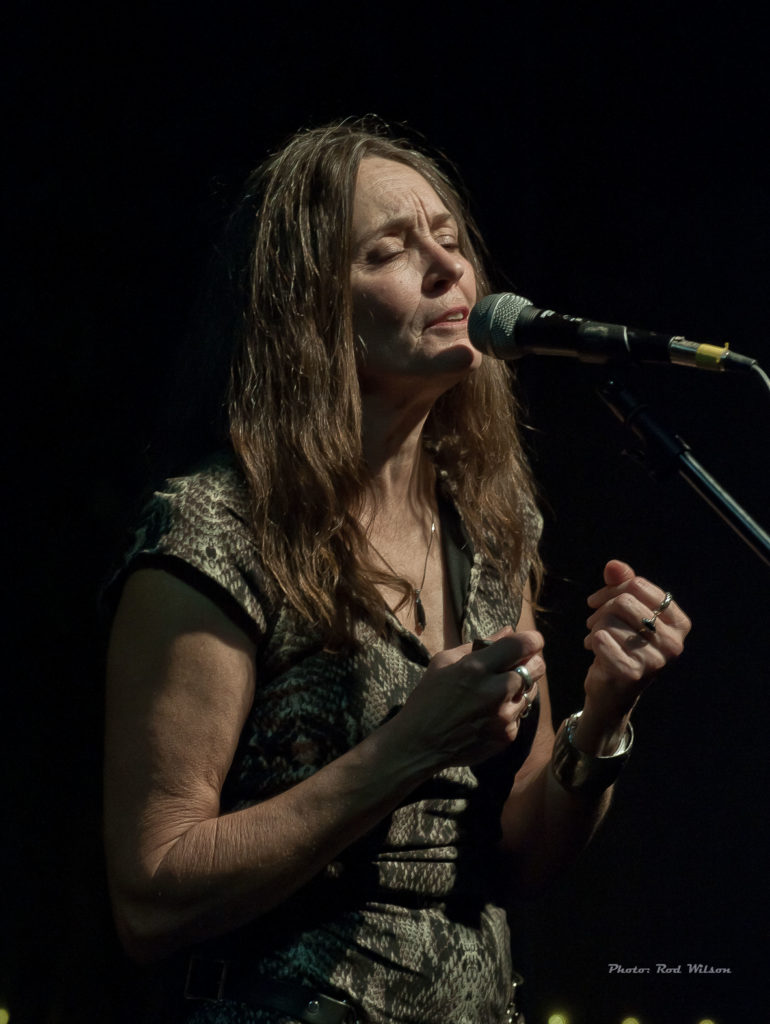
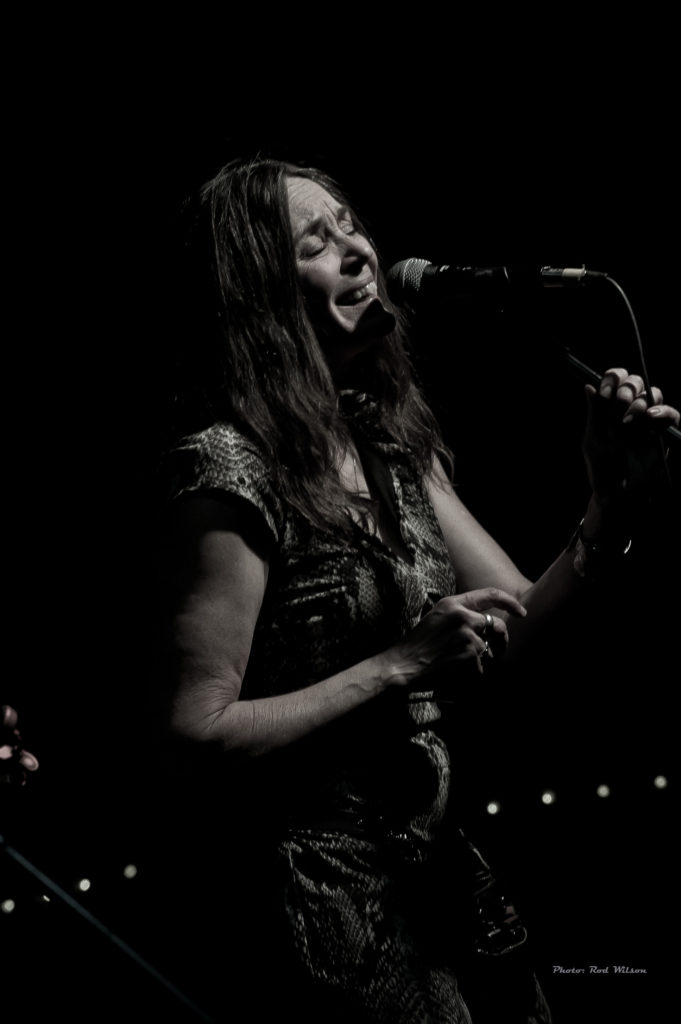
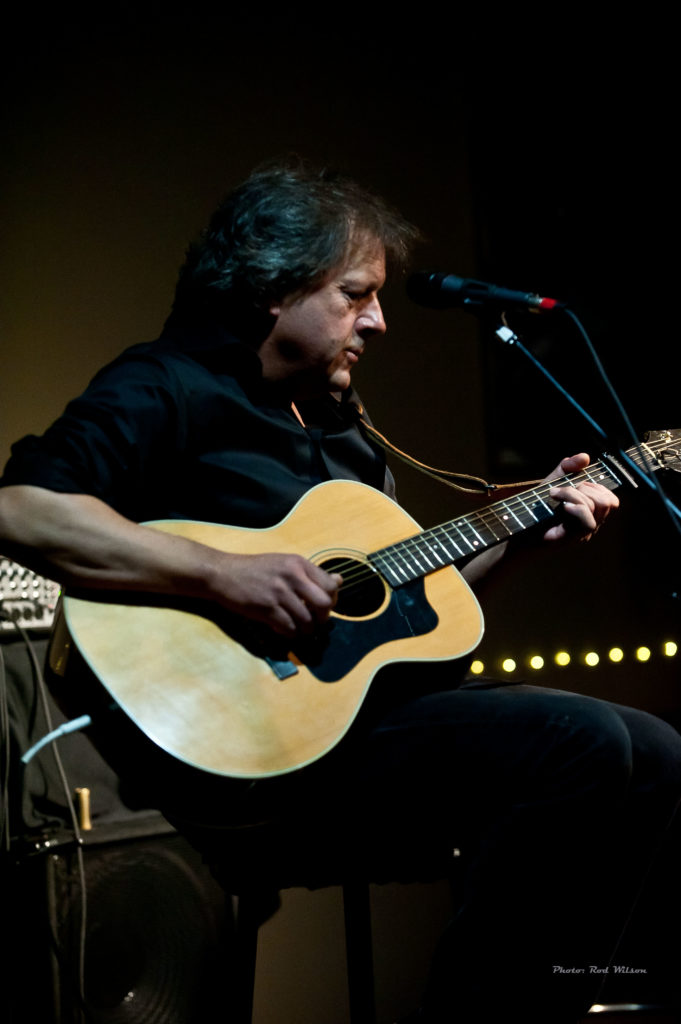
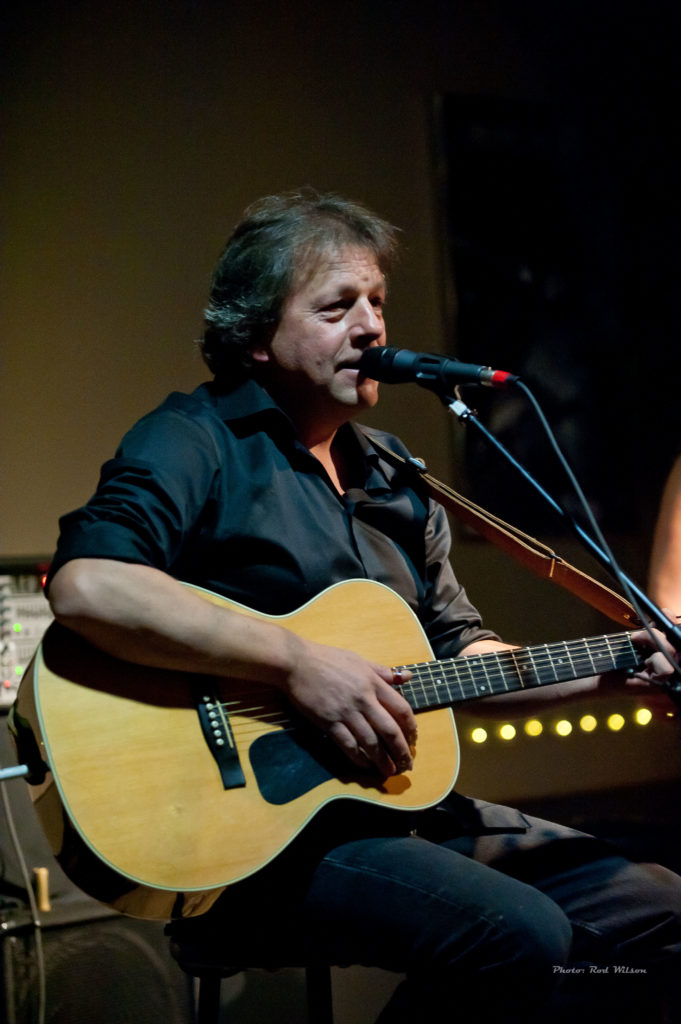
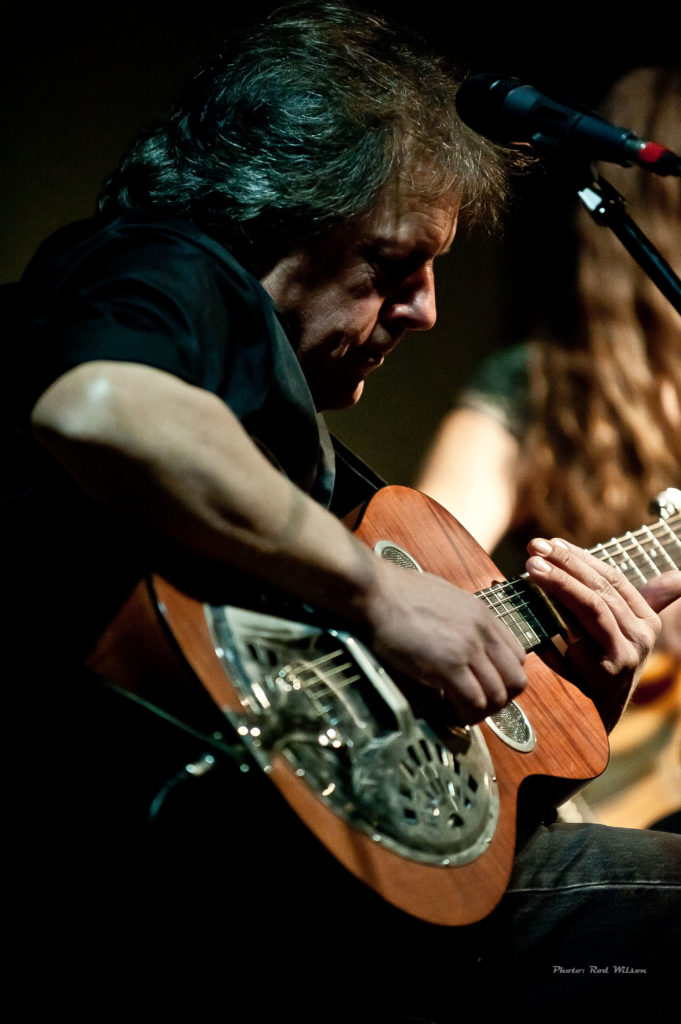
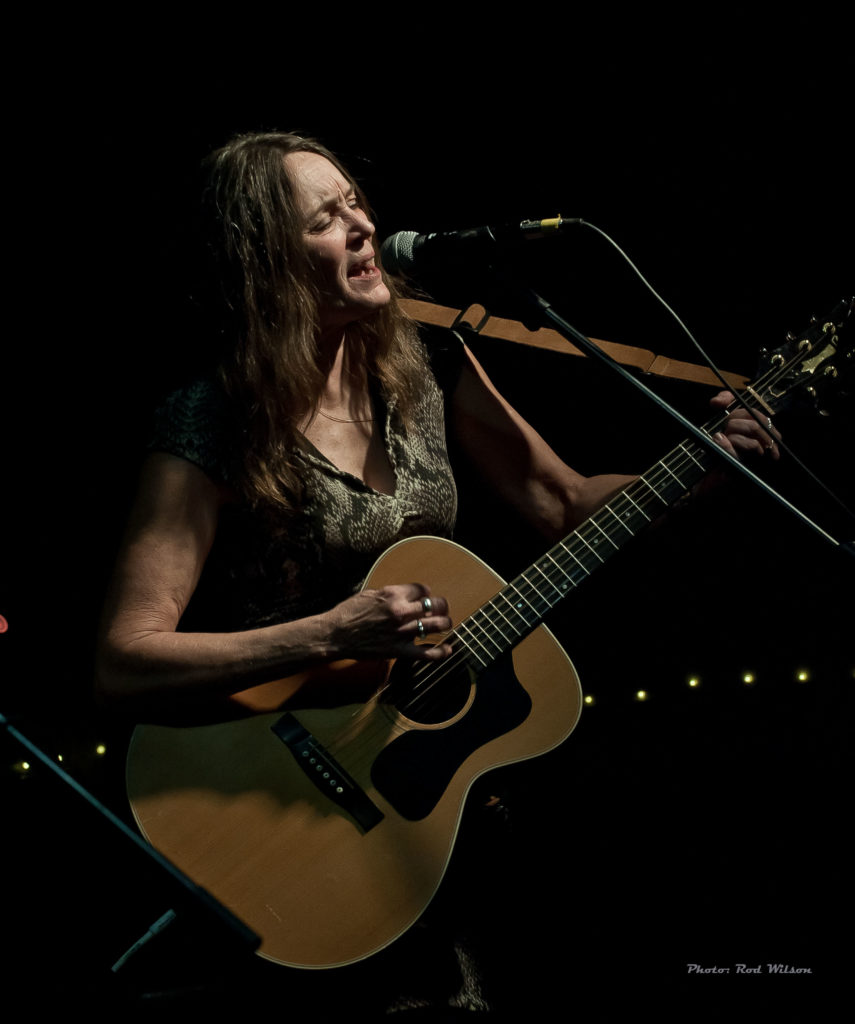
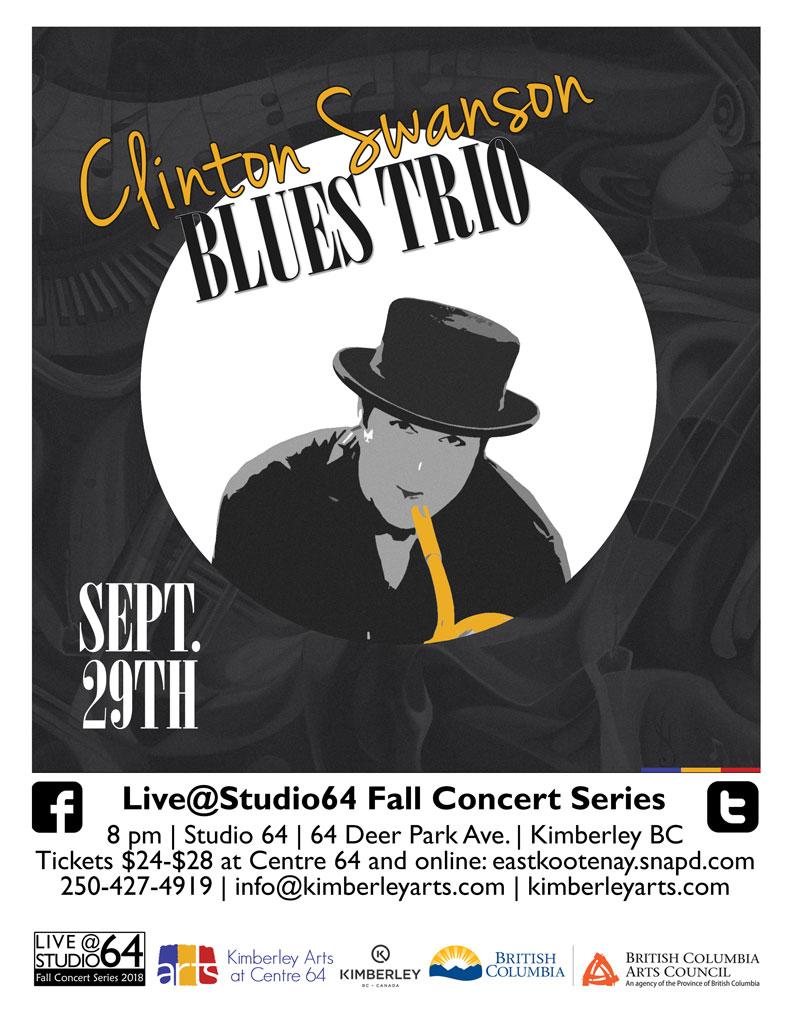
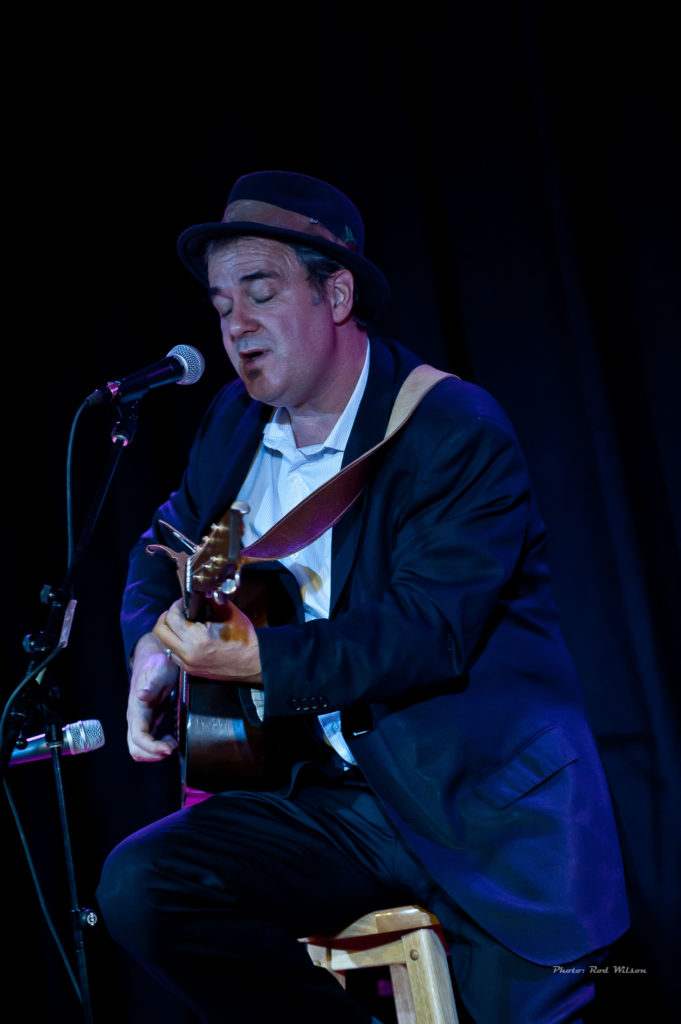 Clinton Swanson Blues Trio. In actual fact it was more appropriately the Kelly Fawcett Blues Trio with Clinton Swanson on tenor and baritone saxes and Doug Stephenson on bass. Once the concert got going it was easy to hear why Clinton said “we are part of Kelly’s trio and we are here to support him”. Kelly is a new face to most of us but he has been a long time friend and musical associate of Clinton and they have toured together frequently over the years. The other member of the trio, Doug Stephenson is also a well known Nelson musician who has also toured extensively in the Kootenays. He is living proof that to make a living as a professional musician these days one can’t have “too many arrows in one’s quiver”. I first encountered him playing bass guitar behind Gabriel Palatchi, then as a
Clinton Swanson Blues Trio. In actual fact it was more appropriately the Kelly Fawcett Blues Trio with Clinton Swanson on tenor and baritone saxes and Doug Stephenson on bass. Once the concert got going it was easy to hear why Clinton said “we are part of Kelly’s trio and we are here to support him”. Kelly is a new face to most of us but he has been a long time friend and musical associate of Clinton and they have toured together frequently over the years. The other member of the trio, Doug Stephenson is also a well known Nelson musician who has also toured extensively in the Kootenays. He is living proof that to make a living as a professional musician these days one can’t have “too many arrows in one’s quiver”. I first encountered him playing bass guitar behind Gabriel Palatchi, then as a 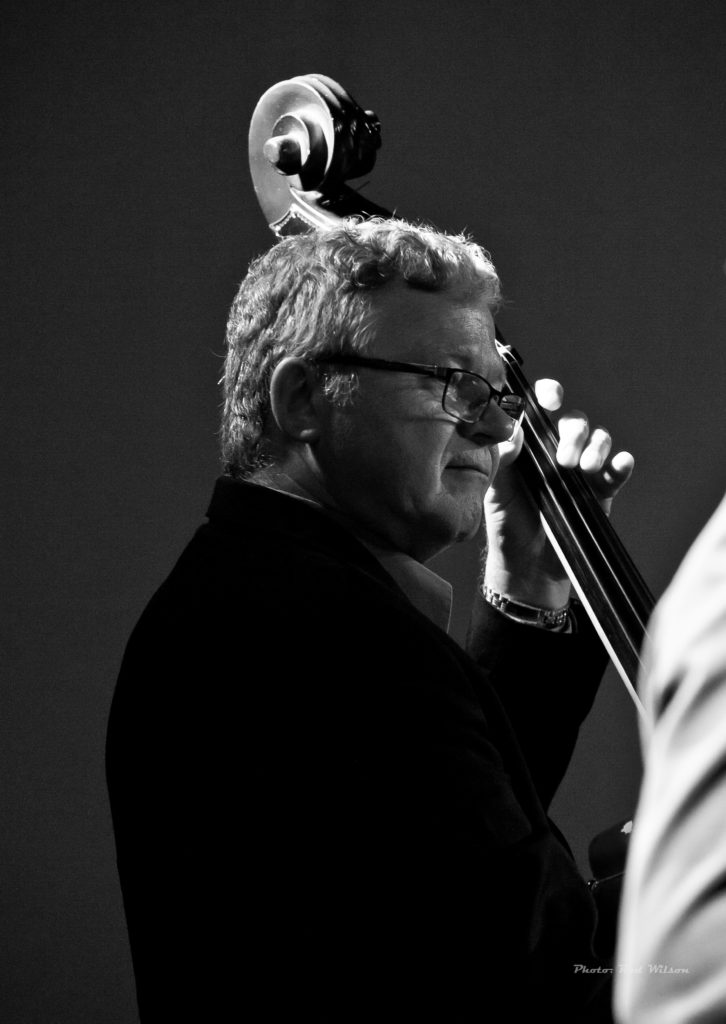 nylon string Bossa Nova guitarist with Melody Diachun, then as full on electric guitarist with Melody Diachun’s “Back to the Groove Tour”. On this particular night with Kelly Fawcett he is a stand up bass player (no pun intended). In every performance circumstance he looks like he is having way too much fun. He excels on all his instruments and that probably explains why he is in such demand. I am not sure how he is able to keep up his superb skill levels on all instruments. He must practice constantly, all day, every day. I must ask him about that.
nylon string Bossa Nova guitarist with Melody Diachun, then as full on electric guitarist with Melody Diachun’s “Back to the Groove Tour”. On this particular night with Kelly Fawcett he is a stand up bass player (no pun intended). In every performance circumstance he looks like he is having way too much fun. He excels on all his instruments and that probably explains why he is in such demand. I am not sure how he is able to keep up his superb skill levels on all instruments. He must practice constantly, all day, every day. I must ask him about that.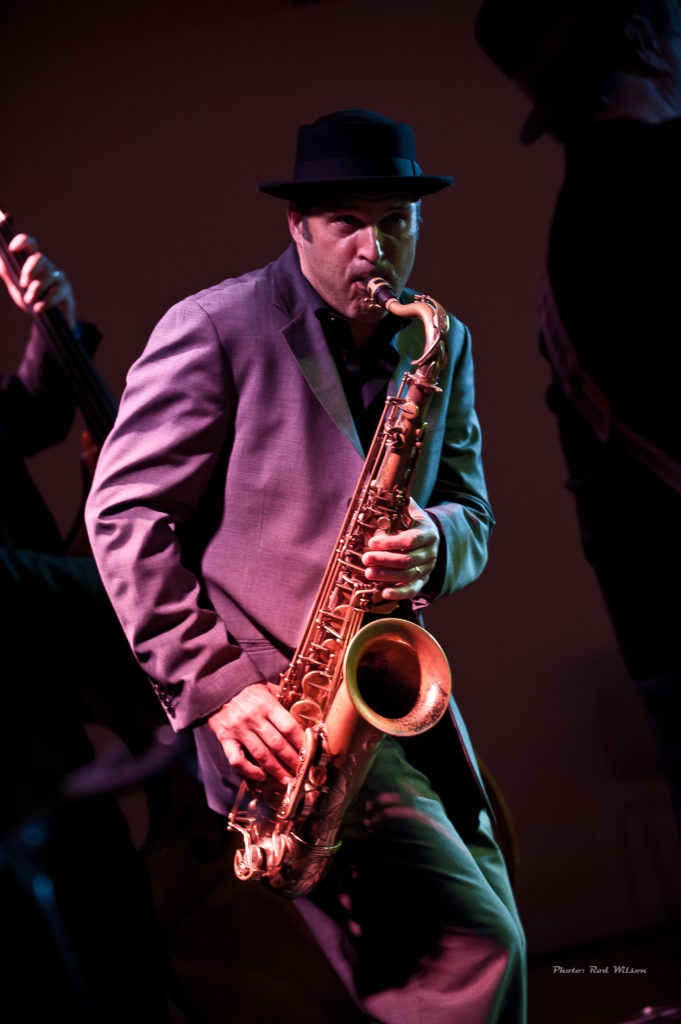
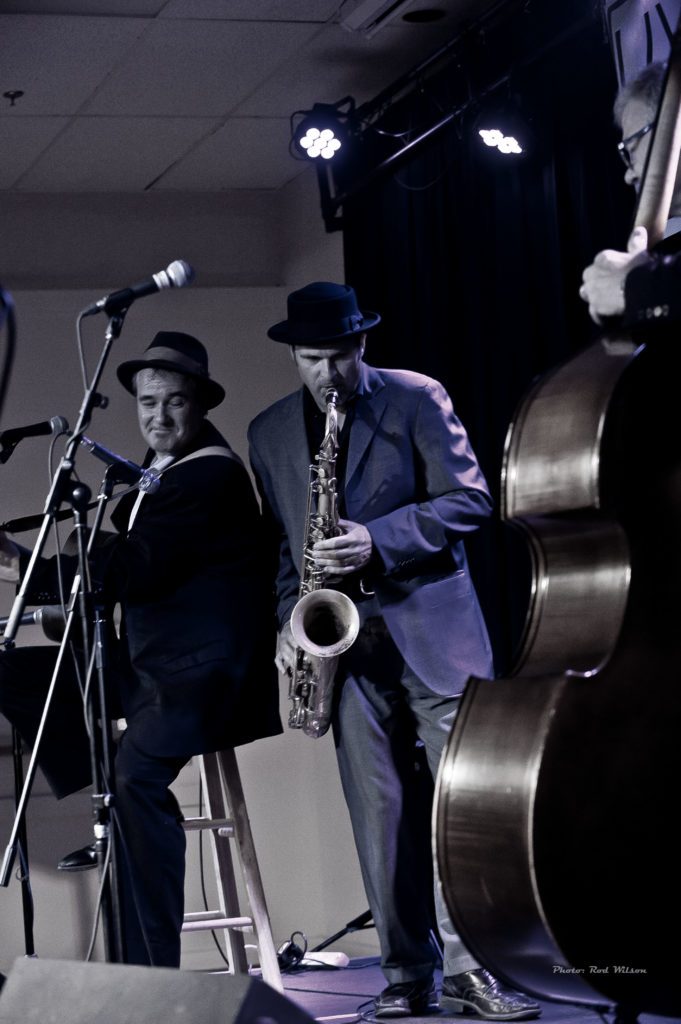
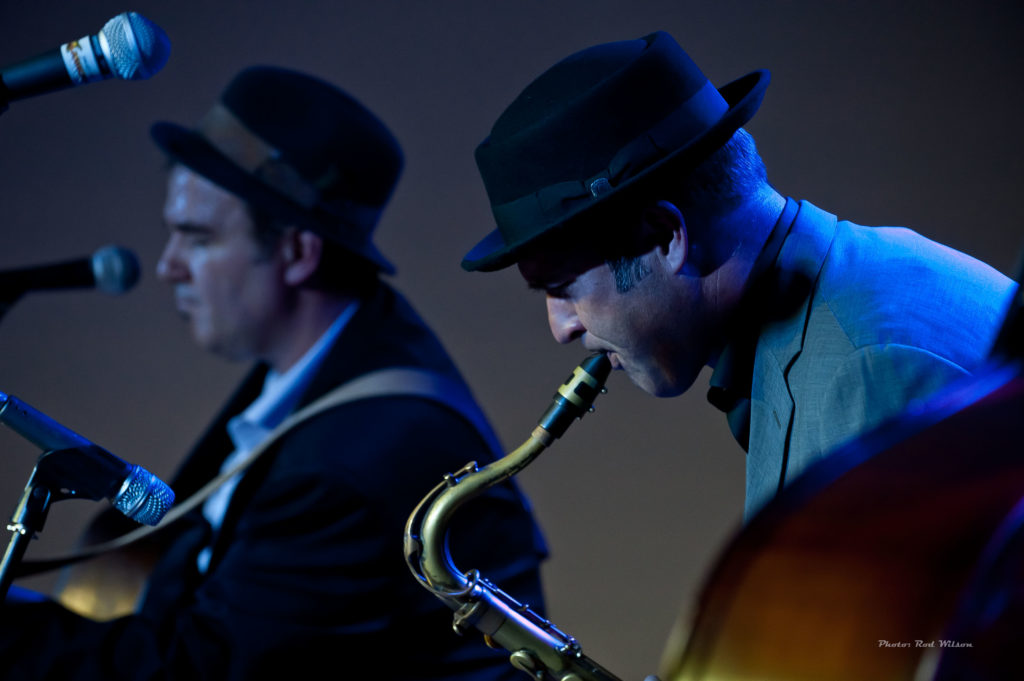
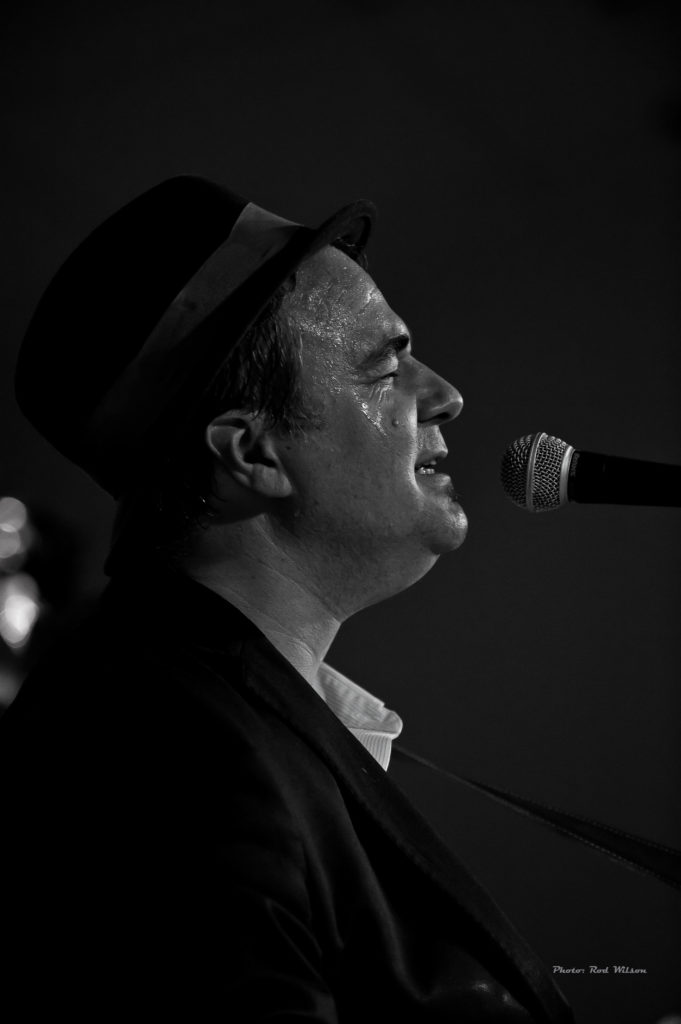
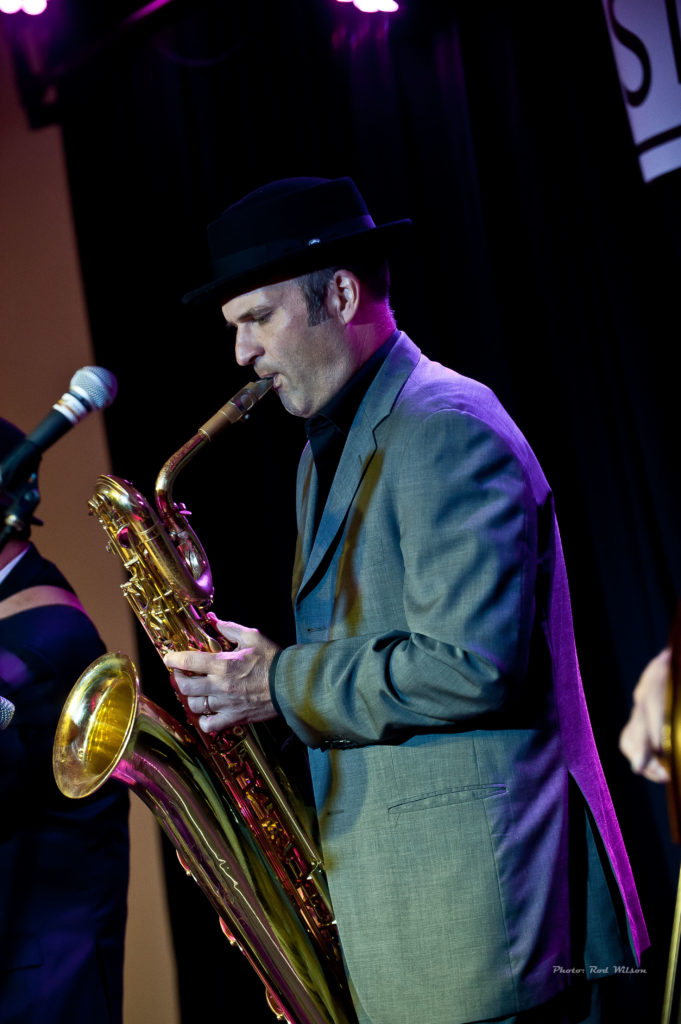
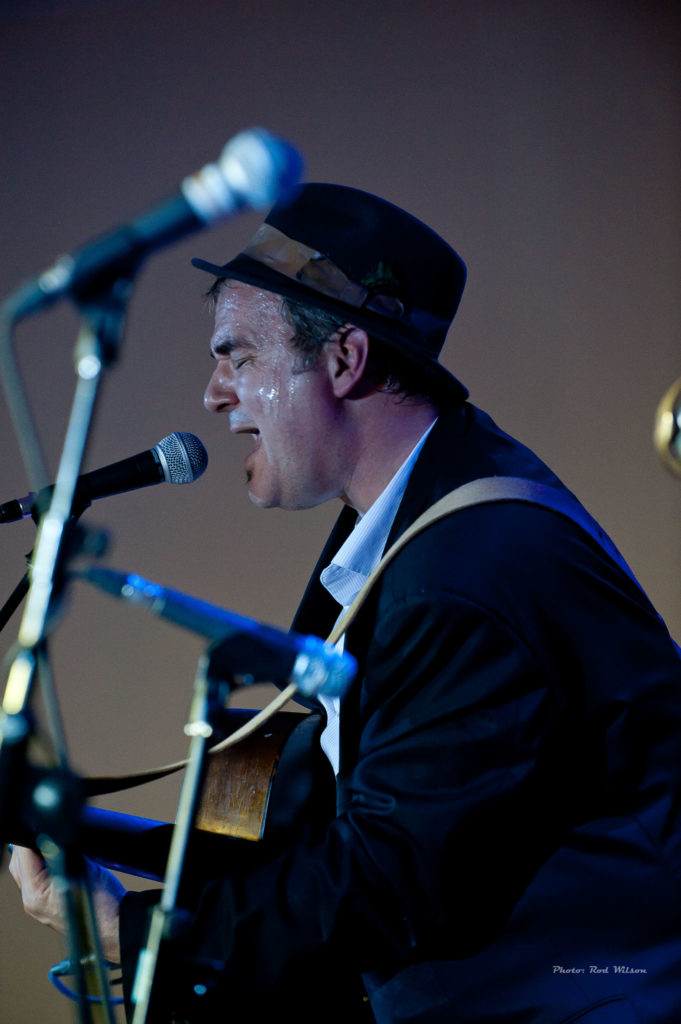
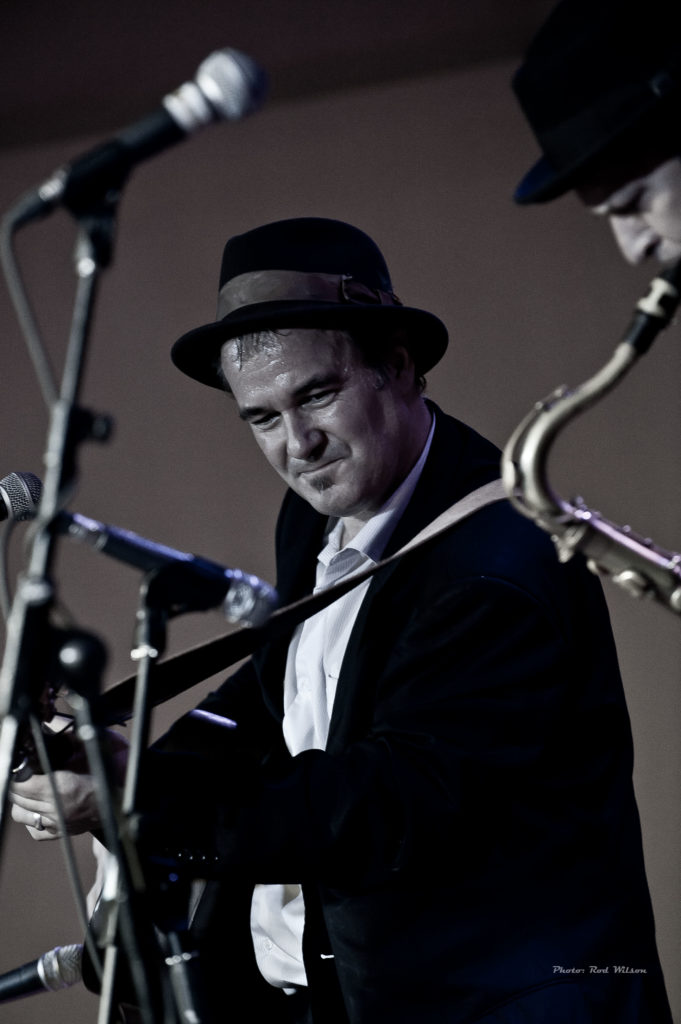
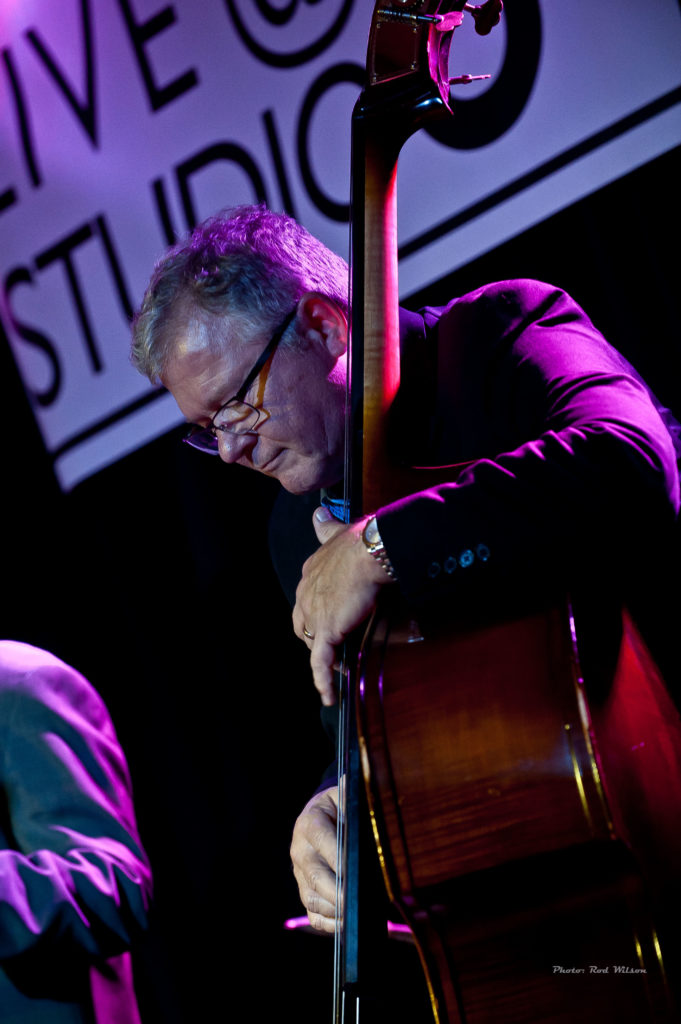
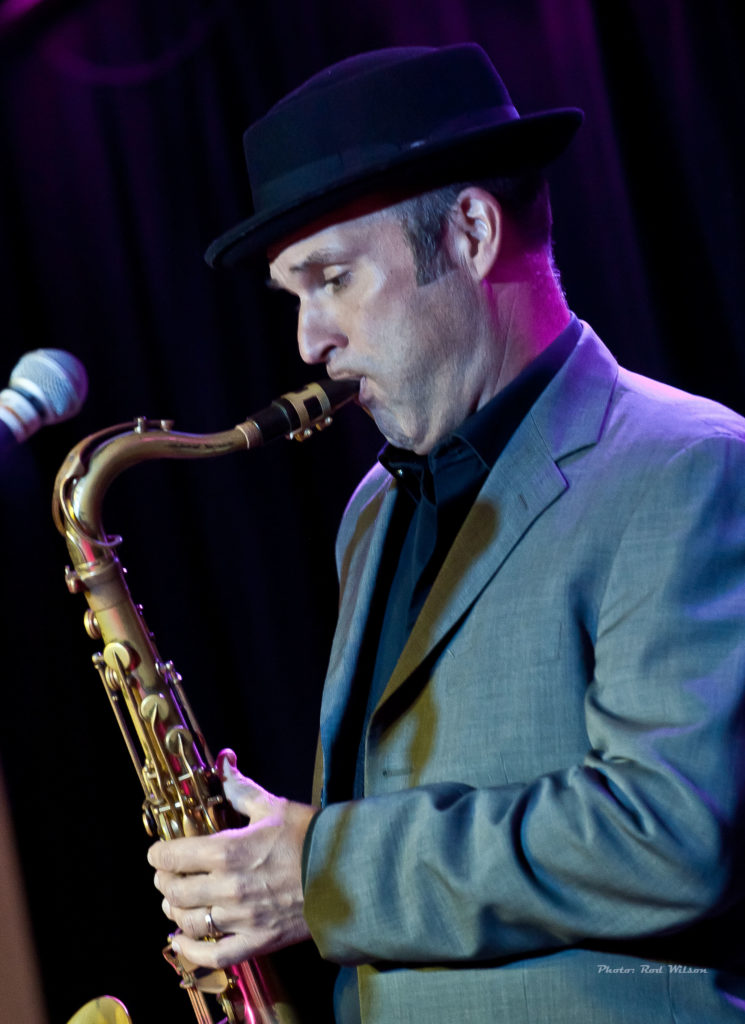
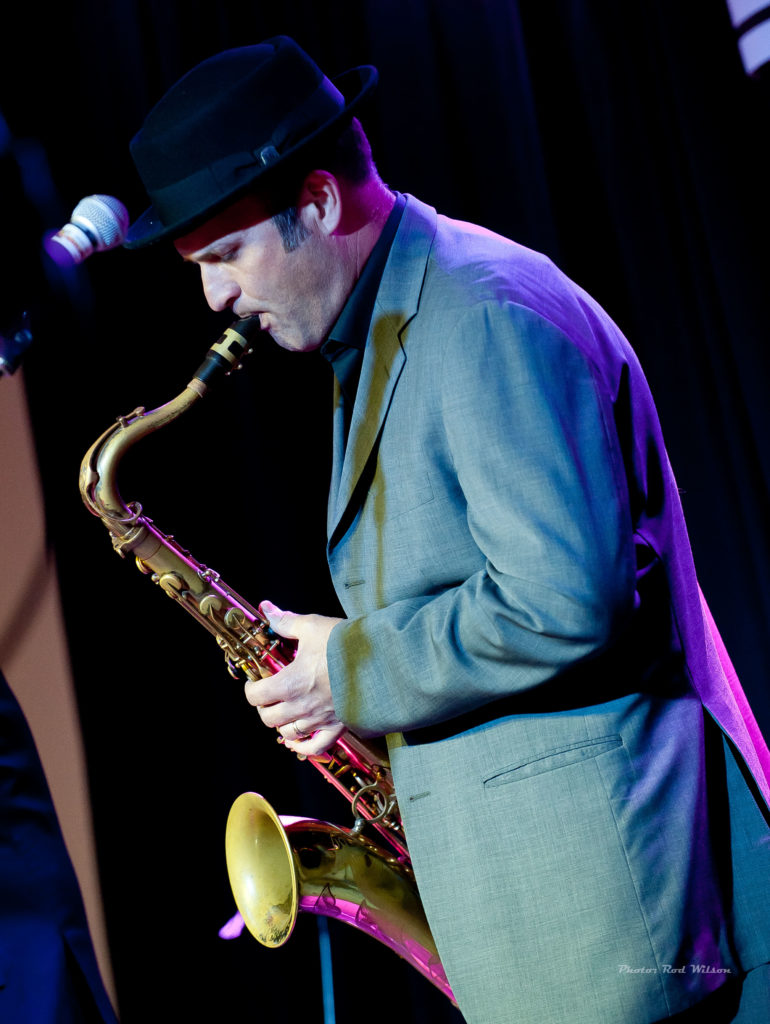
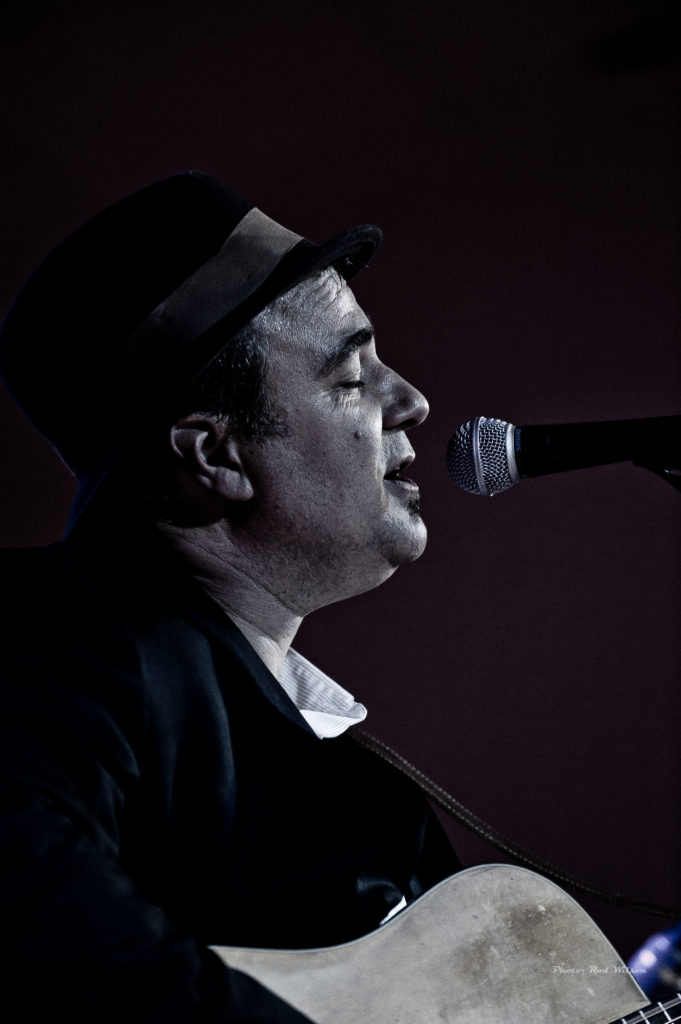
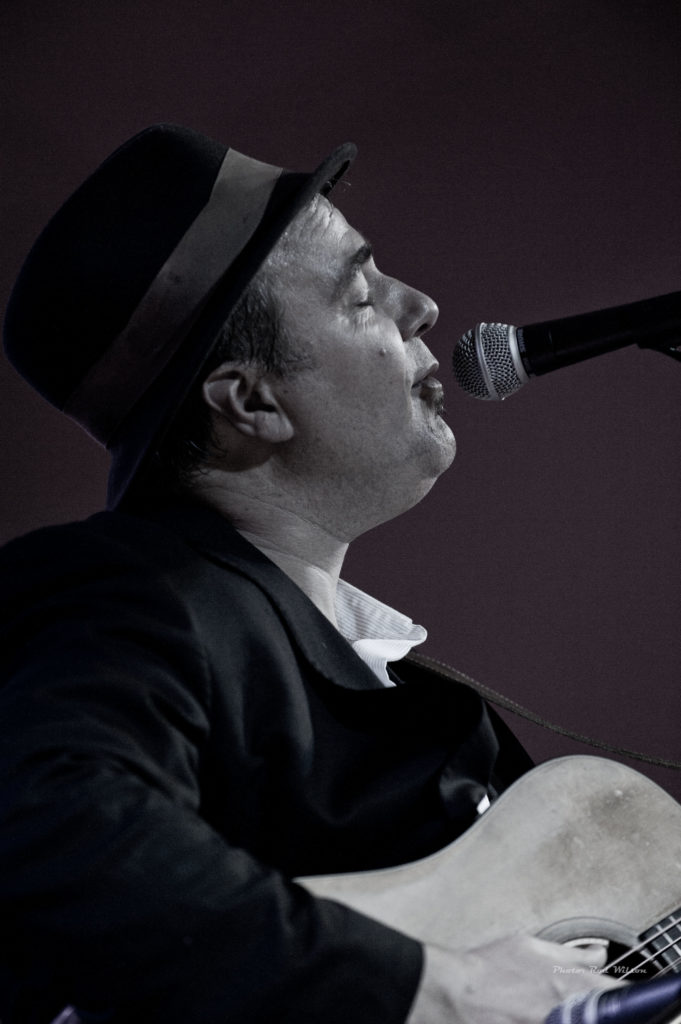
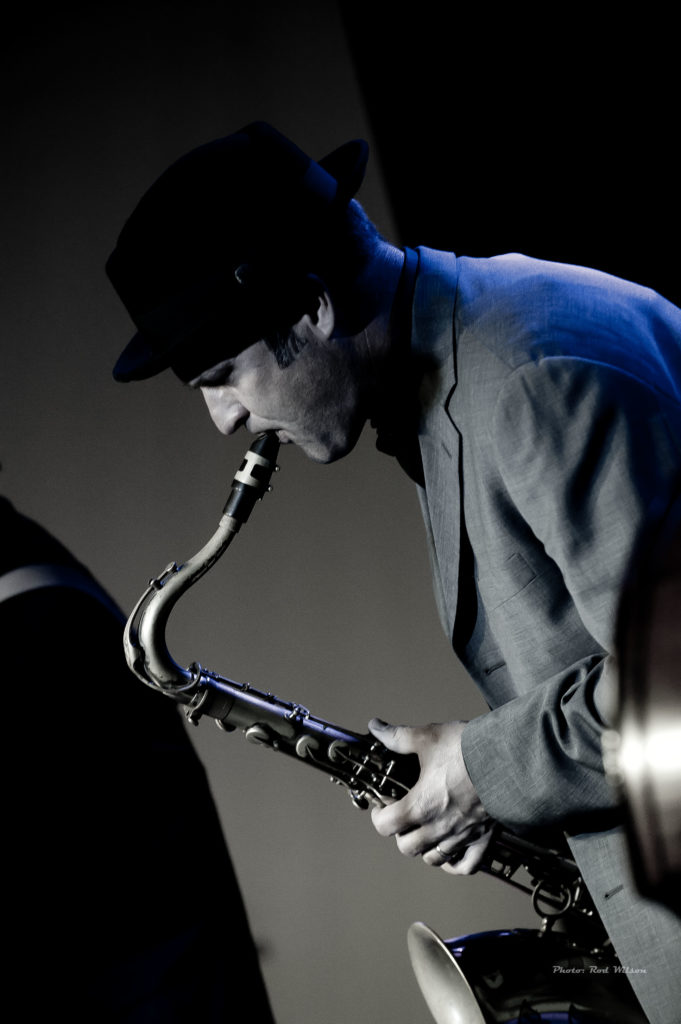
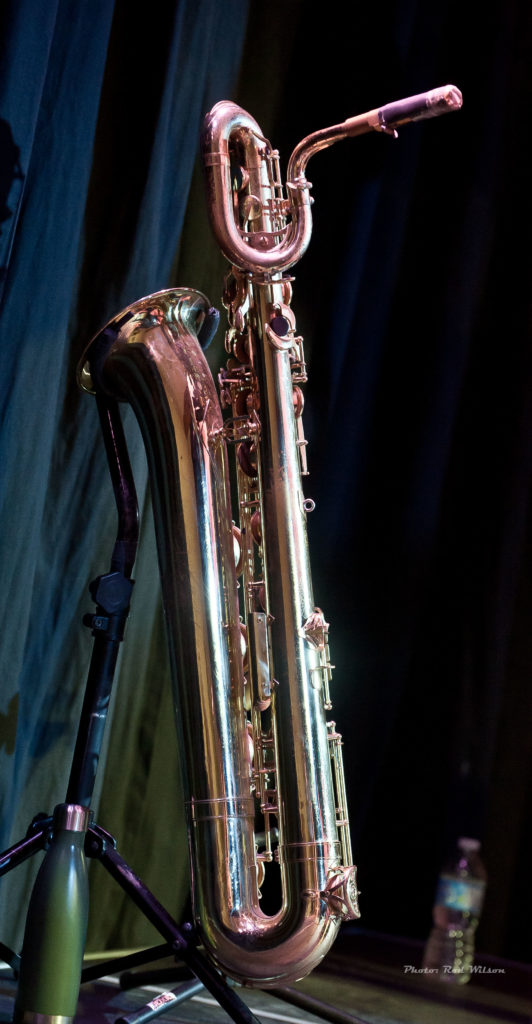
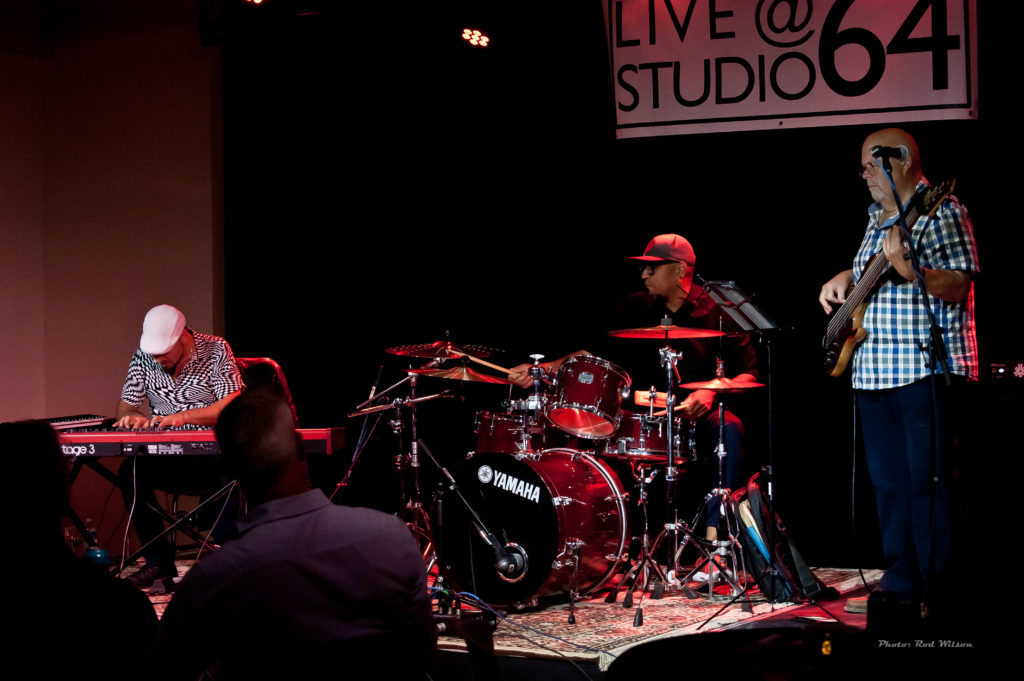
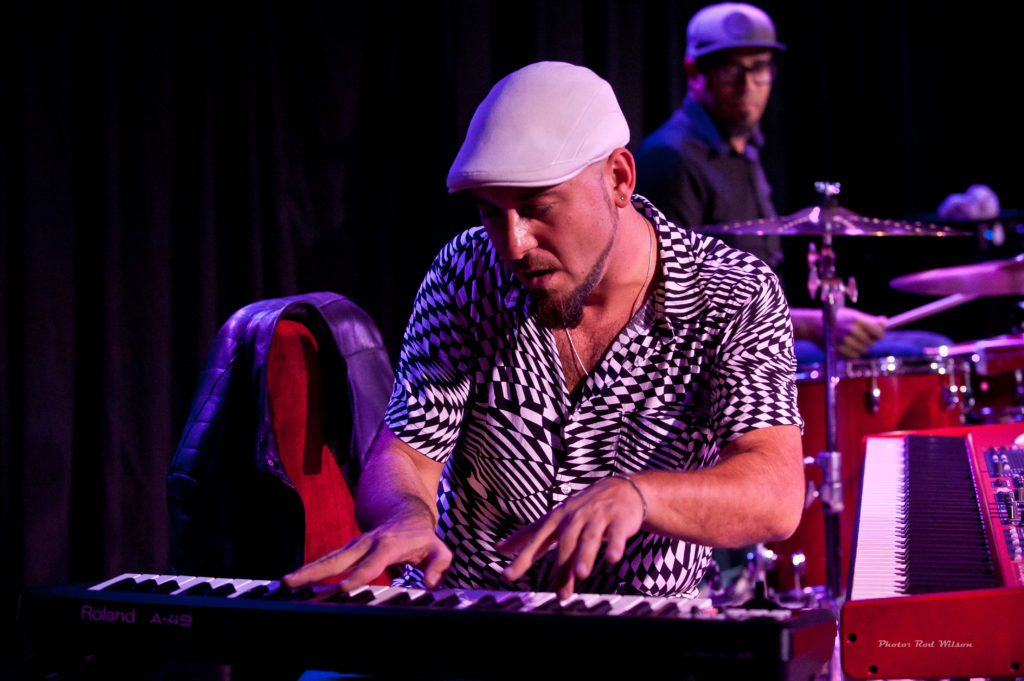 production of his first solo album “Diario de Viaje” (Travel Diary) in 2010. The album received critical acclaim from music industry journals, and was chosen as one of the best Latin Jazz albums of the year by JAZZ FM Toronto. He went on to record a further 3 albums that cemented his unique sound, culminating in his 4th and latest album, “Made in Canada” (2017), which also happens to be his first live recording. Gabriel’s songs are a representation of the many cultures which have influenced his music over the years, with a deep core in Latin Jazz.
production of his first solo album “Diario de Viaje” (Travel Diary) in 2010. The album received critical acclaim from music industry journals, and was chosen as one of the best Latin Jazz albums of the year by JAZZ FM Toronto. He went on to record a further 3 albums that cemented his unique sound, culminating in his 4th and latest album, “Made in Canada” (2017), which also happens to be his first live recording. Gabriel’s songs are a representation of the many cultures which have influenced his music over the years, with a deep core in Latin Jazz.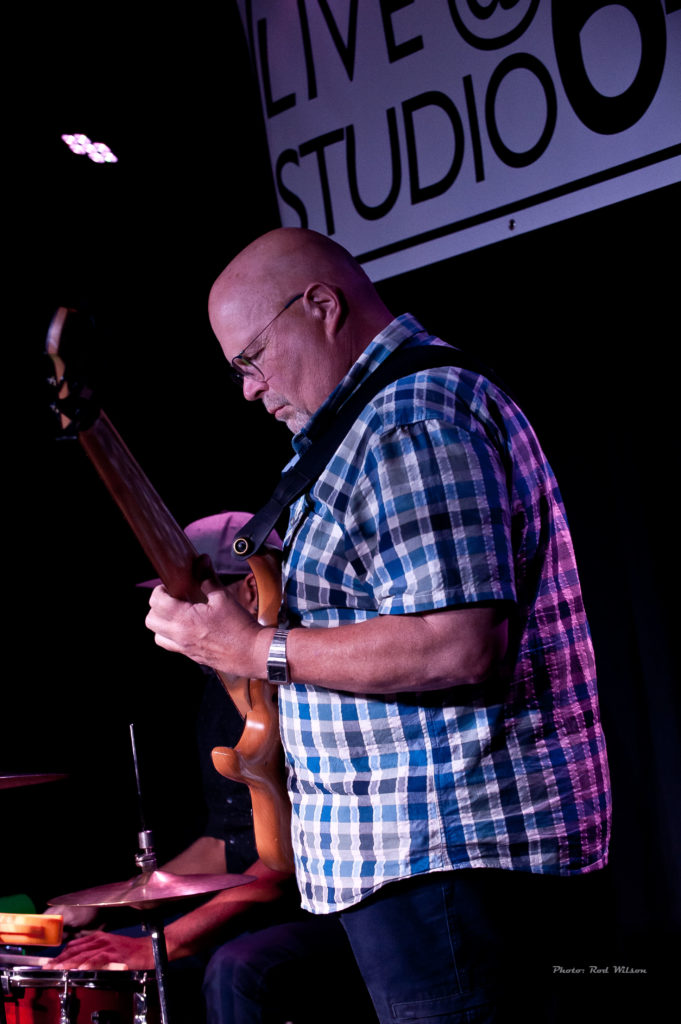 Doug Stephenson on bass and Tony Ferraro on drums for a collection of some familiar material (Juan Tizol’s Caravan and Ahmad Jamal’s Poinciana) along with his original compositions. This time around the other members of the trio were Cameron Hood from Vancouver on 6 string Tobias electric bass and Luis “El Pana” Tovar on drums. Luis is originally from Venezuela and is now a resident of Calgary. The program for the evening was all original material. As can be imaged, rehearsing such a scattered group of musicians is a challenge. It was done by exchanging mp3’s across continents followed by only three days of rehearsals before the tour. Cameron assures me that the music is fiendishly difficult and for him to nail the exotic piece “in sevens” required many hours of solo practice. Cameron explained that the piece was in 7/8 (perhaps a nod to Gabriel’s Turkish roots) but it was complicated by mirror images of the rhythm. 123 4567 followed by 1234 567 – three and four followed by four and three. On top of that there was all the salsa, Latin and funk overtones. I confess as an Anglo the names of all the Spanish tunes just flew by me. “Oh yeah. There was that thing in sevens. Then there was the Flamenco piano piece and the piece with fragments of Astor Piazolla’s Libertango but as to the names of the tunes they just flew by”. No matter. The music was a tour de force of Latin, Funk and not to be forgotten Nuevo Tango.
Doug Stephenson on bass and Tony Ferraro on drums for a collection of some familiar material (Juan Tizol’s Caravan and Ahmad Jamal’s Poinciana) along with his original compositions. This time around the other members of the trio were Cameron Hood from Vancouver on 6 string Tobias electric bass and Luis “El Pana” Tovar on drums. Luis is originally from Venezuela and is now a resident of Calgary. The program for the evening was all original material. As can be imaged, rehearsing such a scattered group of musicians is a challenge. It was done by exchanging mp3’s across continents followed by only three days of rehearsals before the tour. Cameron assures me that the music is fiendishly difficult and for him to nail the exotic piece “in sevens” required many hours of solo practice. Cameron explained that the piece was in 7/8 (perhaps a nod to Gabriel’s Turkish roots) but it was complicated by mirror images of the rhythm. 123 4567 followed by 1234 567 – three and four followed by four and three. On top of that there was all the salsa, Latin and funk overtones. I confess as an Anglo the names of all the Spanish tunes just flew by me. “Oh yeah. There was that thing in sevens. Then there was the Flamenco piano piece and the piece with fragments of Astor Piazolla’s Libertango but as to the names of the tunes they just flew by”. No matter. The music was a tour de force of Latin, Funk and not to be forgotten Nuevo Tango.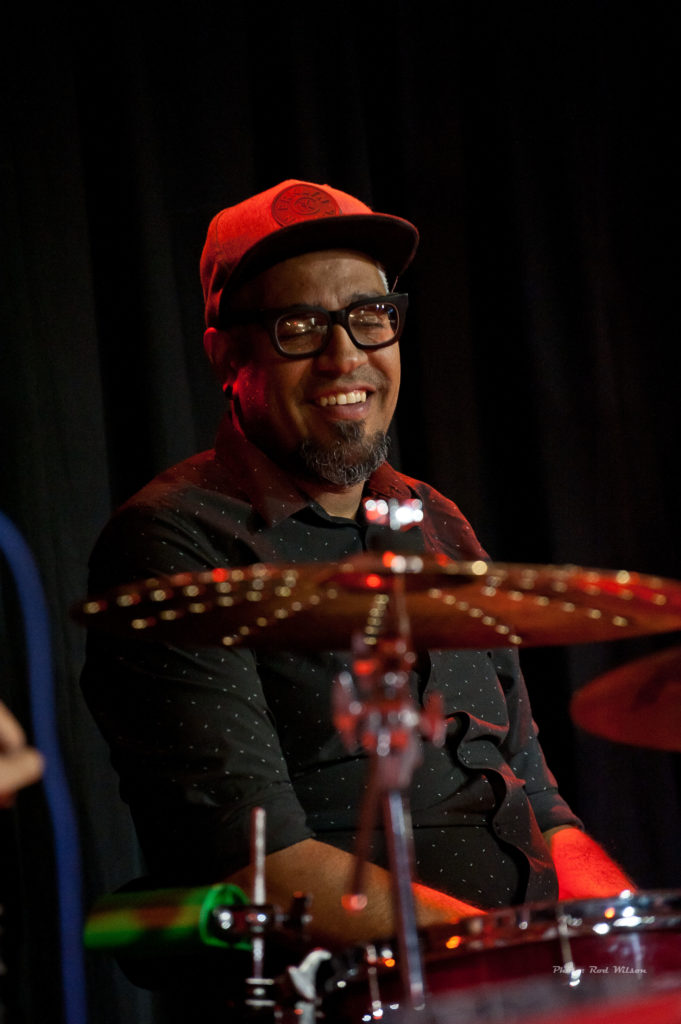
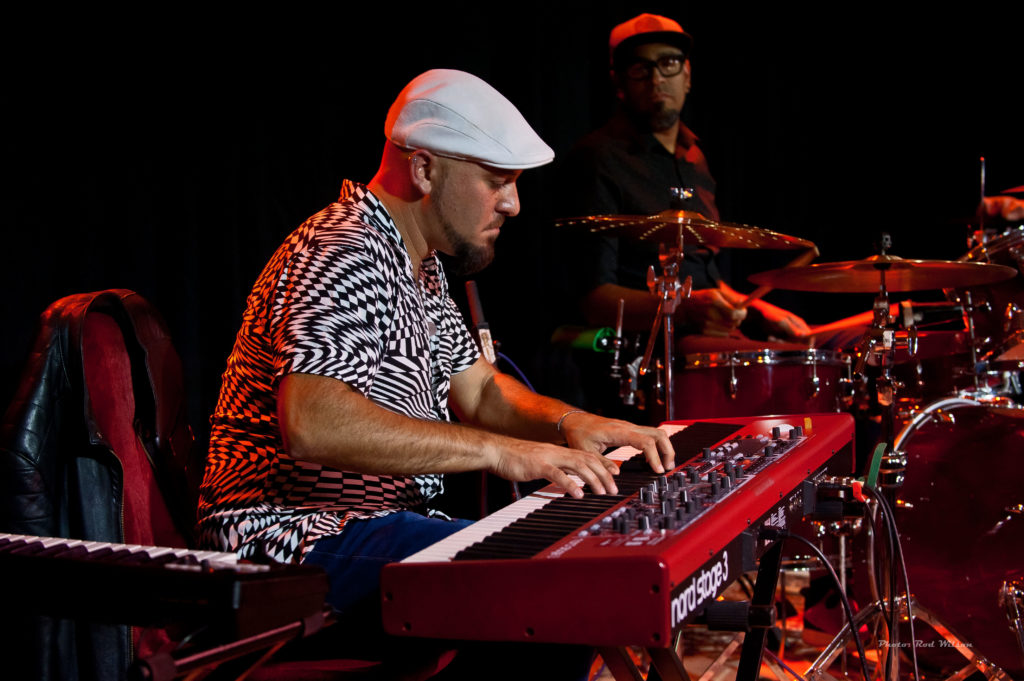
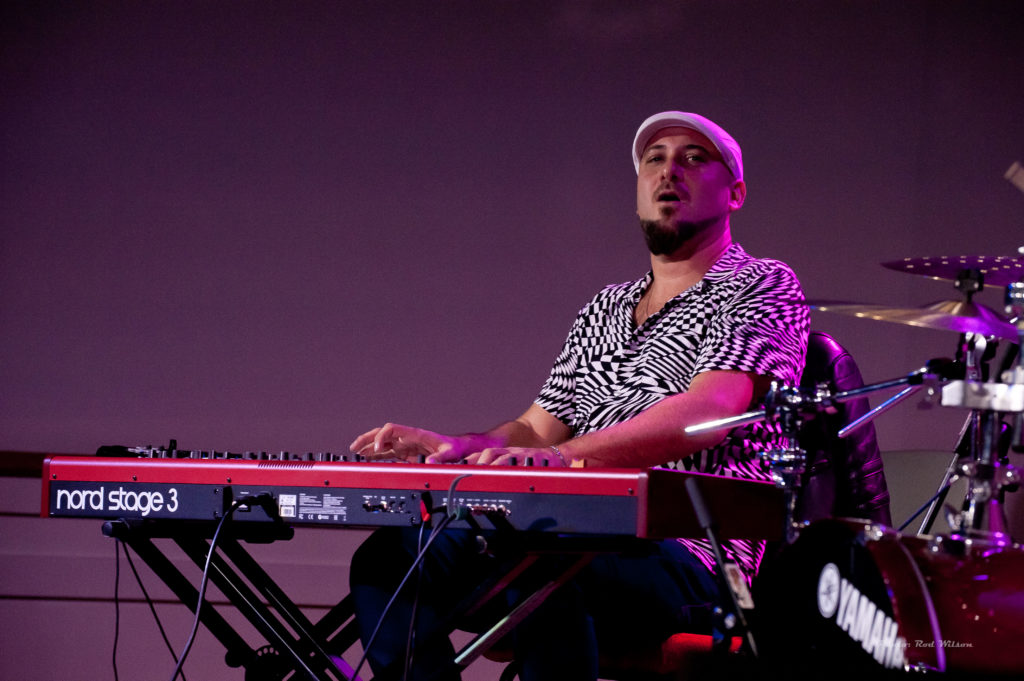
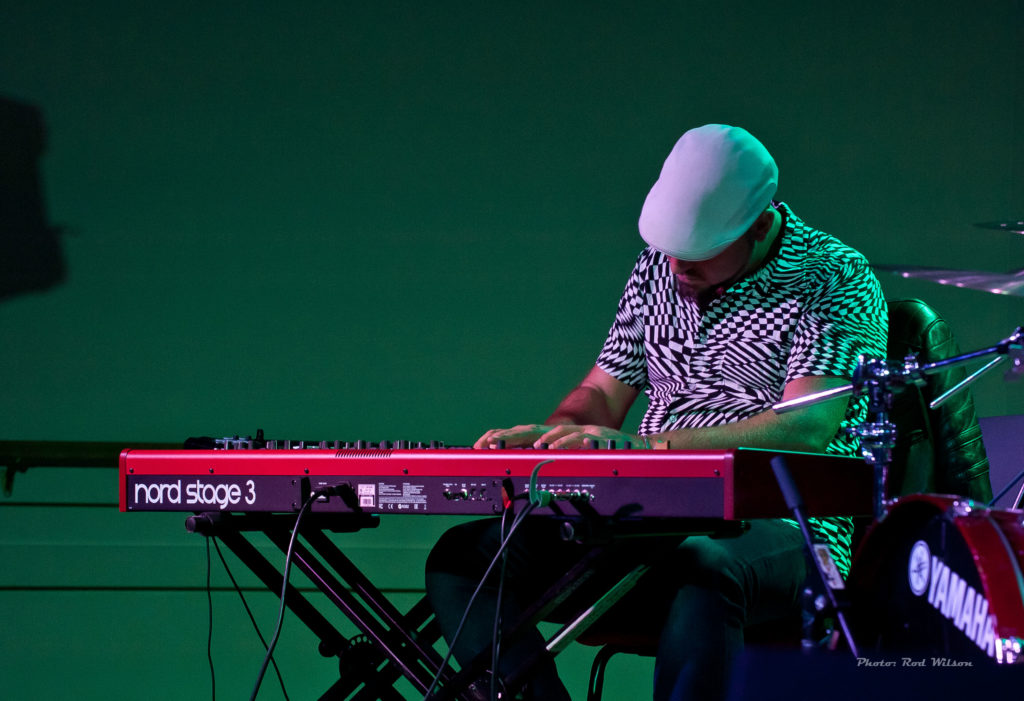
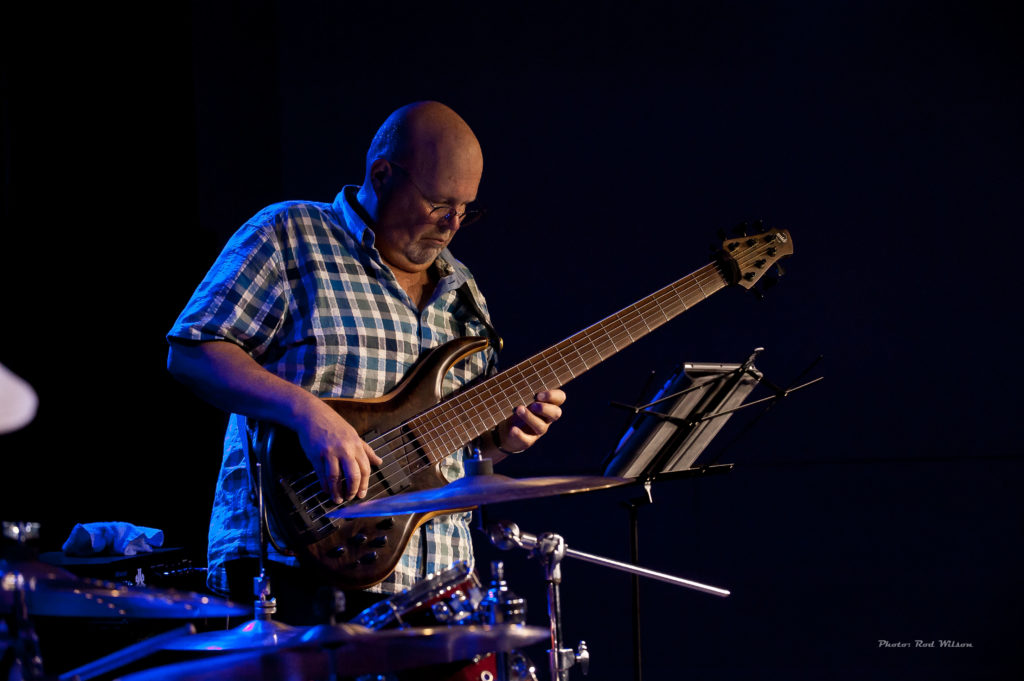
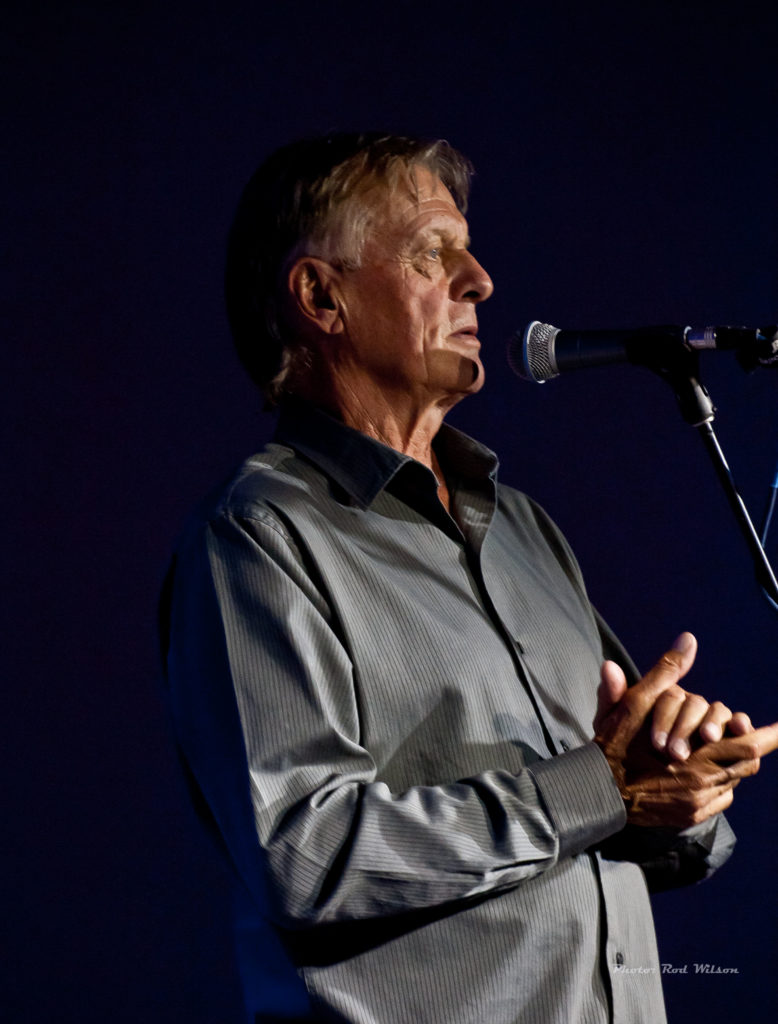
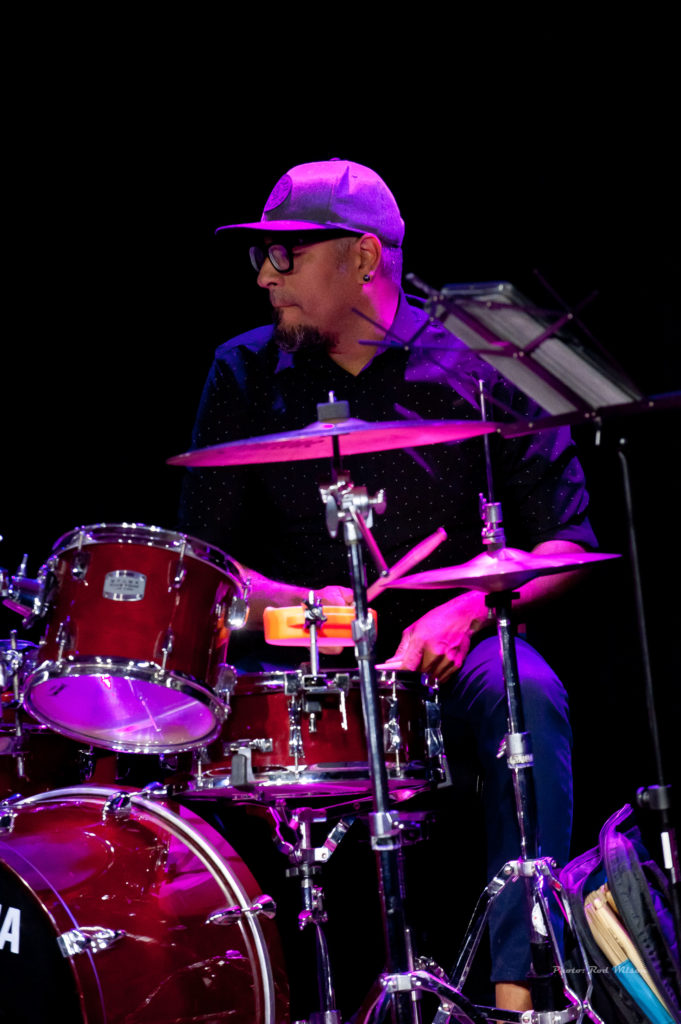
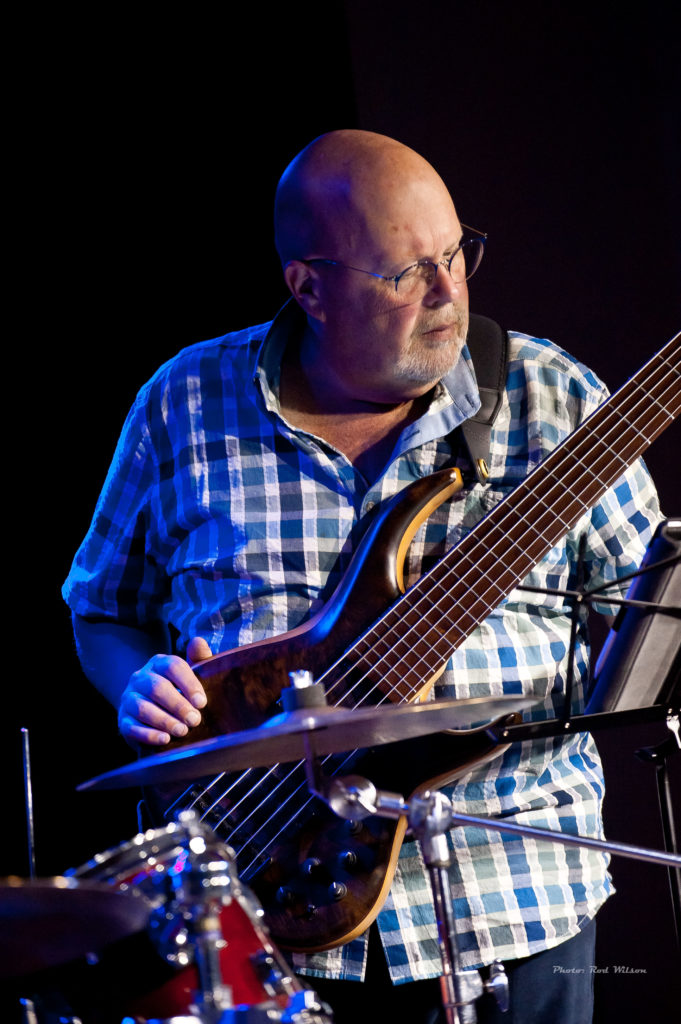
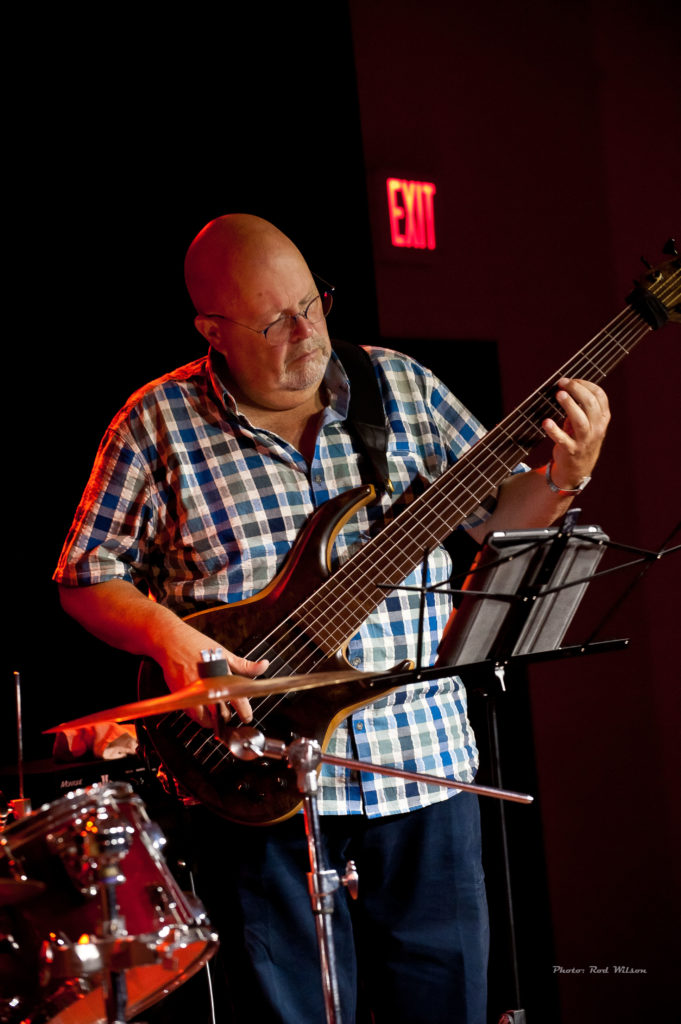
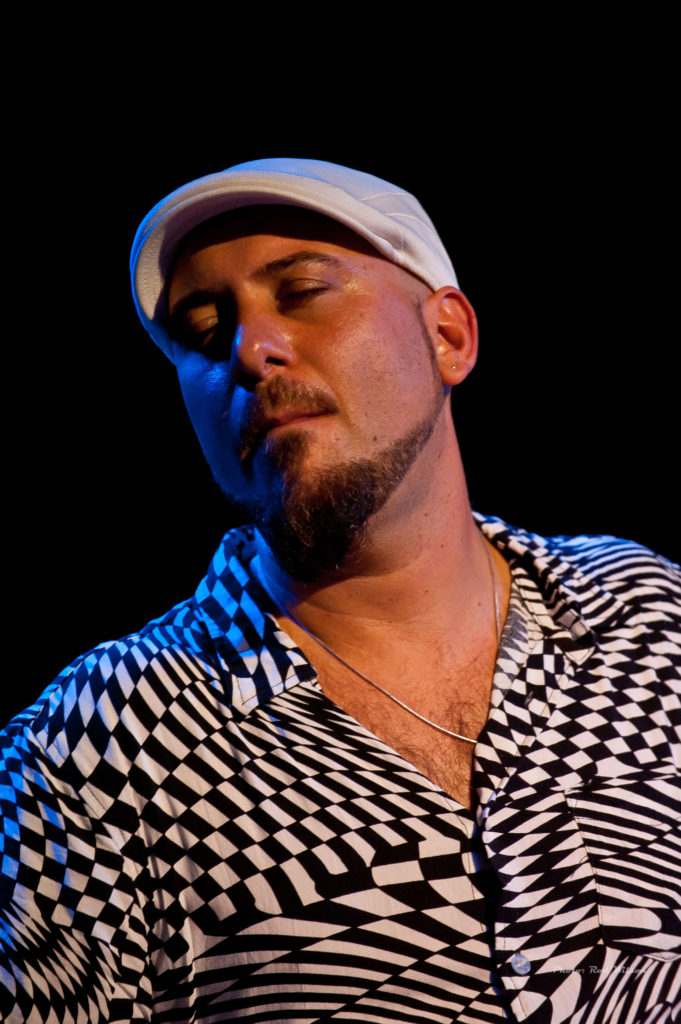
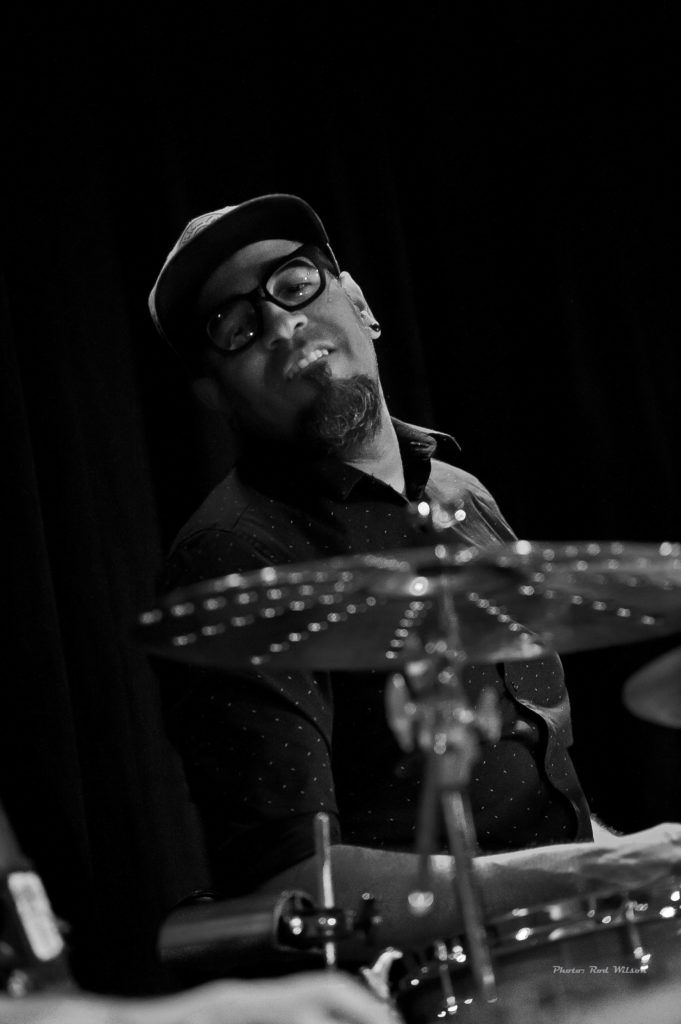
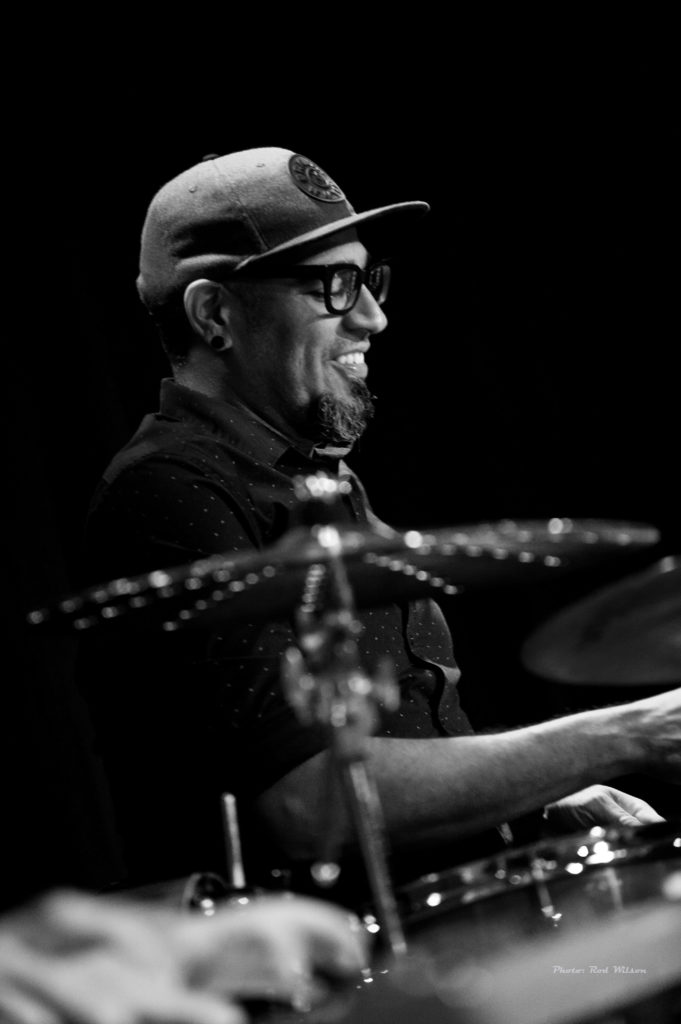
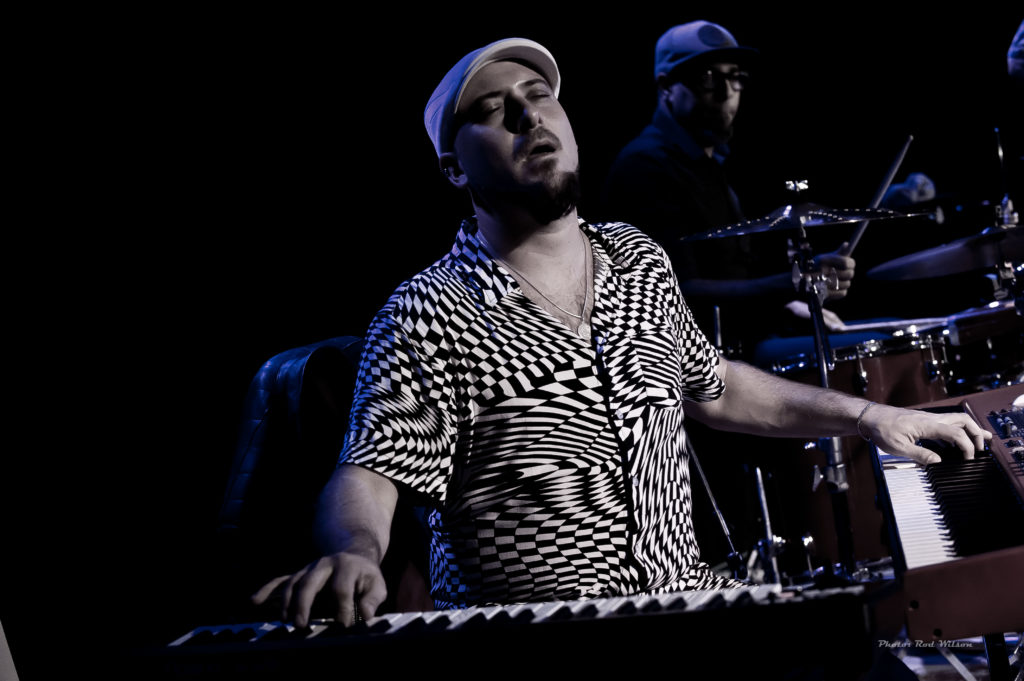
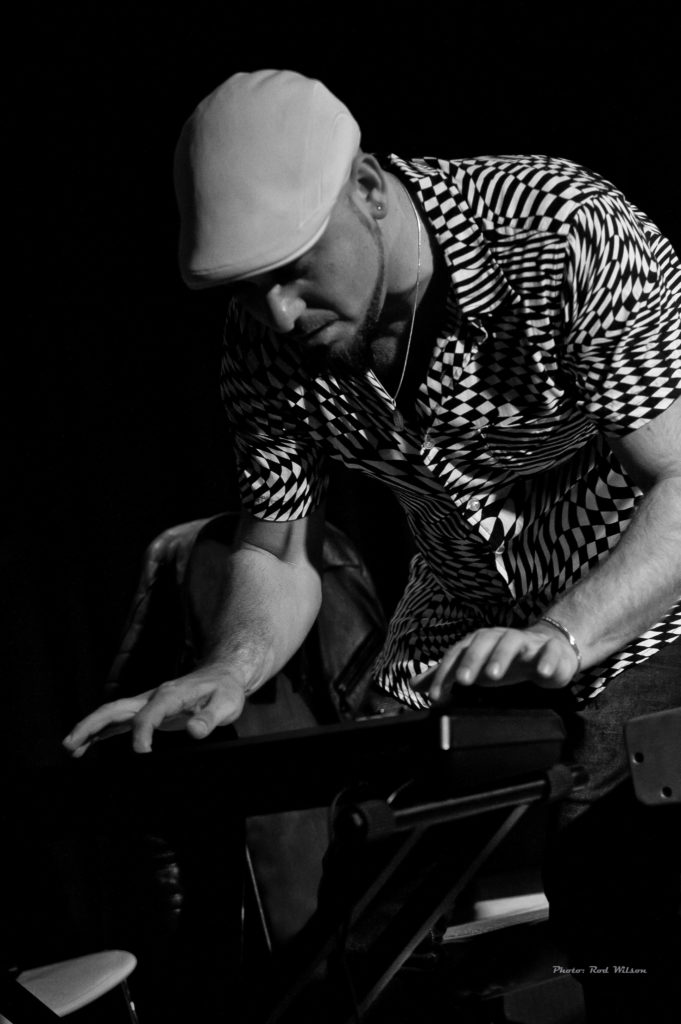
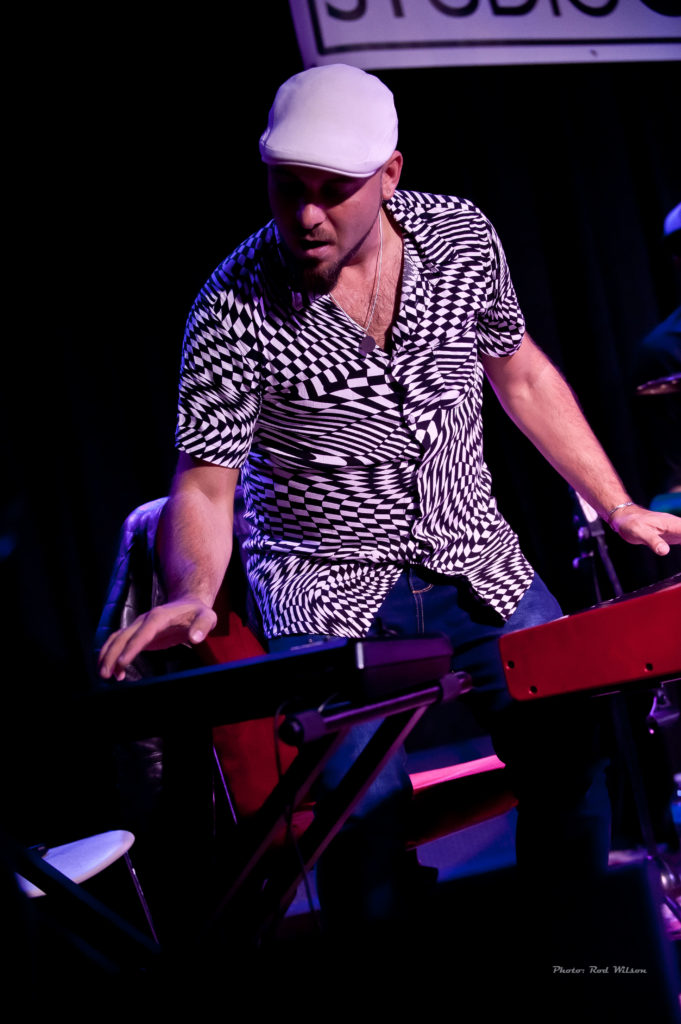
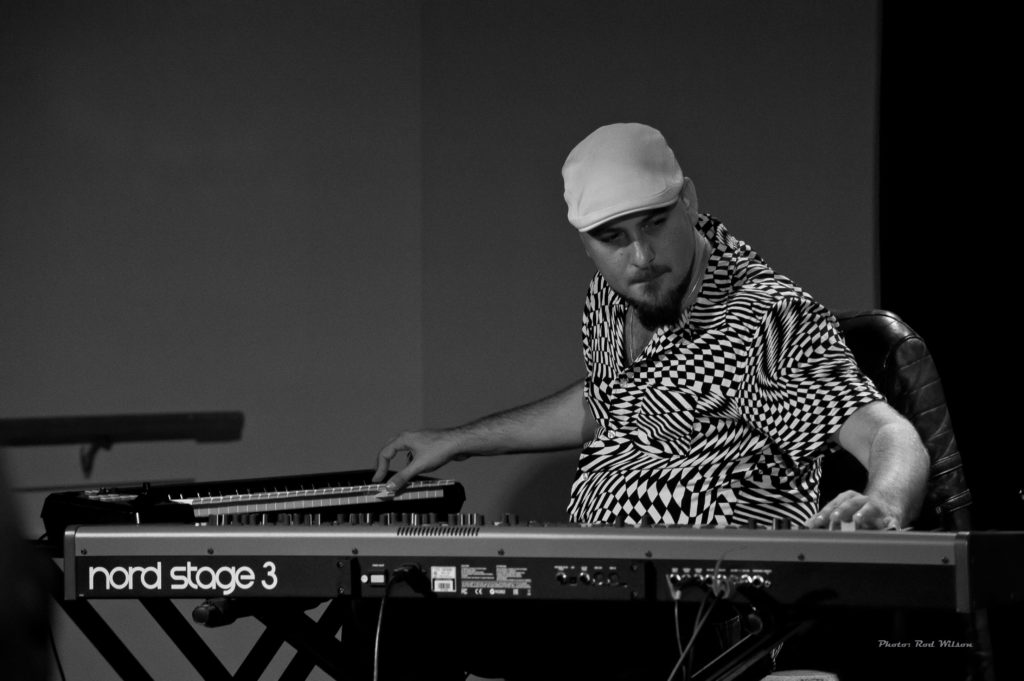
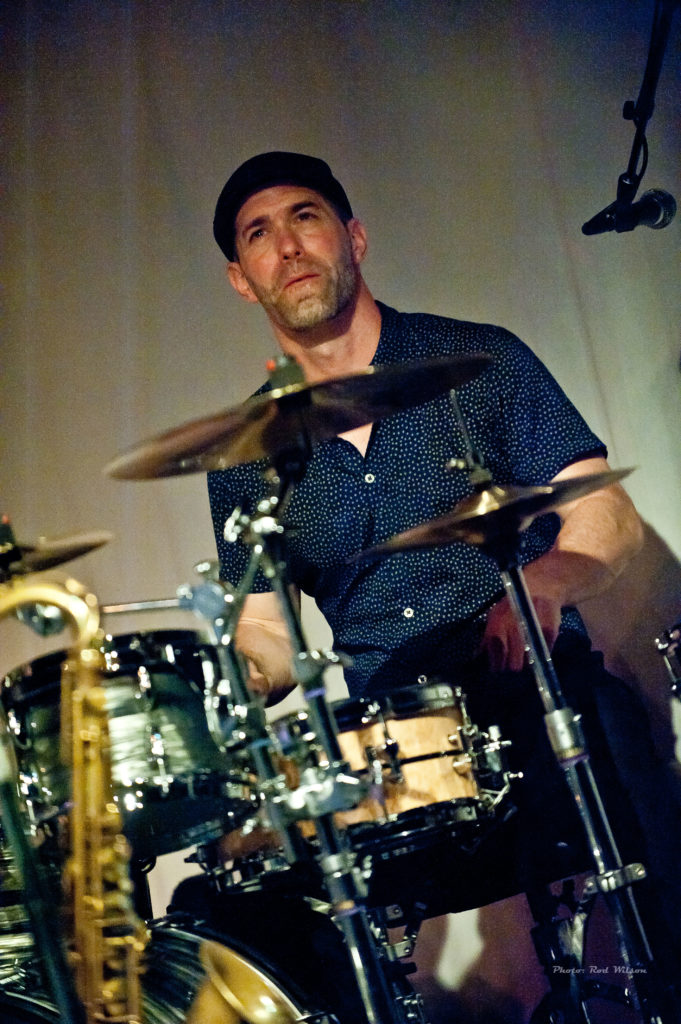
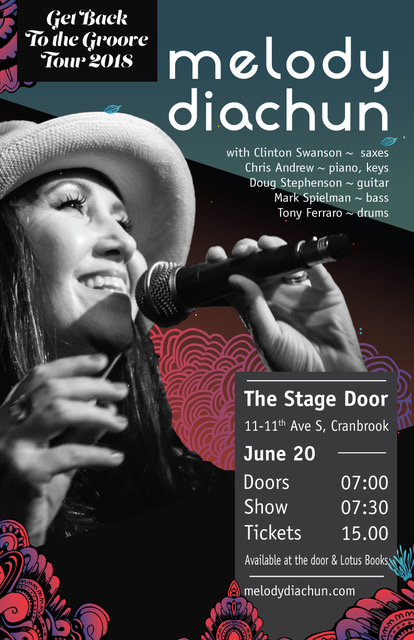
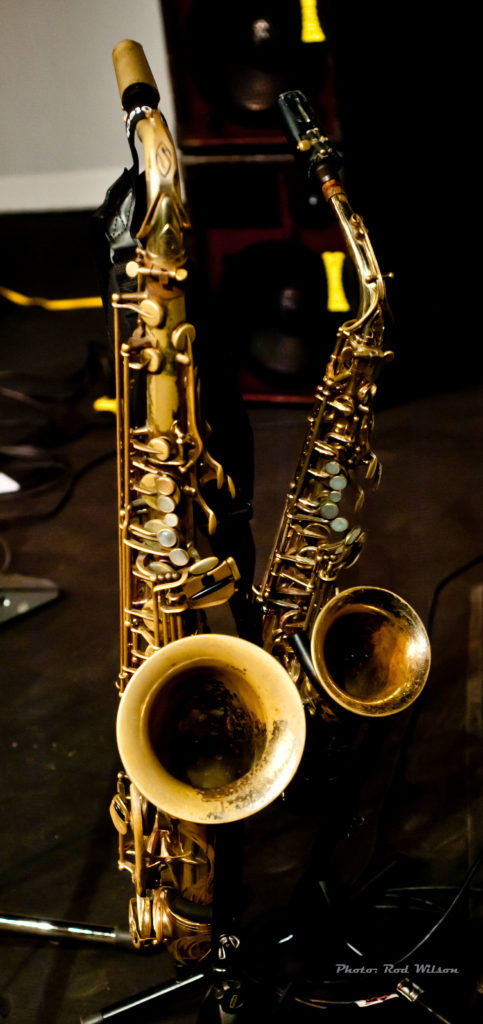 group of first class musicians that included Tony Ferraro on drums, Doug Stephenson on guitar, Mike Spielman on bass, Clinton Swanson on saxes and the Edmontonian Chris Andrew on keyboards. True to her promise of “getting back to the grove” she kicked off the evening with ZZ Top’s Sharp Dressed Man and an her own original Get Back to the Grove. What I like about the Stage Door as a venue is the opportunity to really hear the music. There are no impaired sight lines, no idle chatter or bar room clatter. It’s just about the music, the musicians and the the audience. The little nuances that might be easily passed over in other environs are there to be appreciated. When Melody picked up the shakers and beat out a groove Tony was right there behind her doubling the rhythm on his snare. The resulting pulse was mesmerizing. When Clinton Swanson rolled off the end of a solo guitarist Doug Stephenson was right there to pick it up and extend the melodic line that Clinton was exploring. And so on. The evening just rolled on with magical vocals and sparkling solos. Here are some more images from the evening:
group of first class musicians that included Tony Ferraro on drums, Doug Stephenson on guitar, Mike Spielman on bass, Clinton Swanson on saxes and the Edmontonian Chris Andrew on keyboards. True to her promise of “getting back to the grove” she kicked off the evening with ZZ Top’s Sharp Dressed Man and an her own original Get Back to the Grove. What I like about the Stage Door as a venue is the opportunity to really hear the music. There are no impaired sight lines, no idle chatter or bar room clatter. It’s just about the music, the musicians and the the audience. The little nuances that might be easily passed over in other environs are there to be appreciated. When Melody picked up the shakers and beat out a groove Tony was right there behind her doubling the rhythm on his snare. The resulting pulse was mesmerizing. When Clinton Swanson rolled off the end of a solo guitarist Doug Stephenson was right there to pick it up and extend the melodic line that Clinton was exploring. And so on. The evening just rolled on with magical vocals and sparkling solos. Here are some more images from the evening: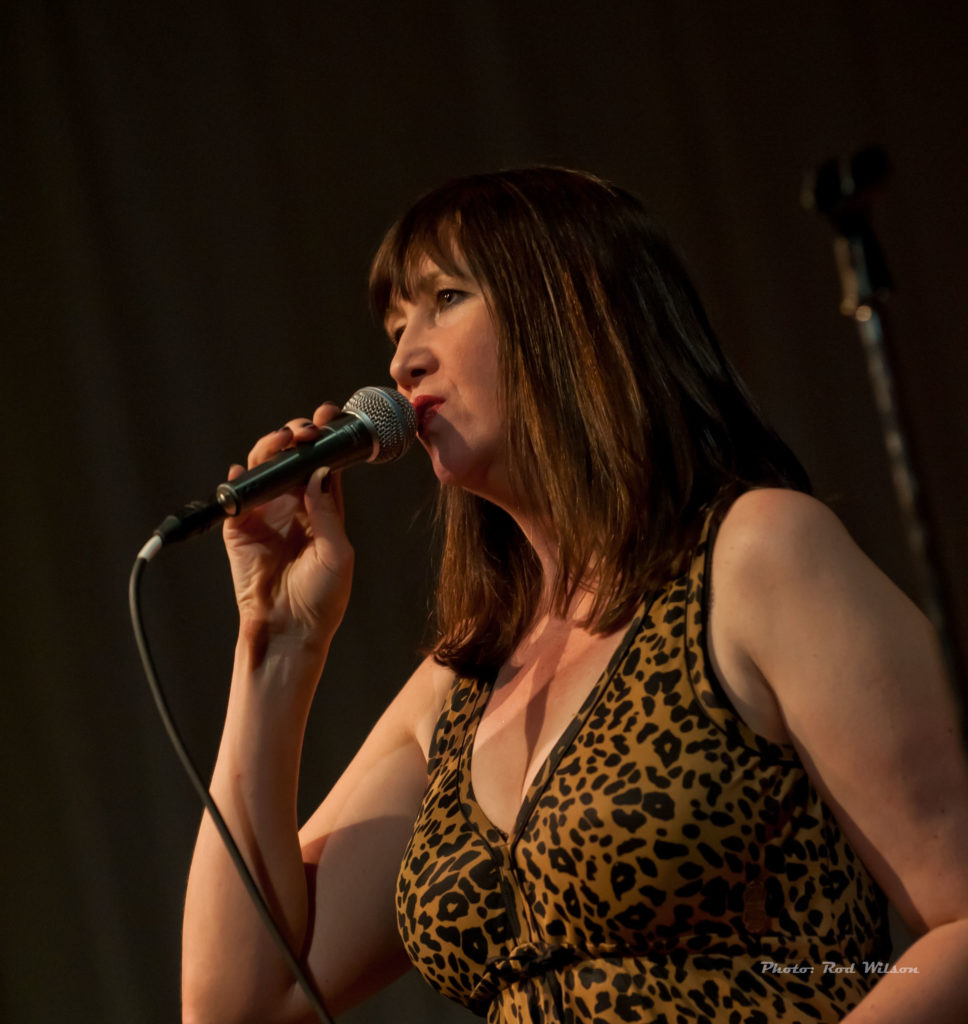
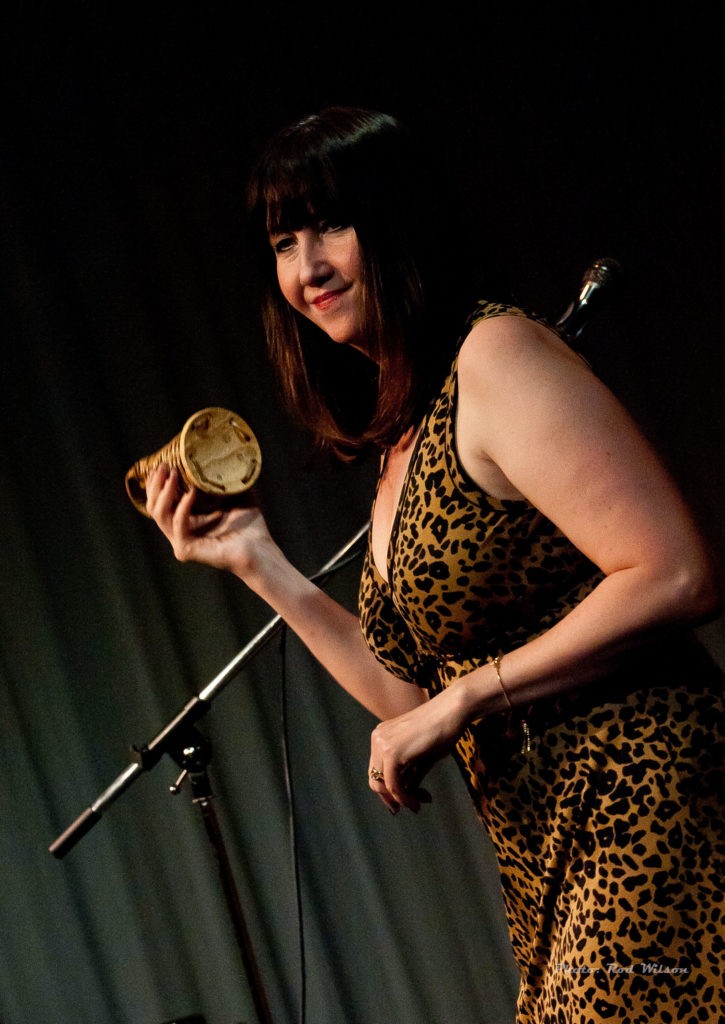
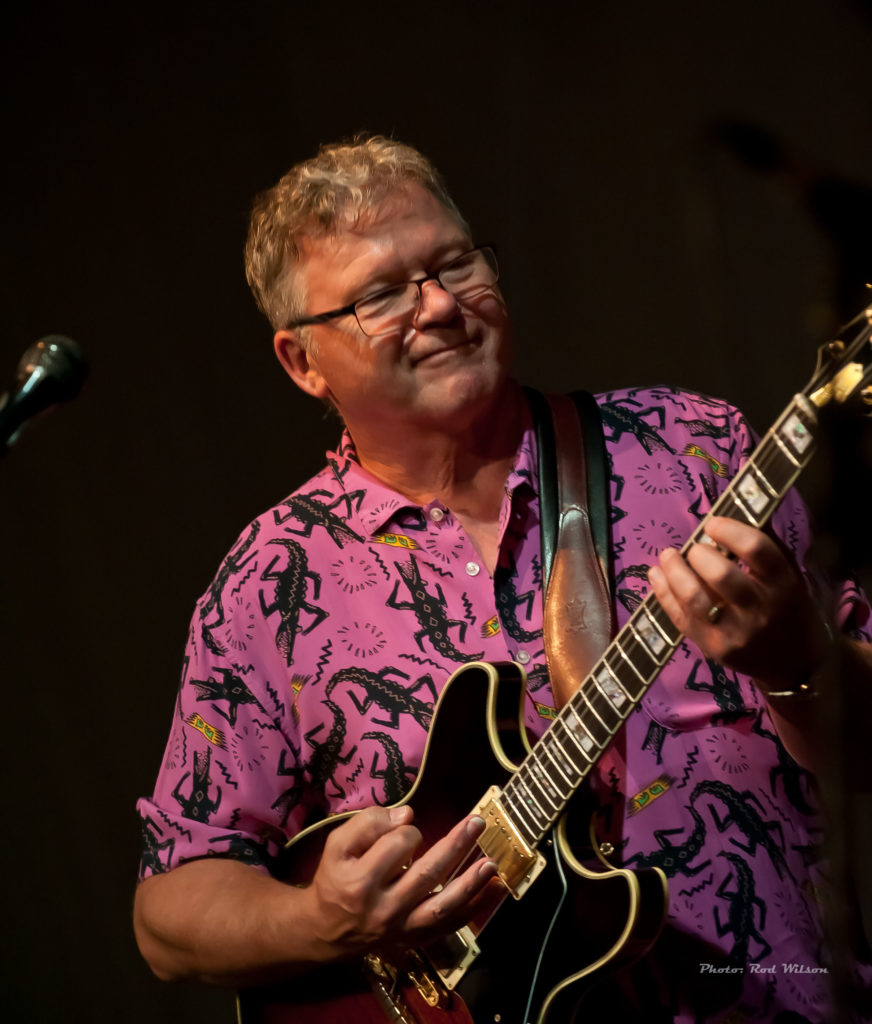
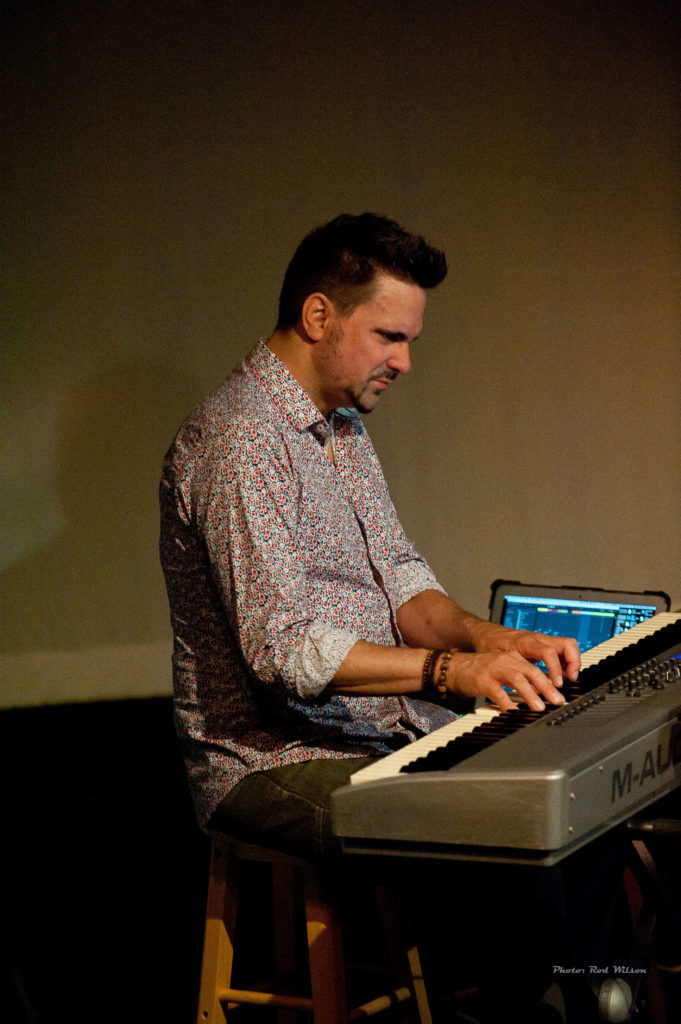
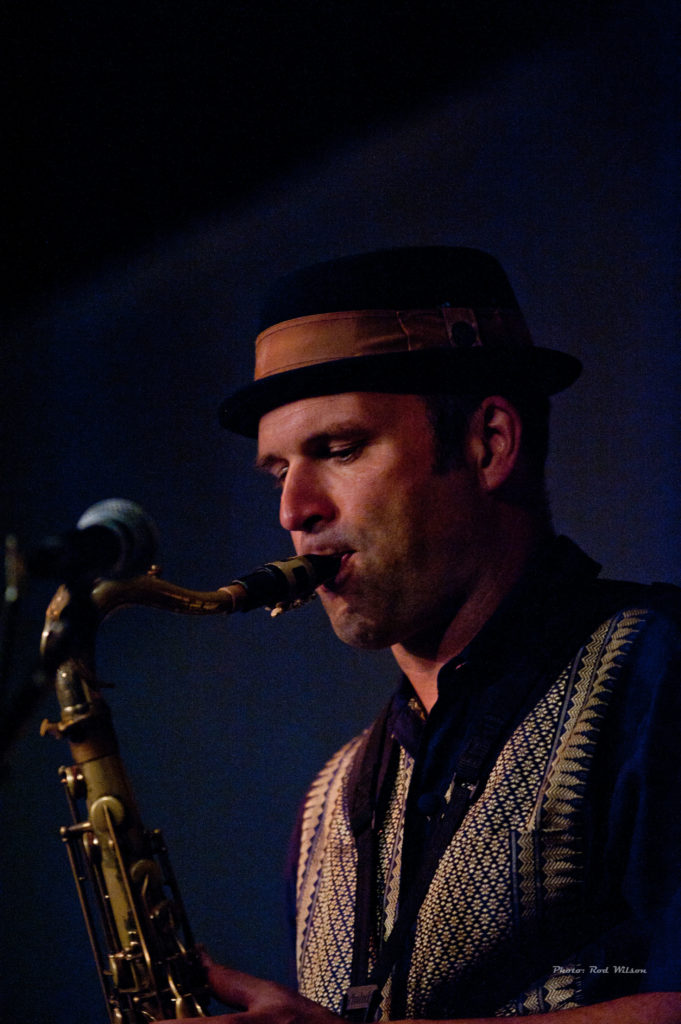
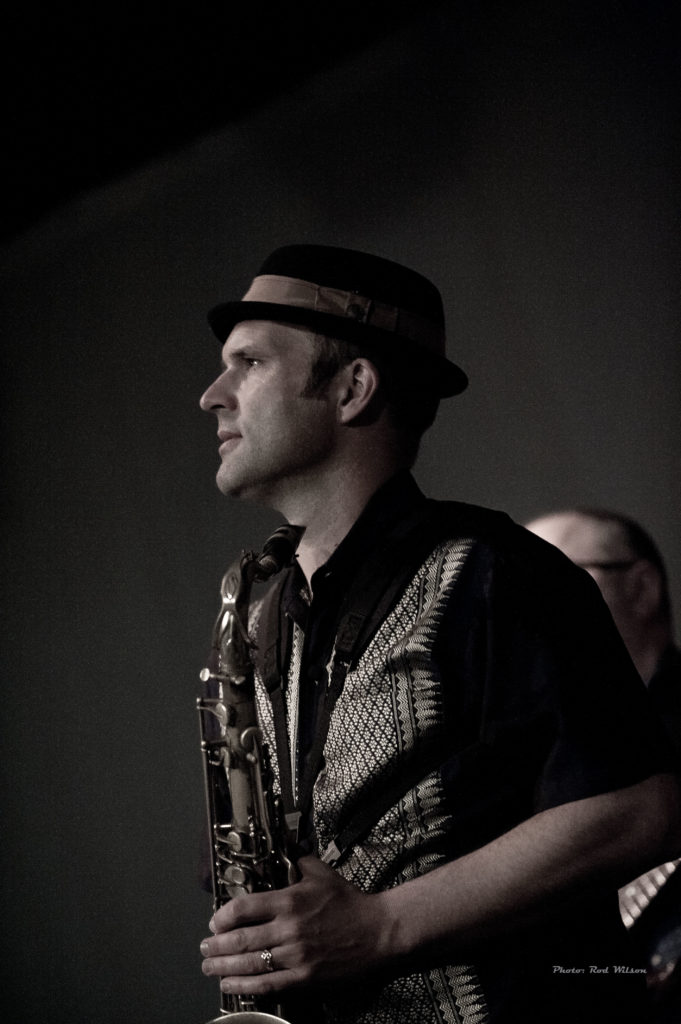
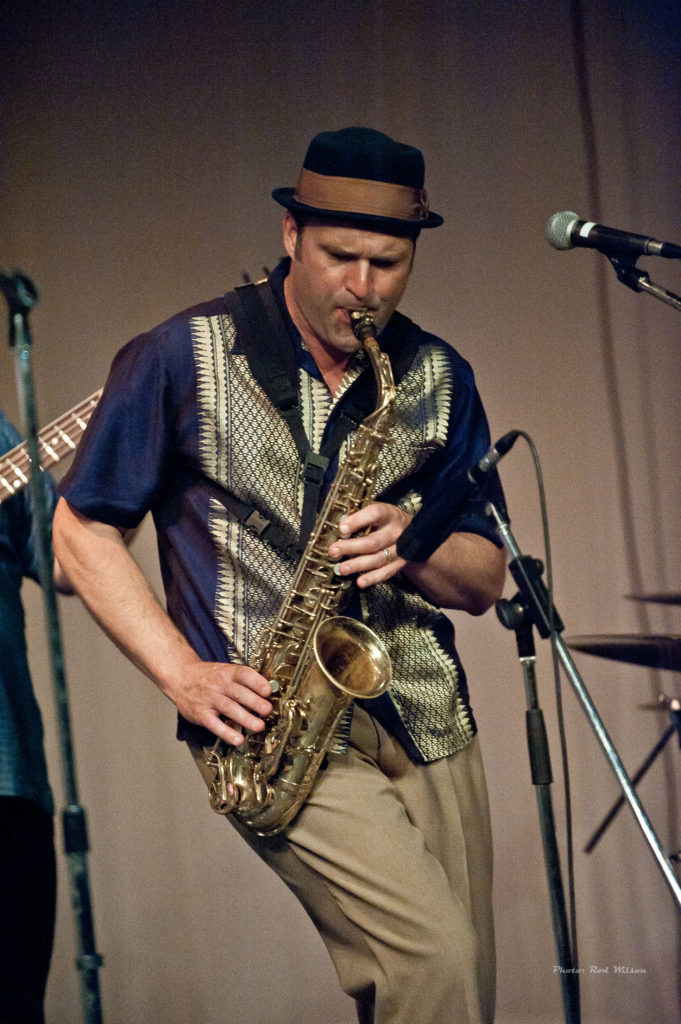
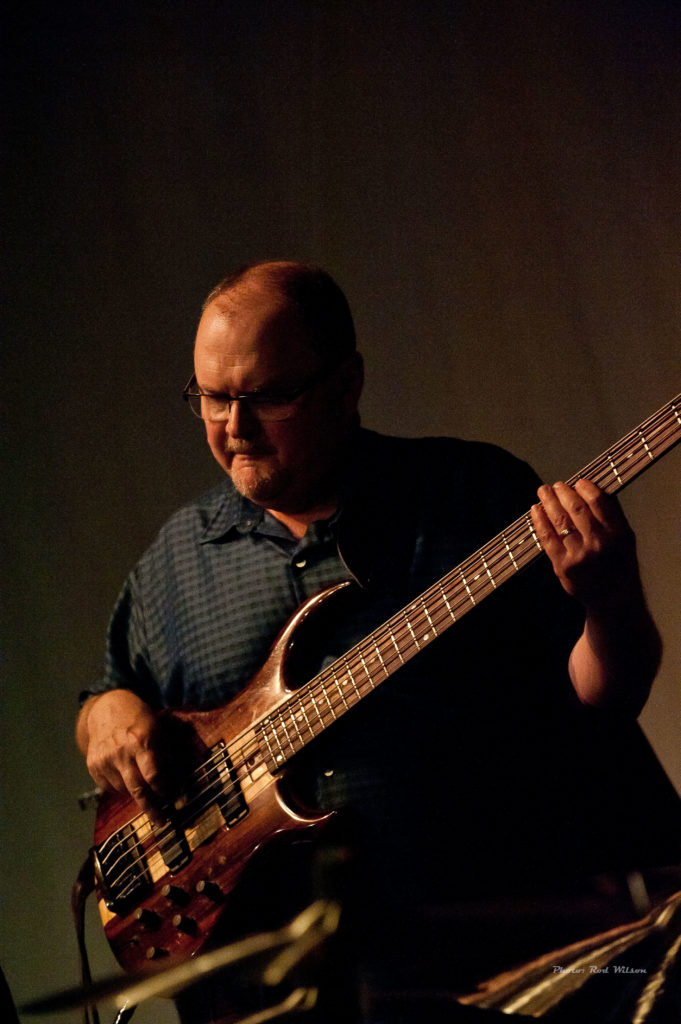
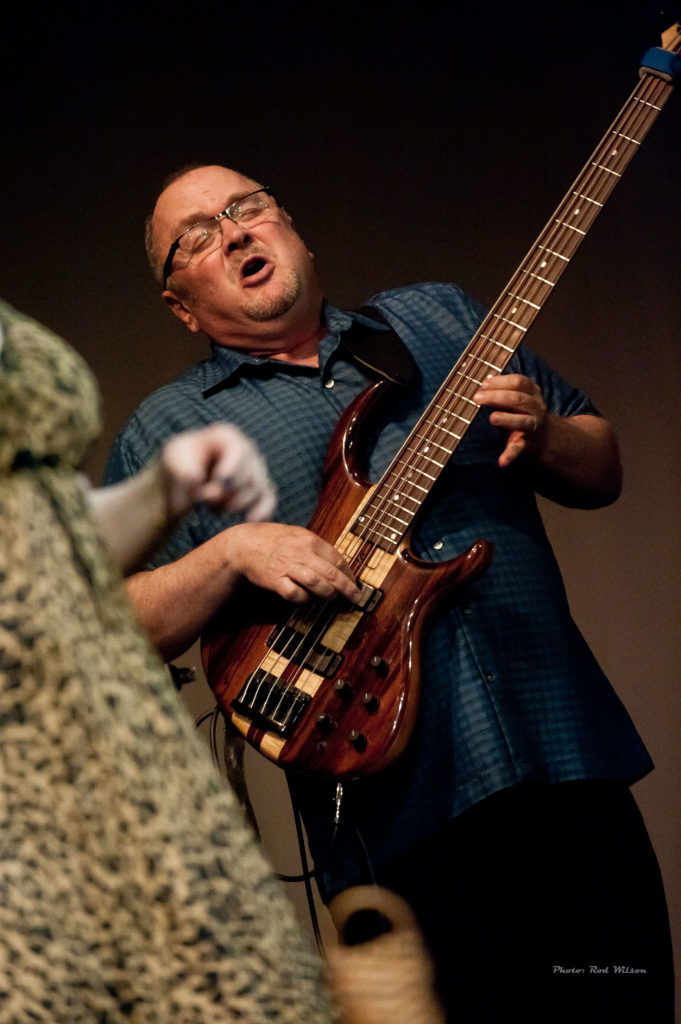
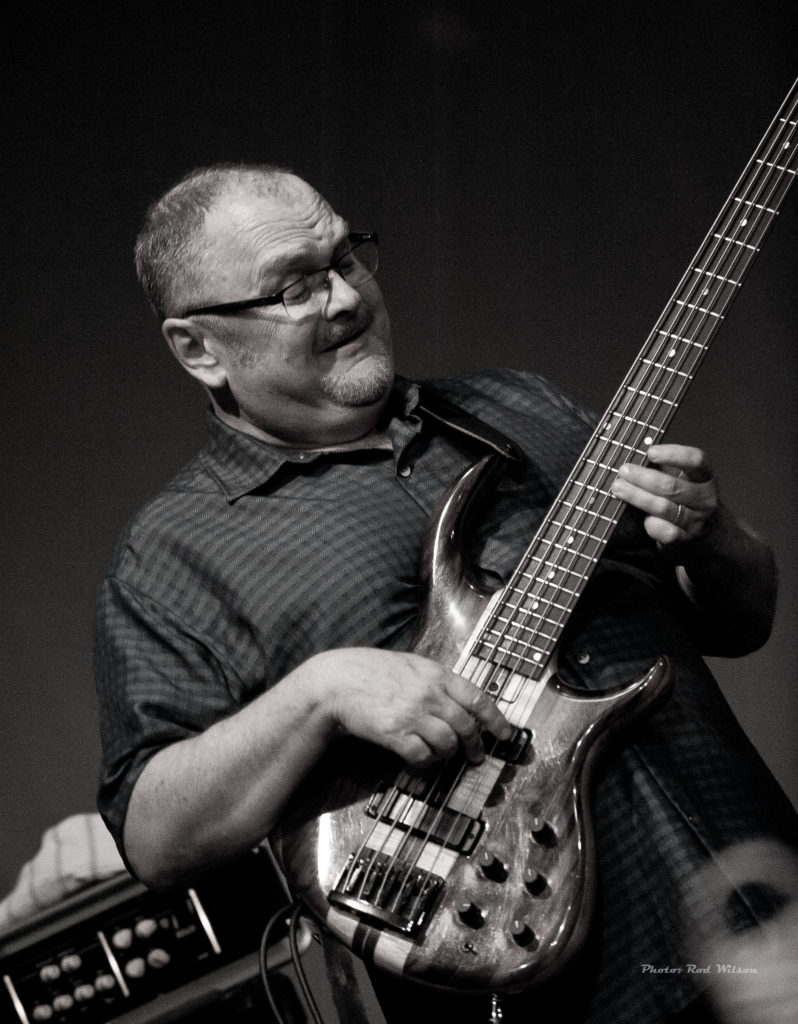
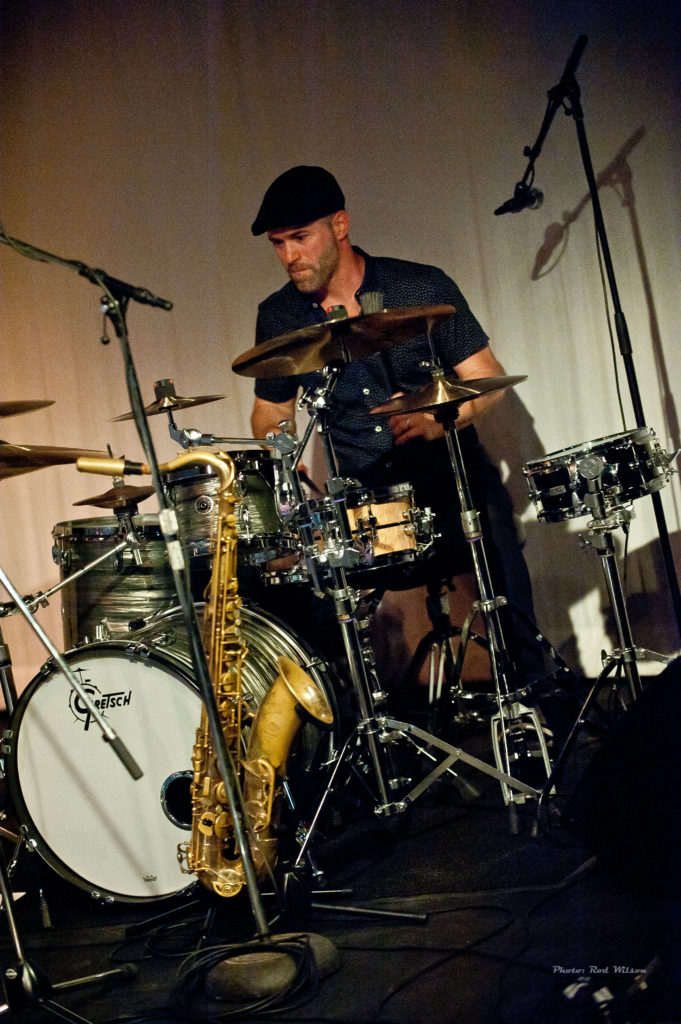
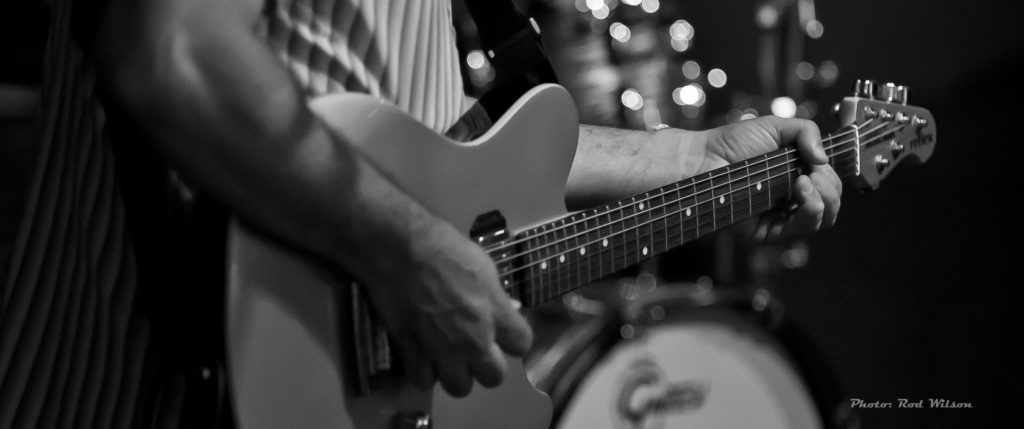
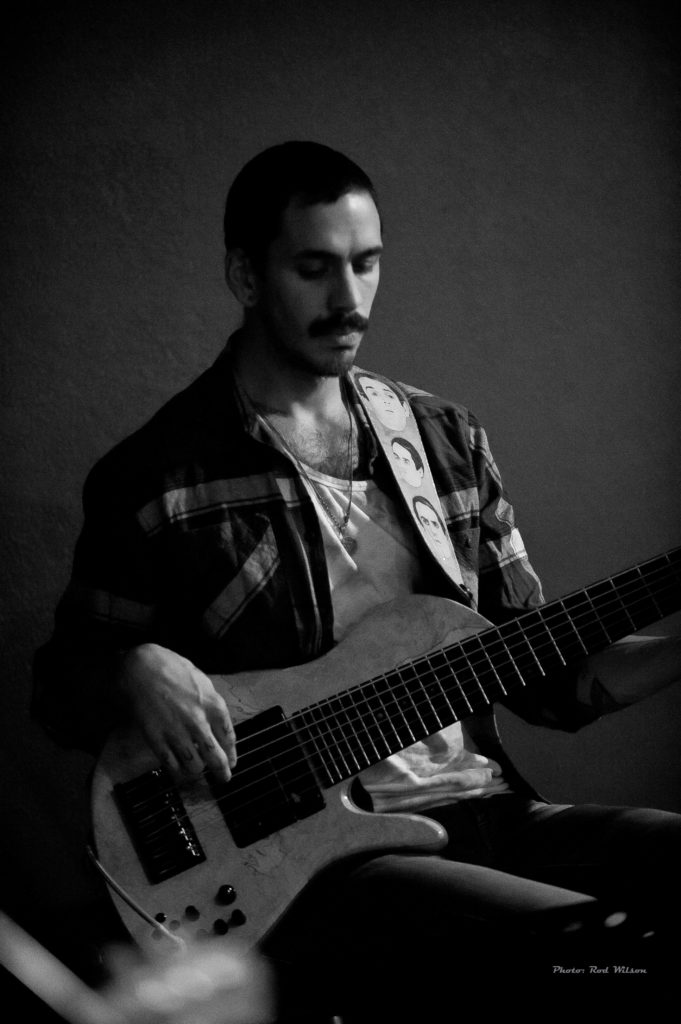 jazz performance. After it was over I begged to differ. It may have been masquerading as Soul and Funk but it was all jazz to me. Of course there were the Stevie Wonder, James Brown and Arethra Franklin hits and a sprinkling of Classic Rock (Drift Away and Harvest Moon). On a blues shuffle Michael Occhipinti did some romping around with his guitar set to an organ effect that made you look for the keyboard that wasn’t there. Lester played some searing alto sax solos and the giant in the back (Felix) played some blistering solos and backups on his Vinny Fodera six string bass. At one stage he was trading riffs with Michael that were over the top brilliant. This was an outstanding night of music.
jazz performance. After it was over I begged to differ. It may have been masquerading as Soul and Funk but it was all jazz to me. Of course there were the Stevie Wonder, James Brown and Arethra Franklin hits and a sprinkling of Classic Rock (Drift Away and Harvest Moon). On a blues shuffle Michael Occhipinti did some romping around with his guitar set to an organ effect that made you look for the keyboard that wasn’t there. Lester played some searing alto sax solos and the giant in the back (Felix) played some blistering solos and backups on his Vinny Fodera six string bass. At one stage he was trading riffs with Michael that were over the top brilliant. This was an outstanding night of music.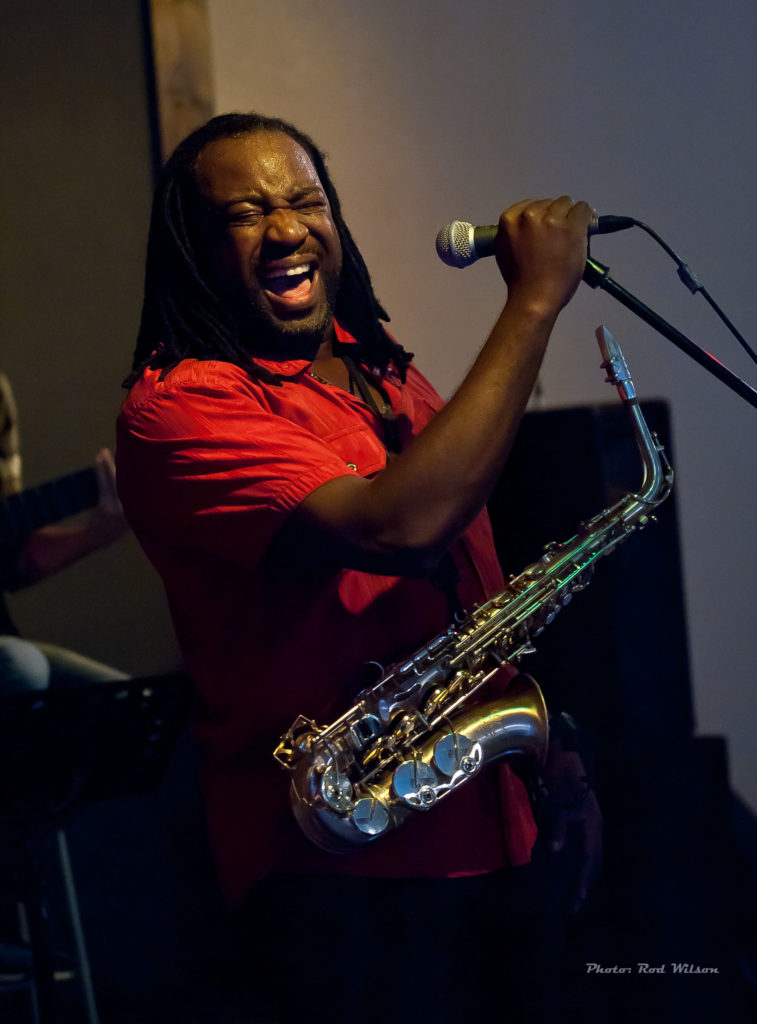
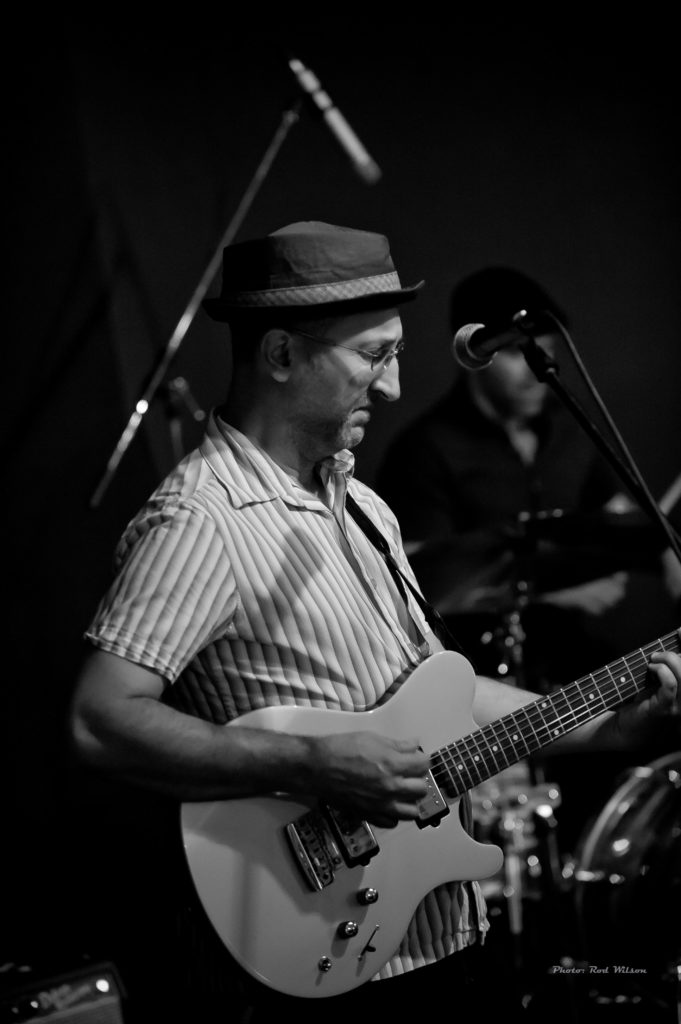
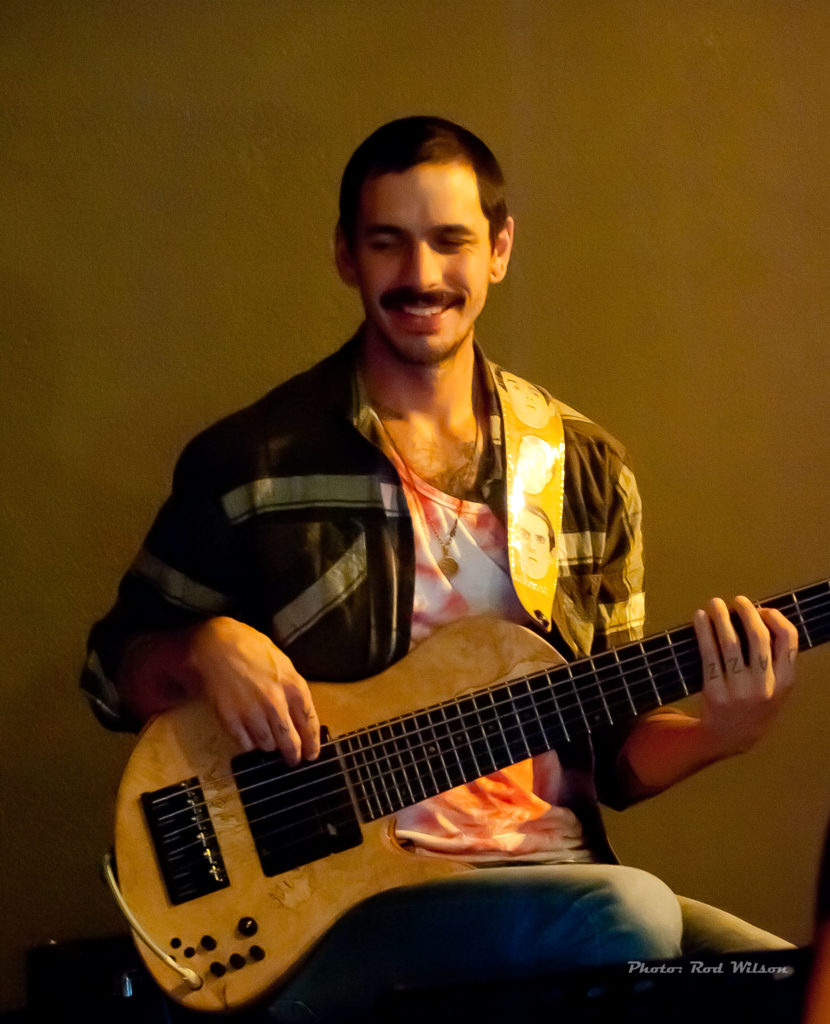
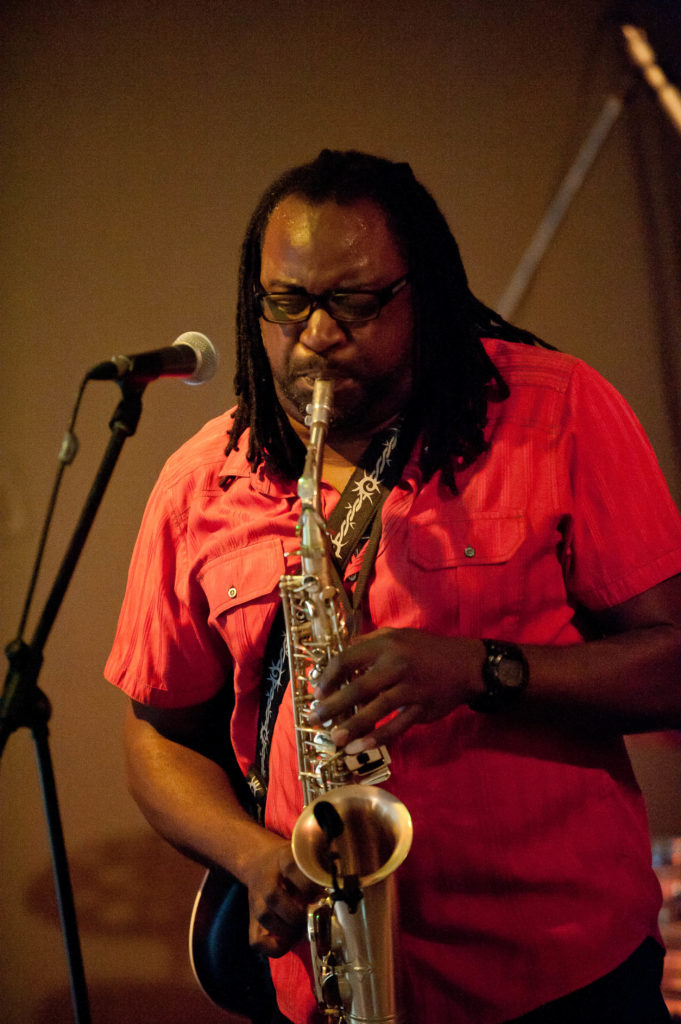
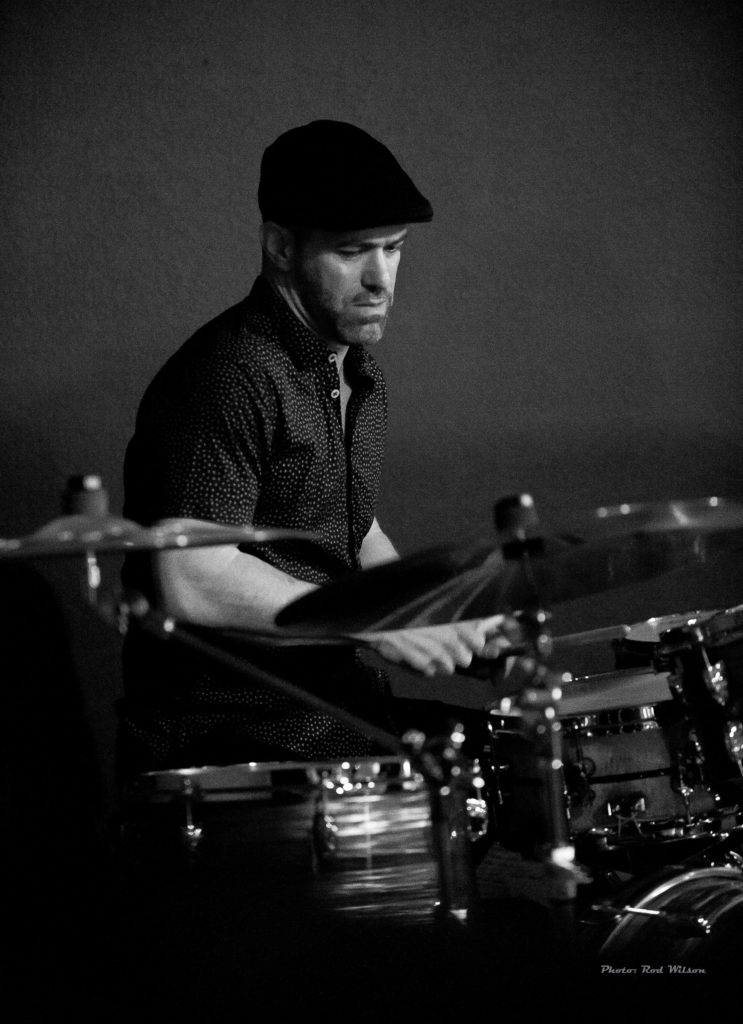
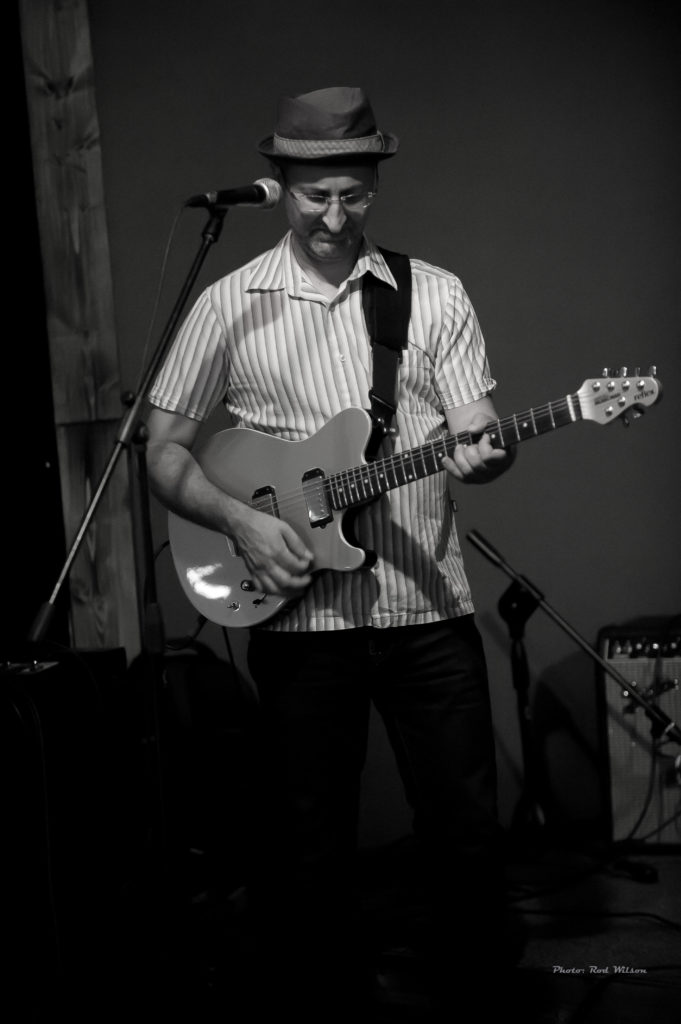
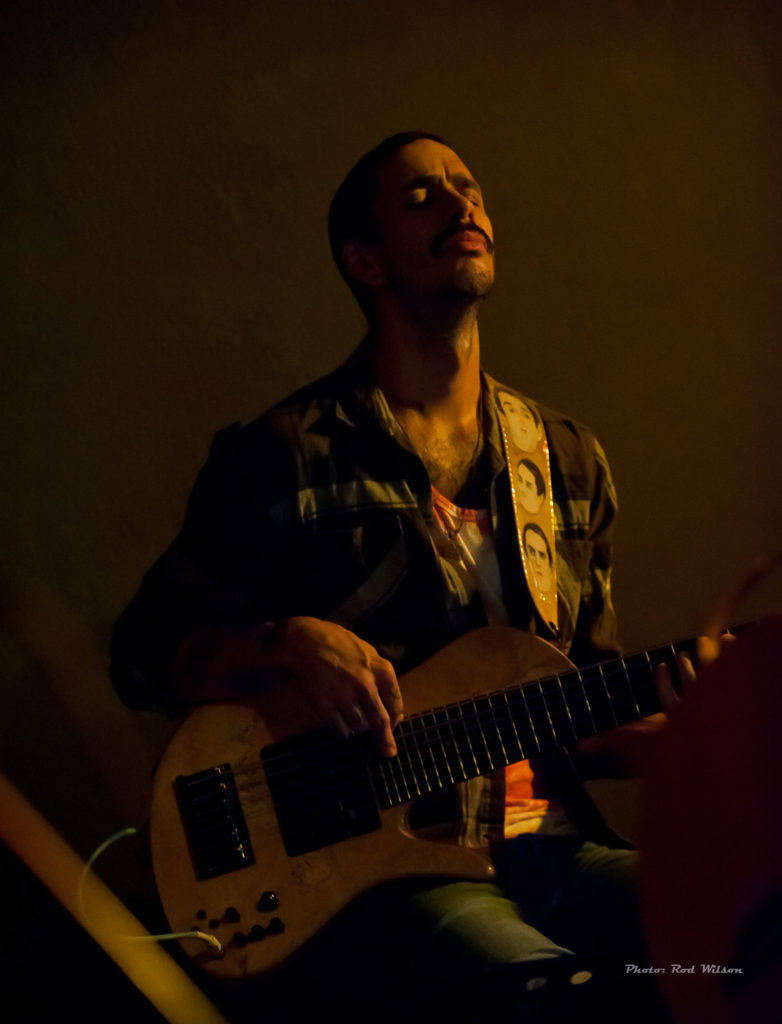
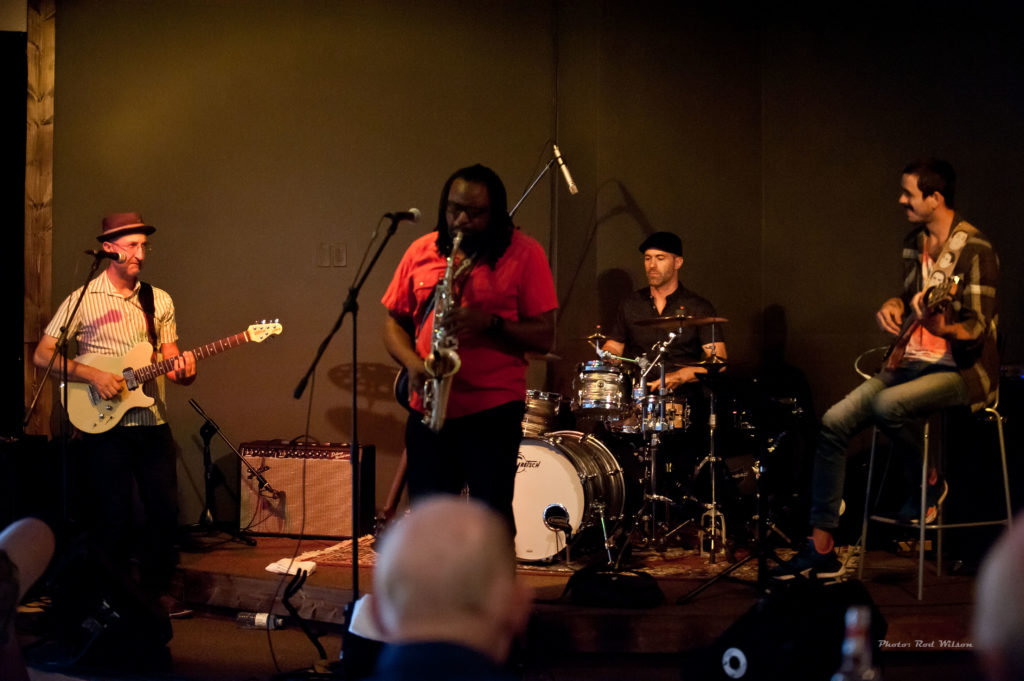
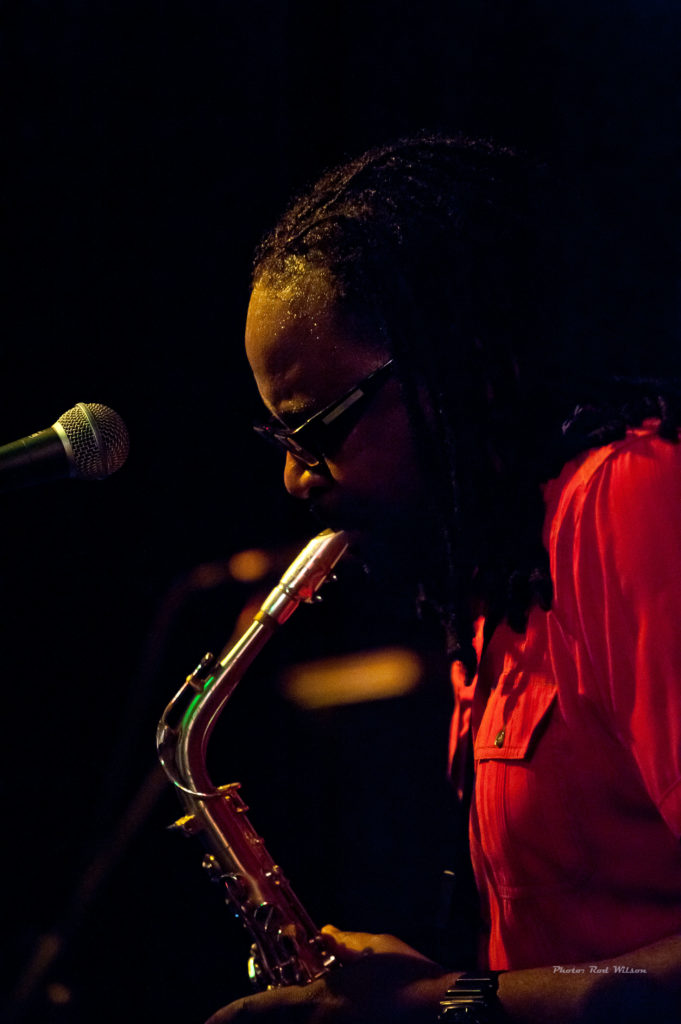
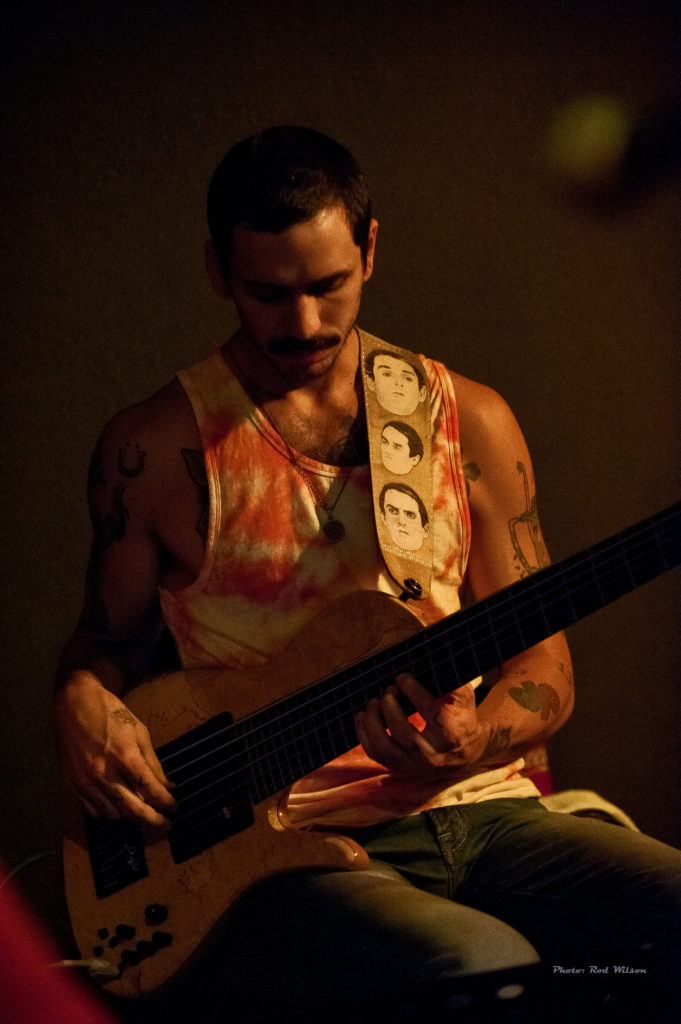
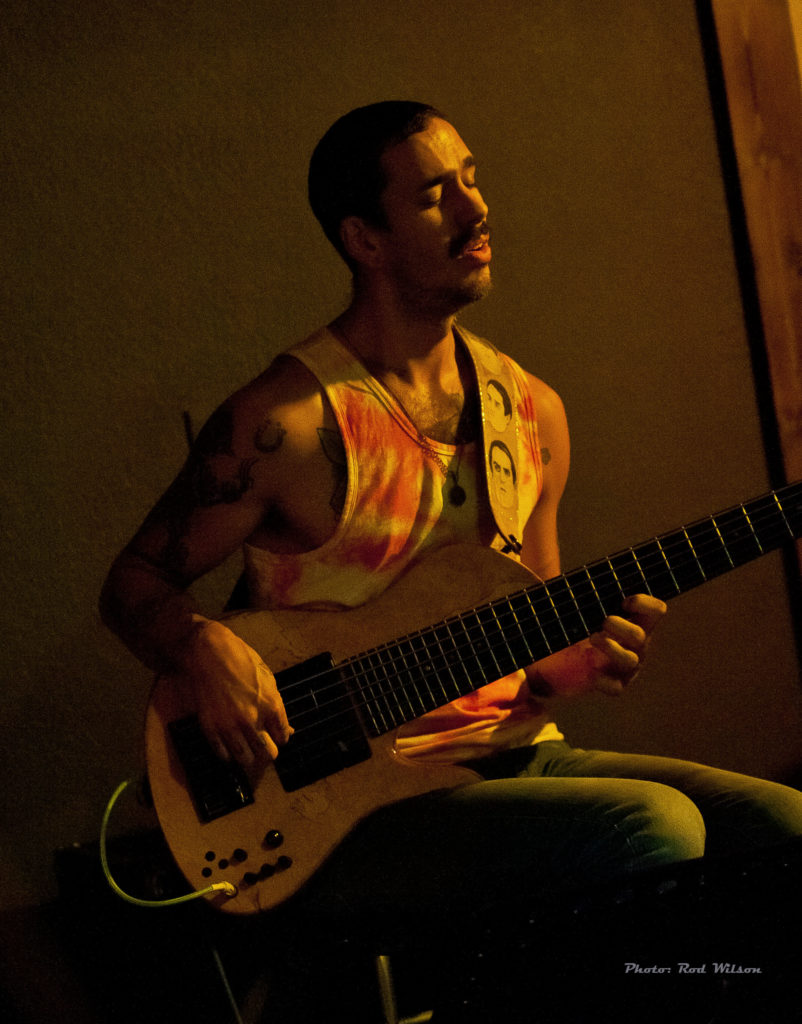
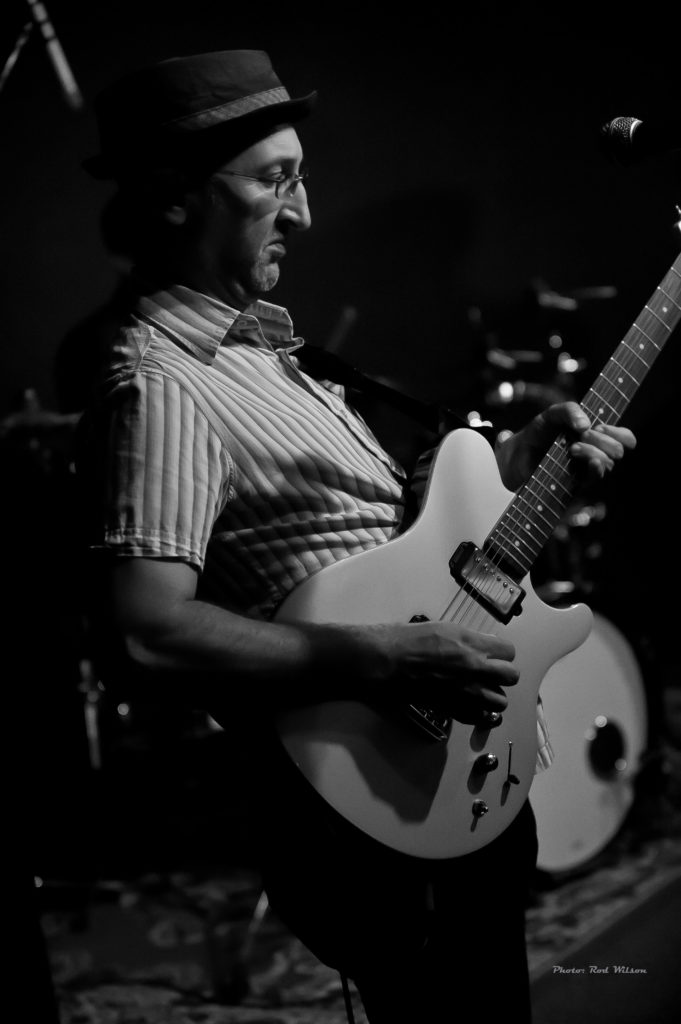
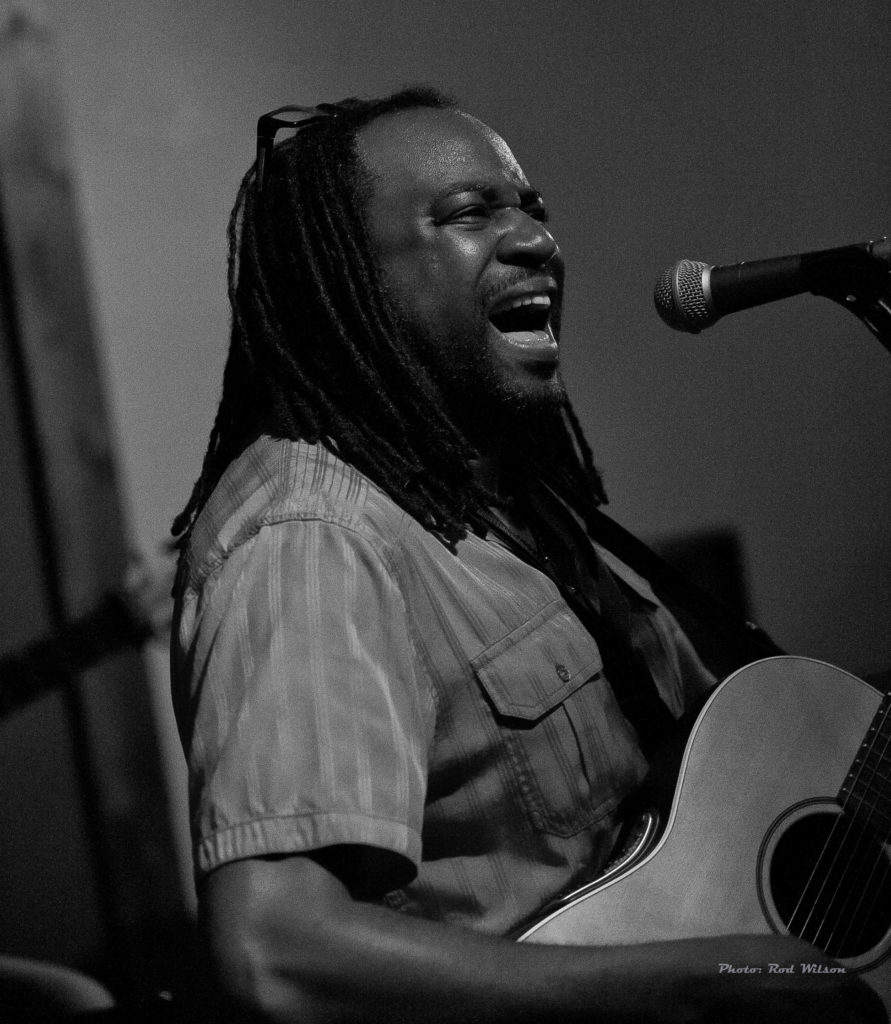
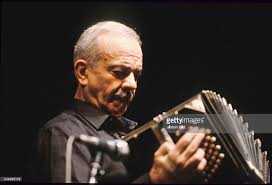 Classical music into a style more suited to modern times. One of the pioneers of this new style was the Argentinian composer and Bandoneon soloist Astor Piazzolla (March 11, 1921 – July 4, 1992). Piazzolla’s Nuevo Tango introduced elements of Jazz, used extended harmonies and dissonance, counterpoint, and ventured into extended compositional forms. In the realms of Argentinean music, both Tango and Classical, Astor Piazzolla is a giant. In bringing about the change in Tango style his efforts have not always been met with universal acclaim. There is one story out there about a traditional Tango musician who, on hearing Astor performing music on radio, threatened to go down to the studio and beat up the musicians.
Classical music into a style more suited to modern times. One of the pioneers of this new style was the Argentinian composer and Bandoneon soloist Astor Piazzolla (March 11, 1921 – July 4, 1992). Piazzolla’s Nuevo Tango introduced elements of Jazz, used extended harmonies and dissonance, counterpoint, and ventured into extended compositional forms. In the realms of Argentinean music, both Tango and Classical, Astor Piazzolla is a giant. In bringing about the change in Tango style his efforts have not always been met with universal acclaim. There is one story out there about a traditional Tango musician who, on hearing Astor performing music on radio, threatened to go down to the studio and beat up the musicians.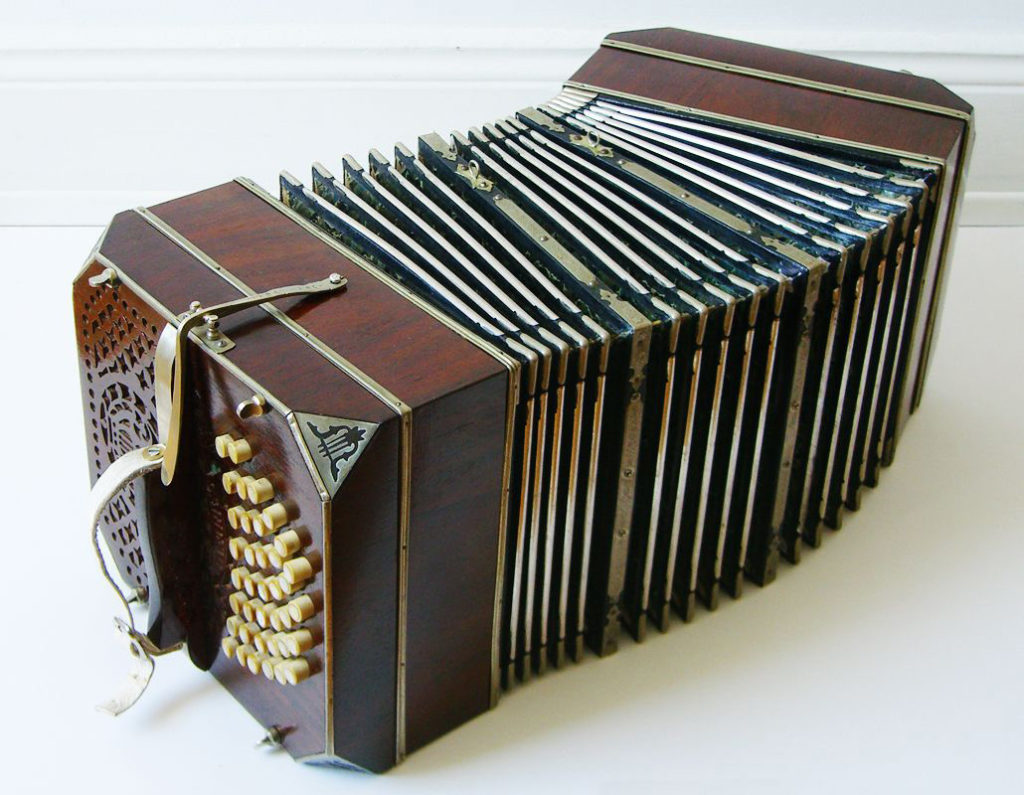 on either the push or pull of the bellows. The Bandoneon, so named by the German instrument dealer, Heinrich Band (1821–1860), was originally intended as an instrument for the religious and popular music
on either the push or pull of the bellows. The Bandoneon, so named by the German instrument dealer, Heinrich Band (1821–1860), was originally intended as an instrument for the religious and popular music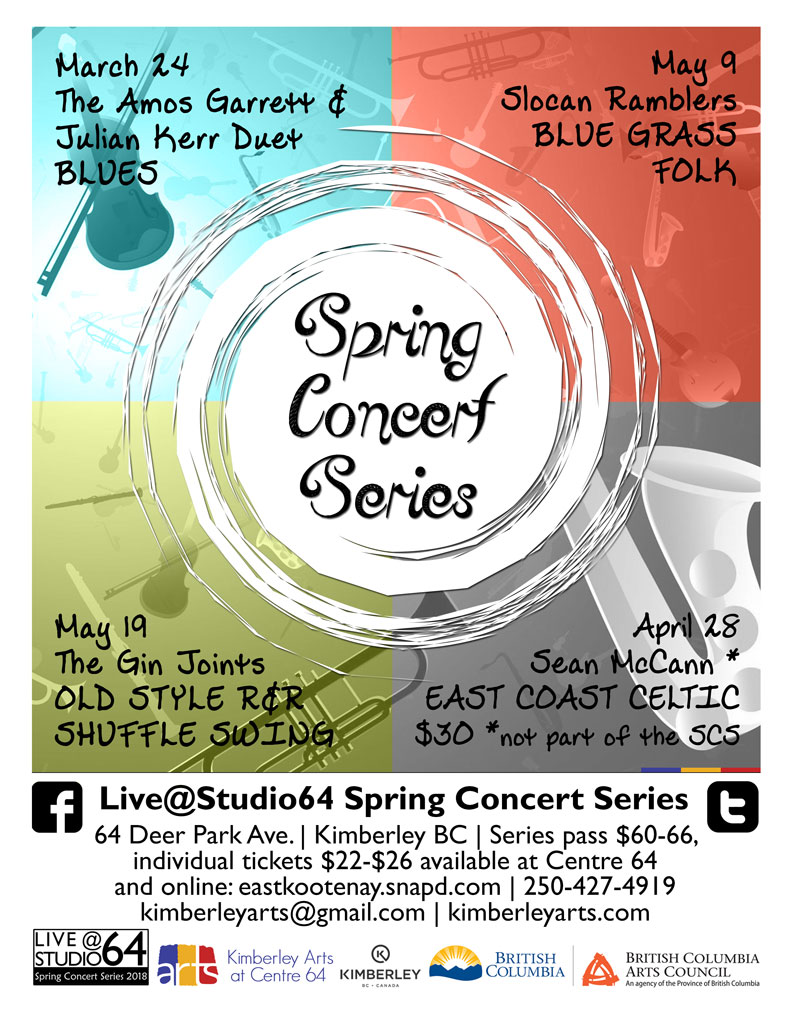 Just a few years back (1993 to 2013) GREAT BIG SEA was an almost unstoppable force in Canadian East Coast music. Over a twenty year period they dominated the
Just a few years back (1993 to 2013) GREAT BIG SEA was an almost unstoppable force in Canadian East Coast music. Over a twenty year period they dominated the 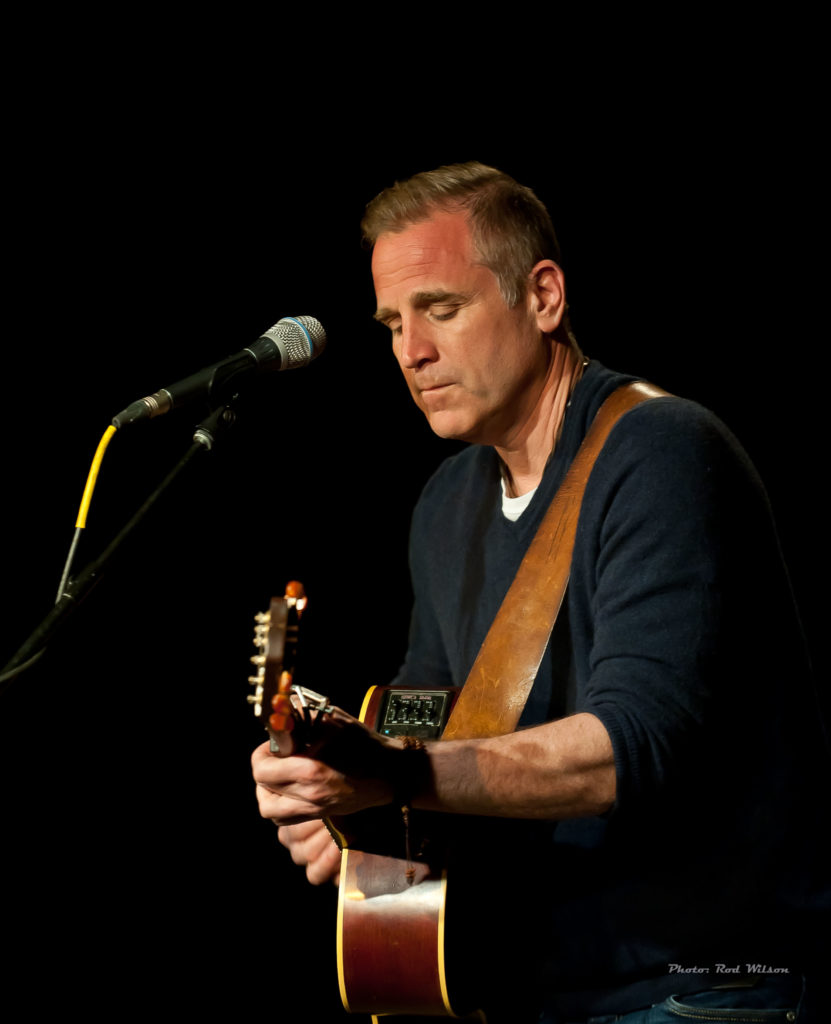 scene with their mix of Newfoundland traditional music and rock and roll sensibilities. A founding member, and key performer, in the group was Sean McCann. Sean is very up front about his motivation to perform. It was about “booze, sex and rock and roll”. But every thing has a price and by 2013 he knew, for his health and family situation, he needed to get off the “Party Bus”. He quit the band and relocated to Ottowa – “That’s where all our tax money goes, so why not.” On his retirement from the band he noted he had been on the road with Great Big Sea for 20 years….. He was 46 years old and it was time to make a change. Great Big Sea struggled on for a while but it was not the same . The band is now in happy retirement. The two
scene with their mix of Newfoundland traditional music and rock and roll sensibilities. A founding member, and key performer, in the group was Sean McCann. Sean is very up front about his motivation to perform. It was about “booze, sex and rock and roll”. But every thing has a price and by 2013 he knew, for his health and family situation, he needed to get off the “Party Bus”. He quit the band and relocated to Ottowa – “That’s where all our tax money goes, so why not.” On his retirement from the band he noted he had been on the road with Great Big Sea for 20 years….. He was 46 years old and it was time to make a change. Great Big Sea struggled on for a while but it was not the same . The band is now in happy retirement. The two 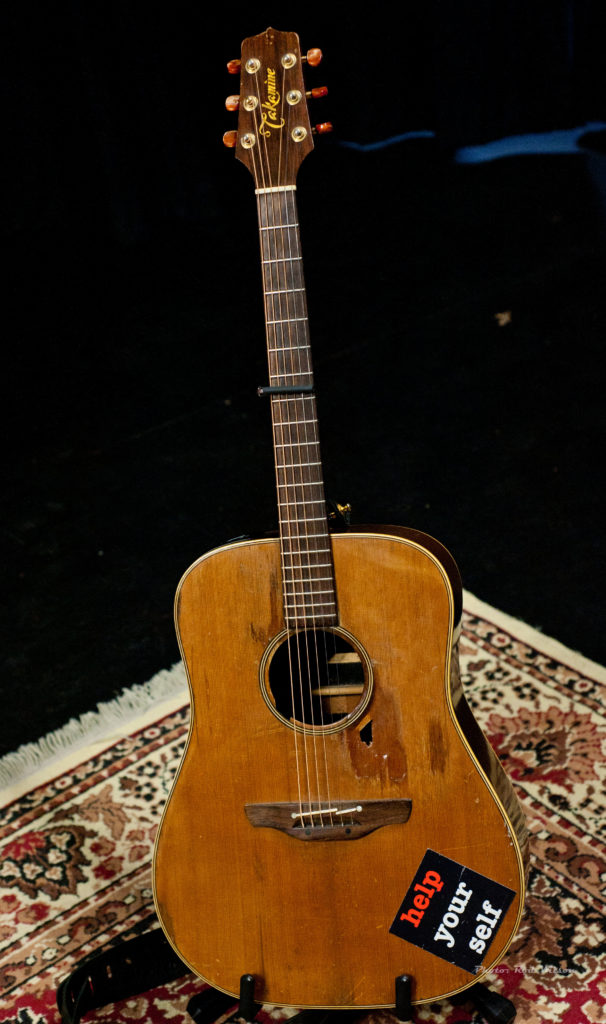 key performers, Alan Doyle and Sean McCann, while still tipping the hat to the “Great Big Sea Repertoire”, have gone onto solo careers.
key performers, Alan Doyle and Sean McCann, while still tipping the hat to the “Great Big Sea Repertoire”, have gone onto solo careers.